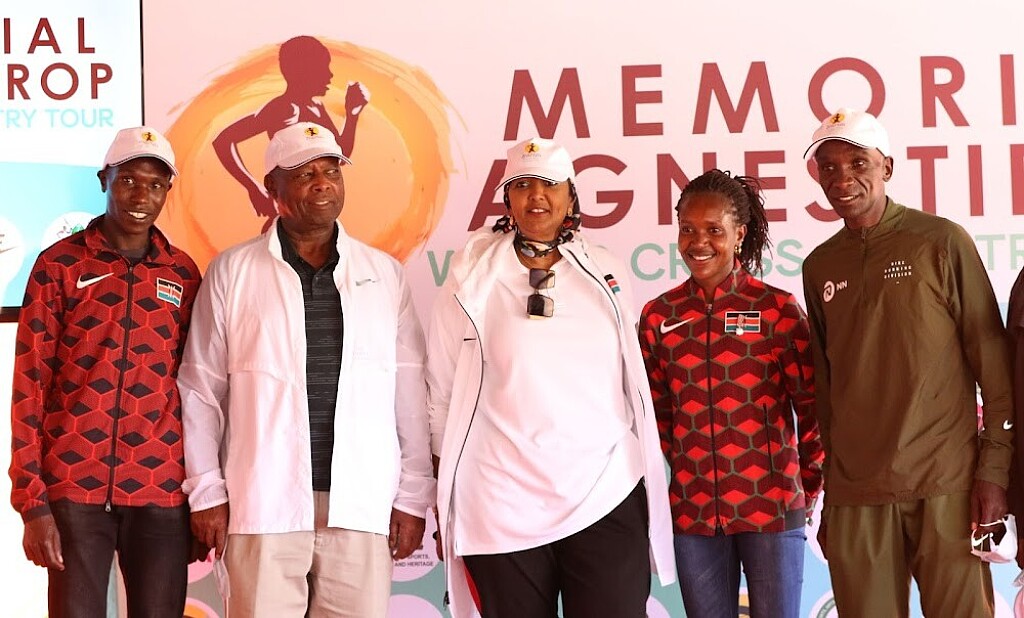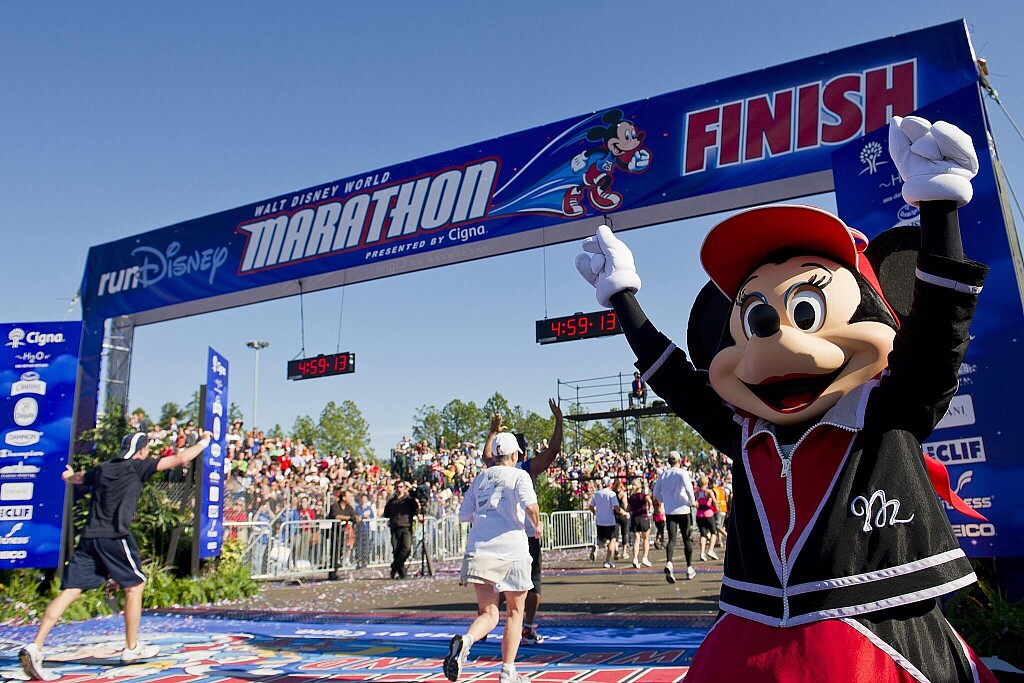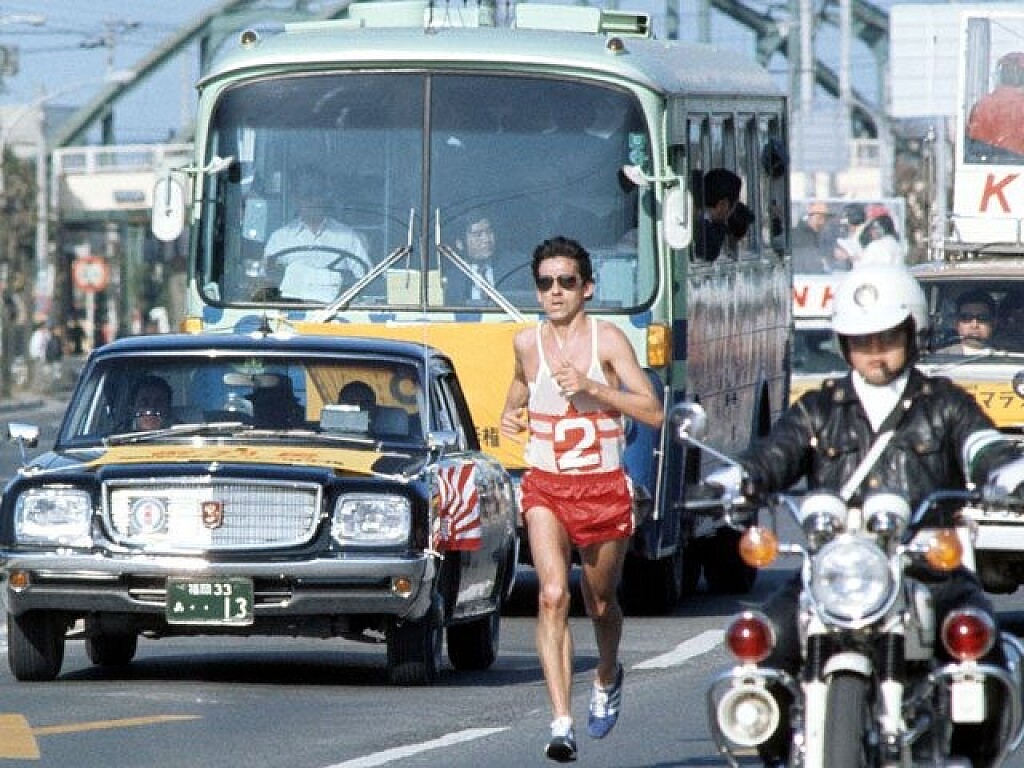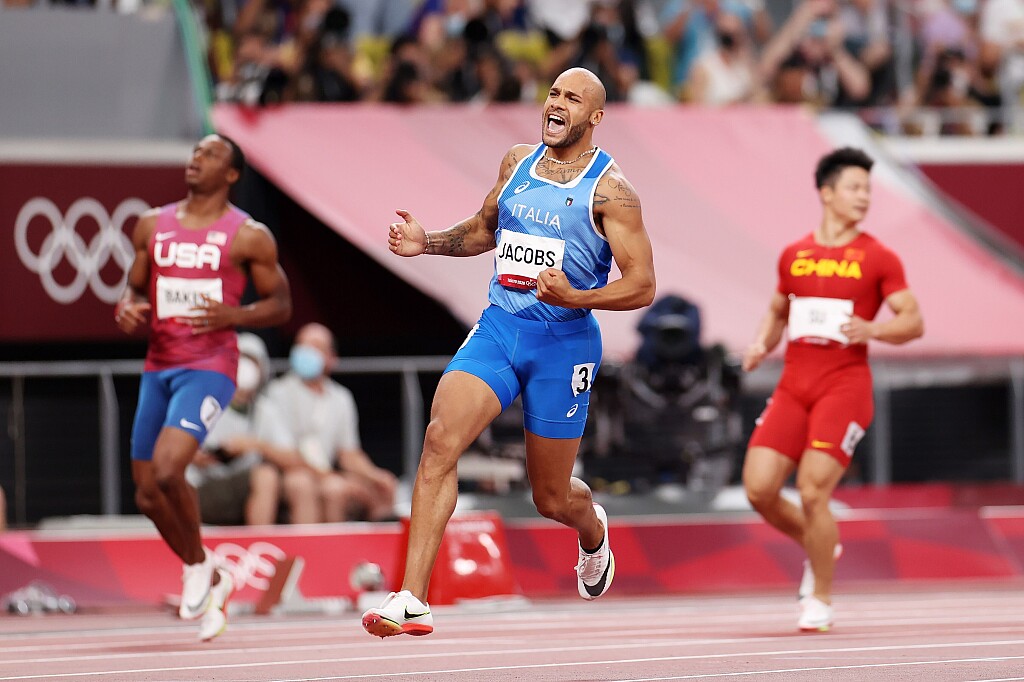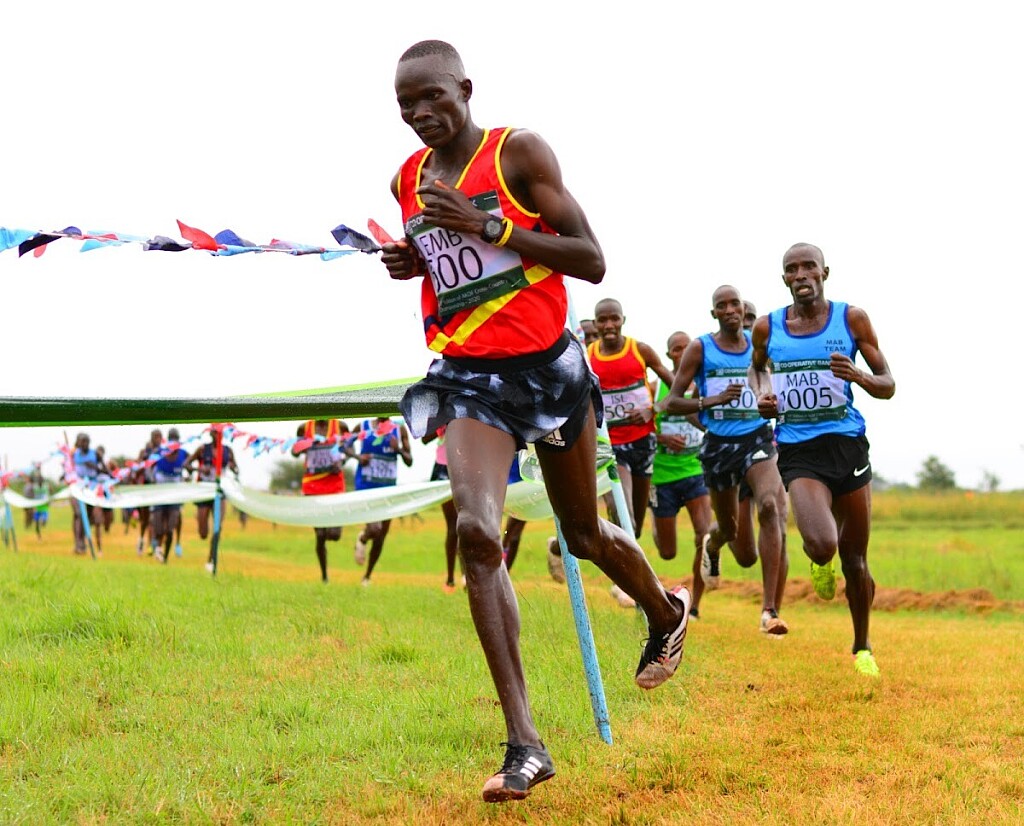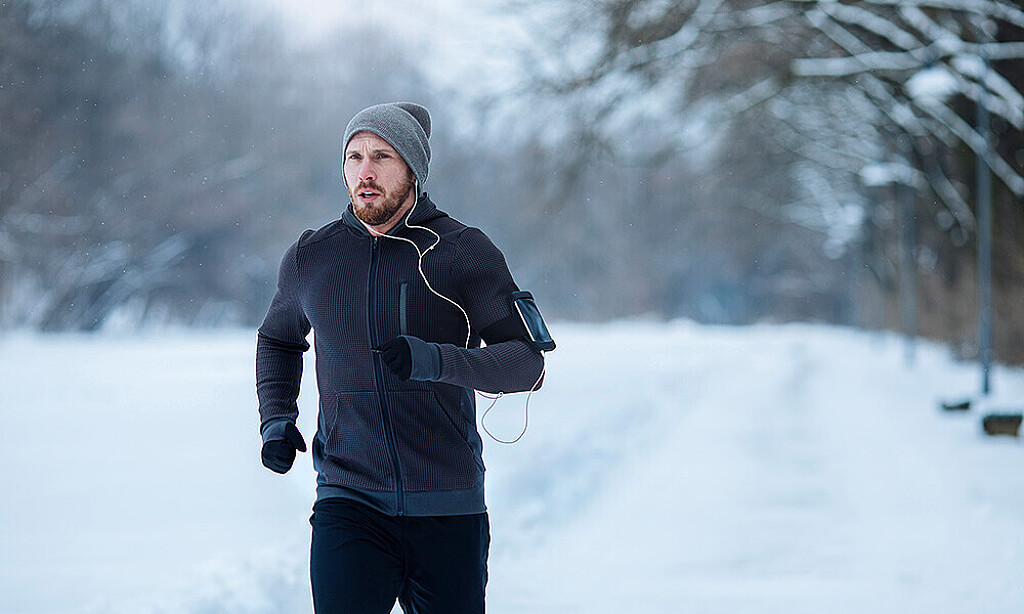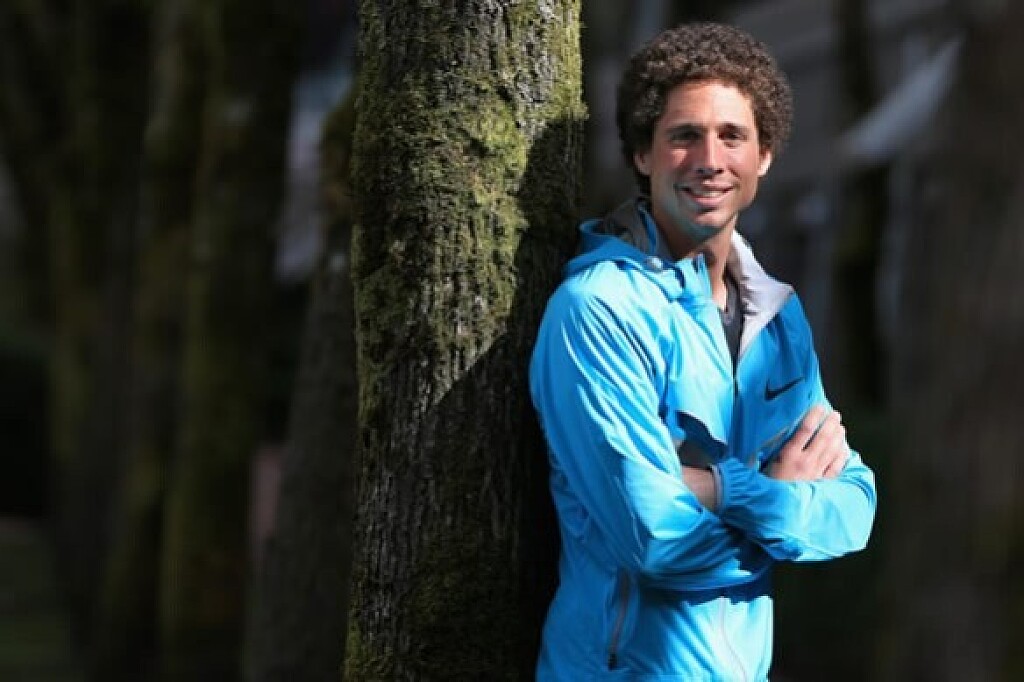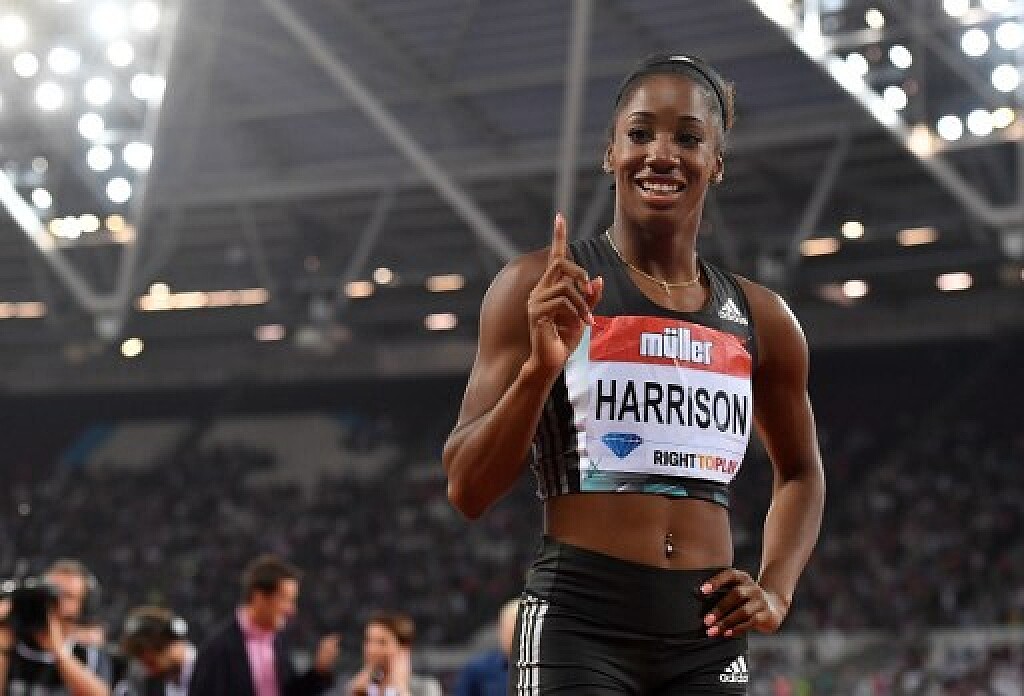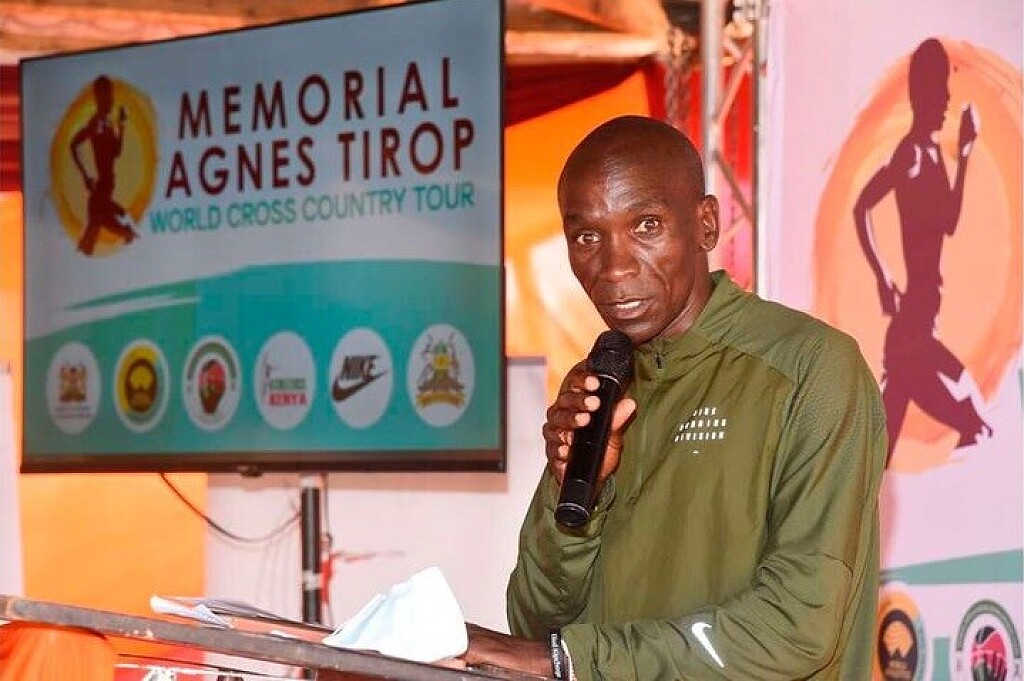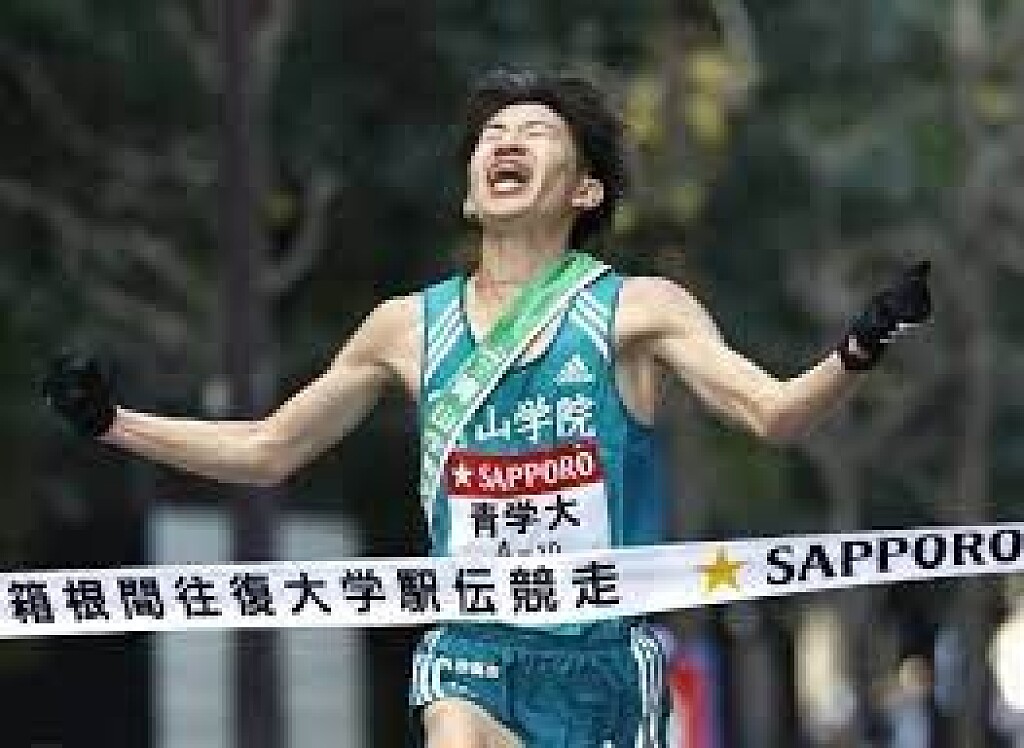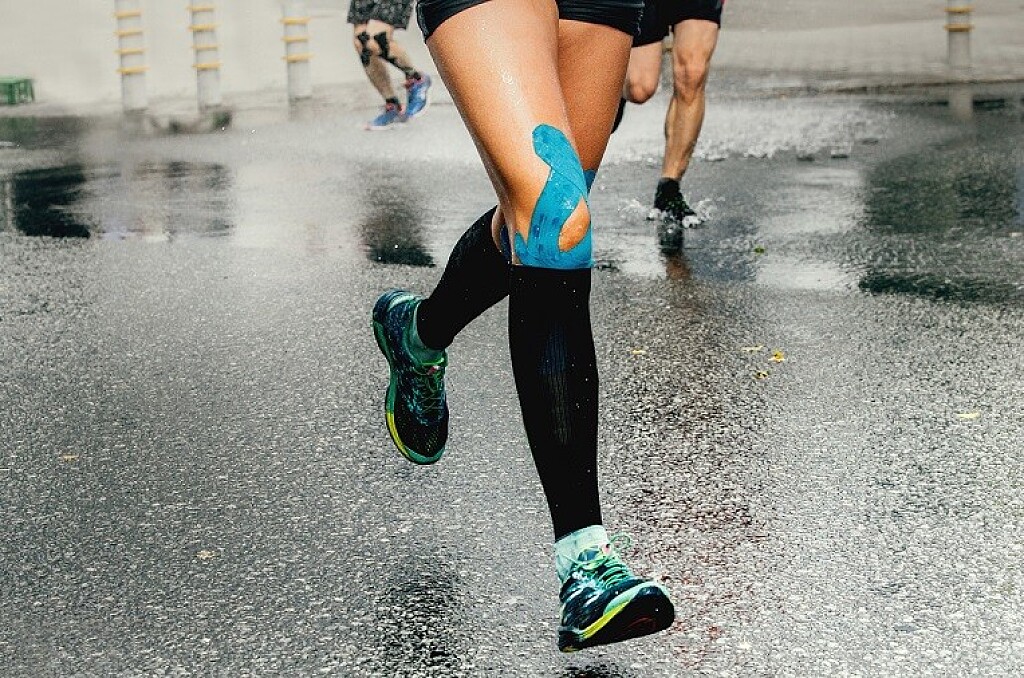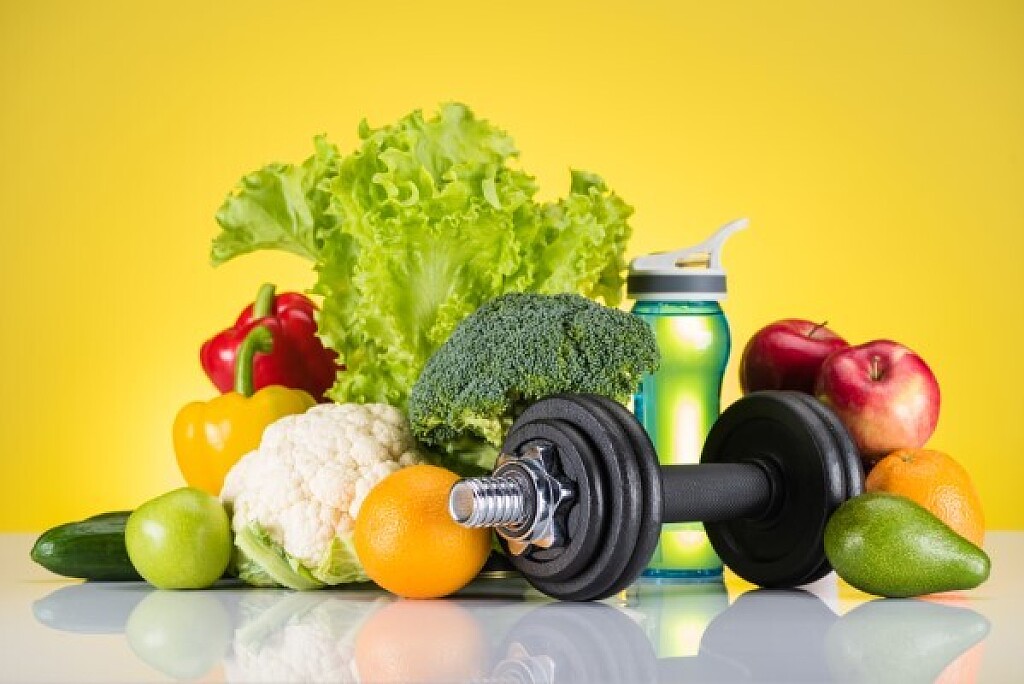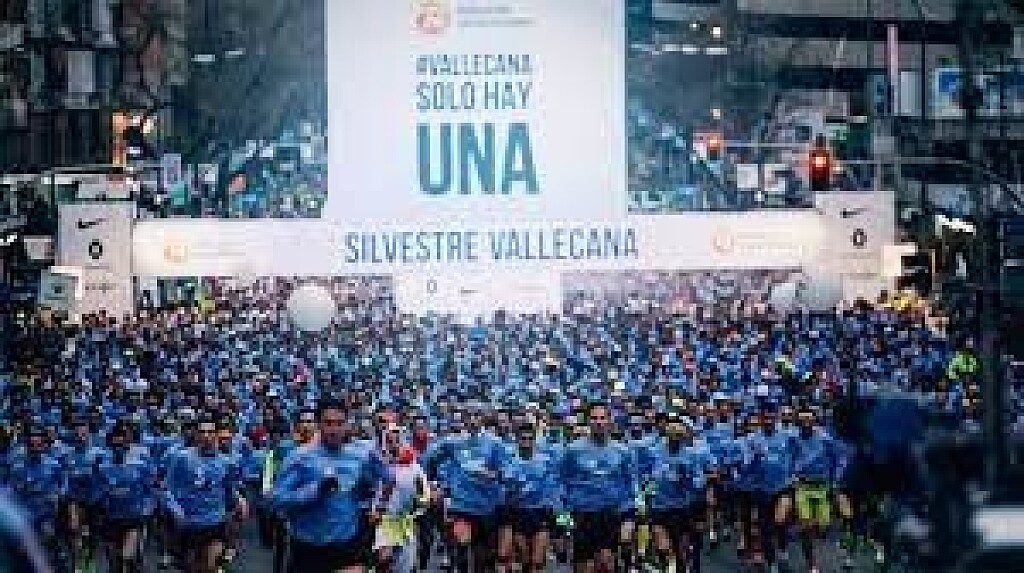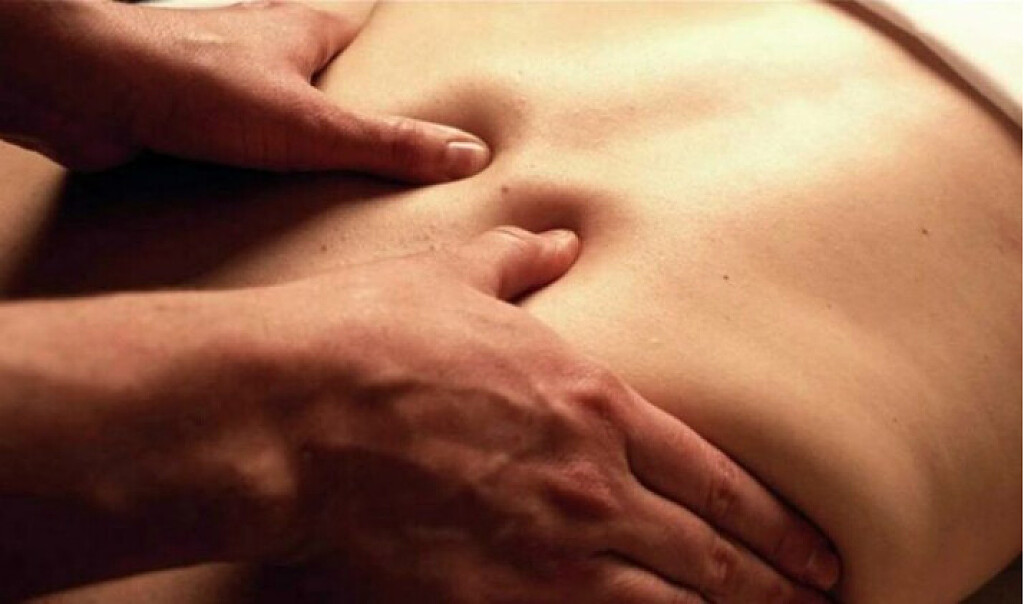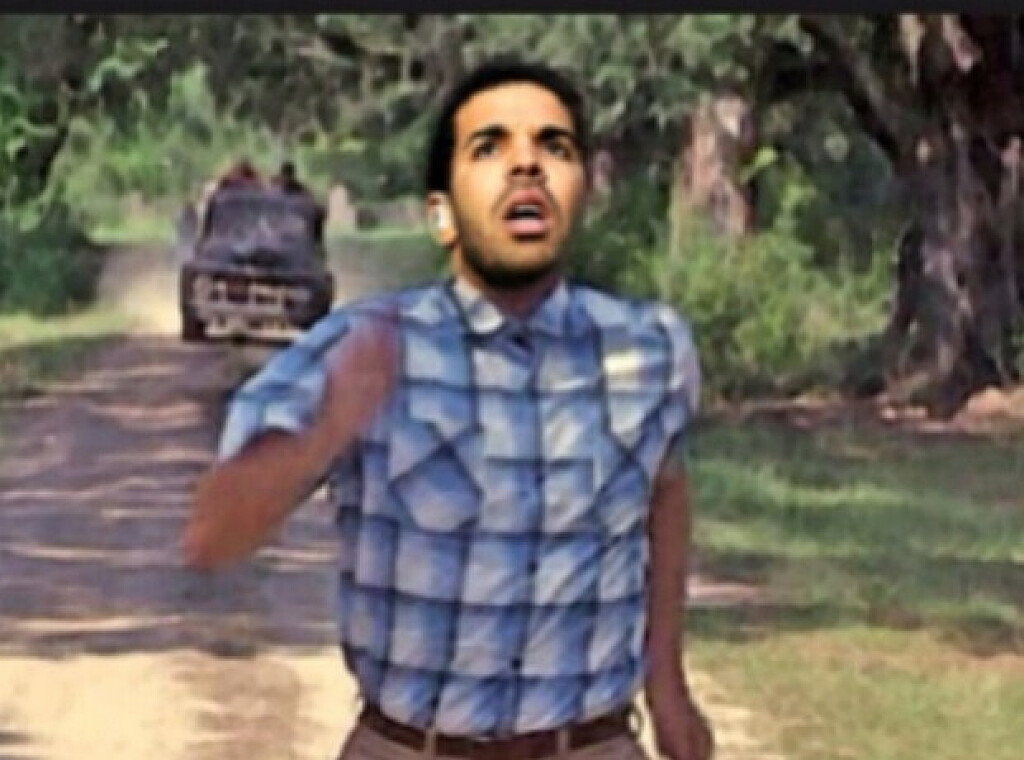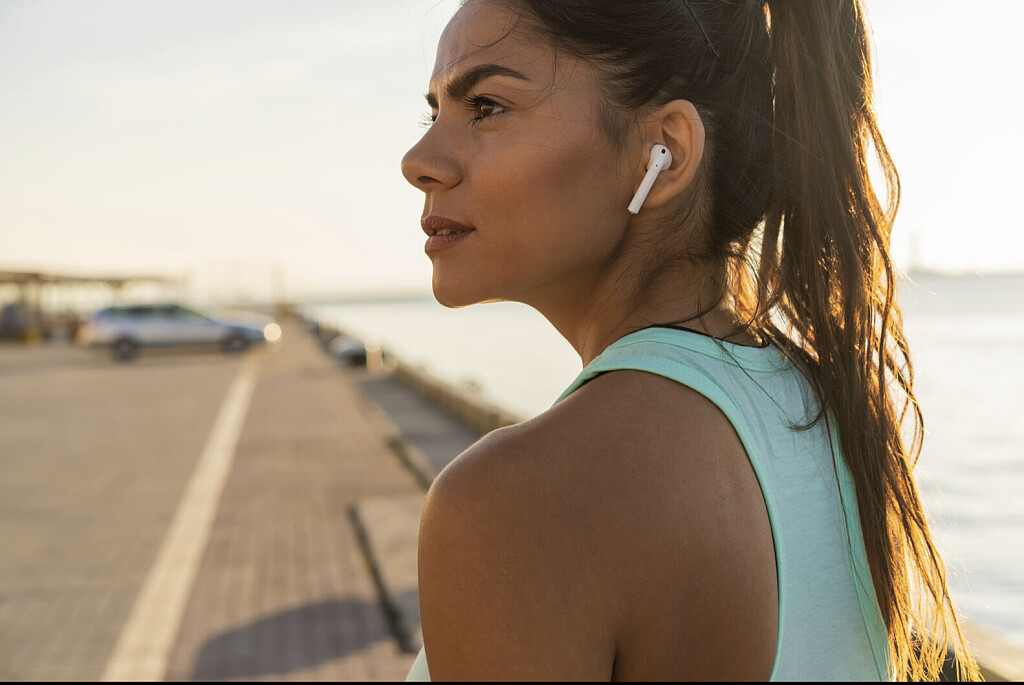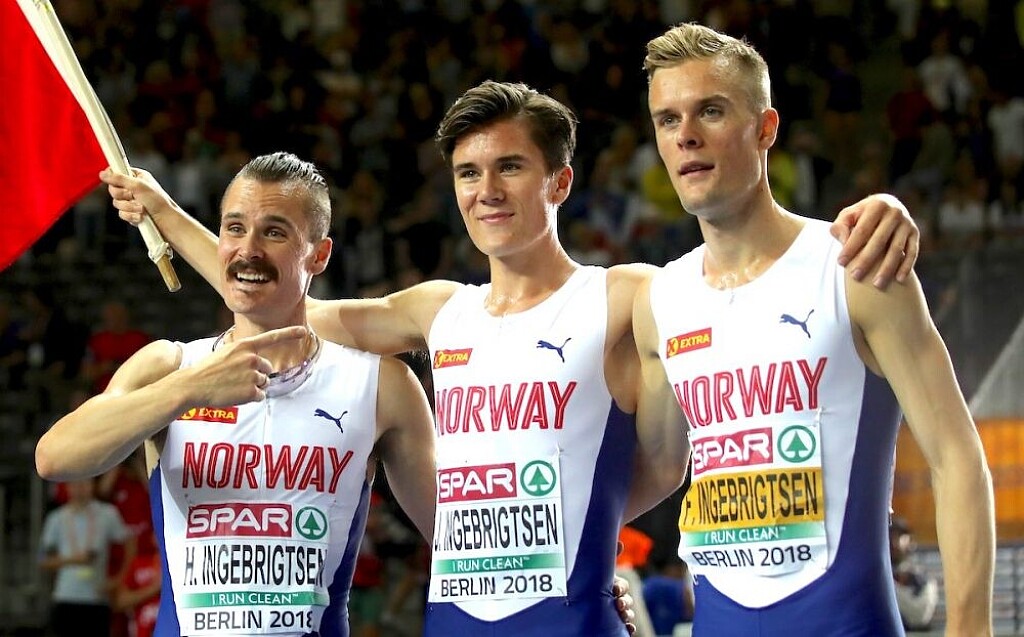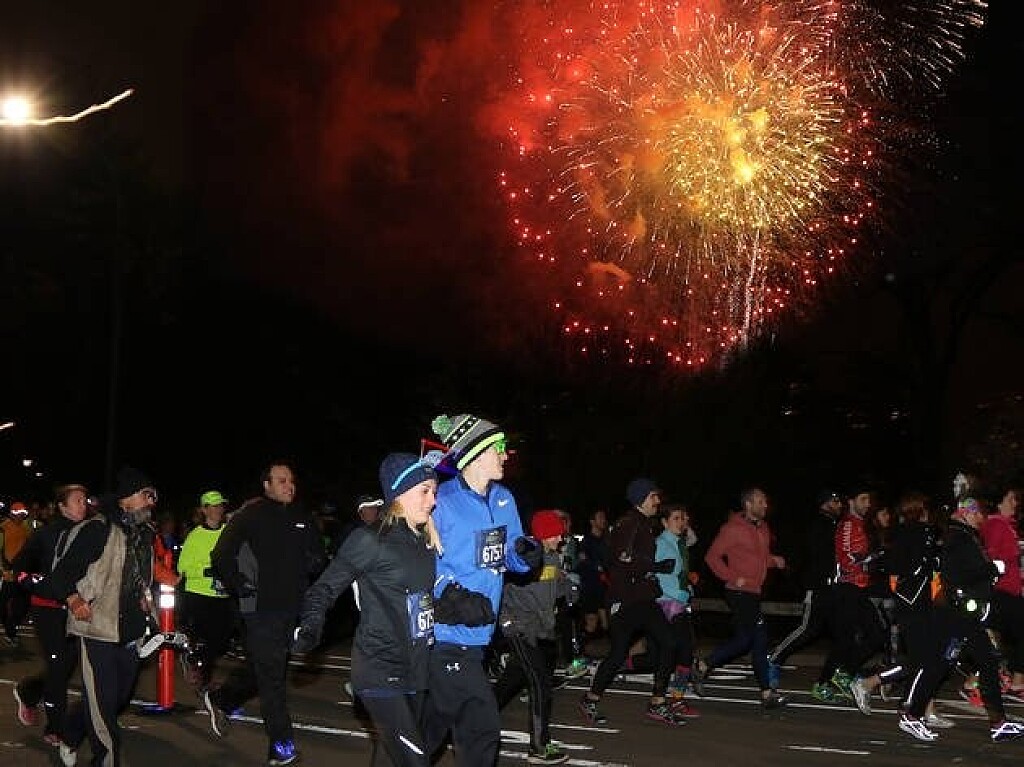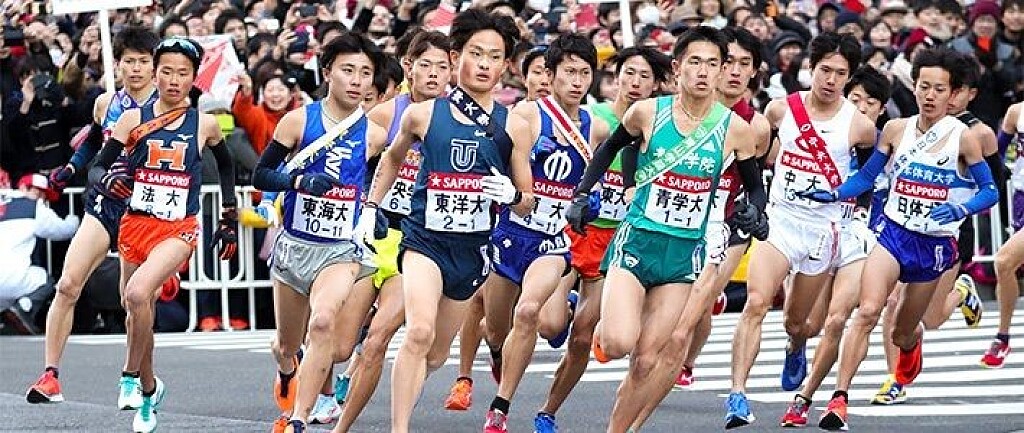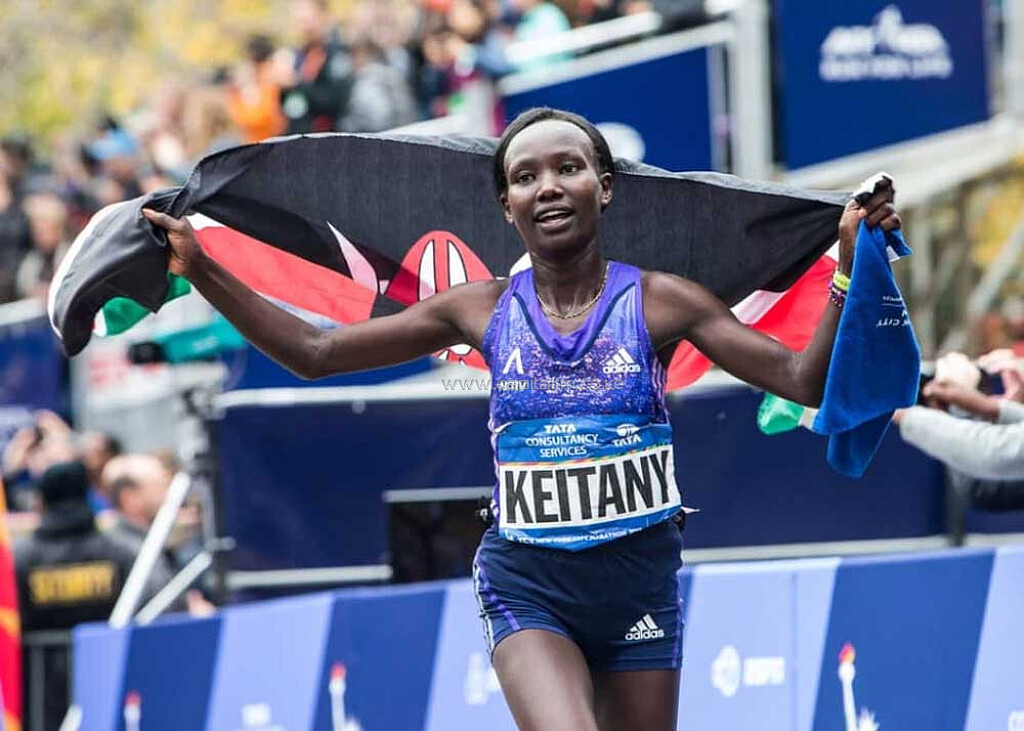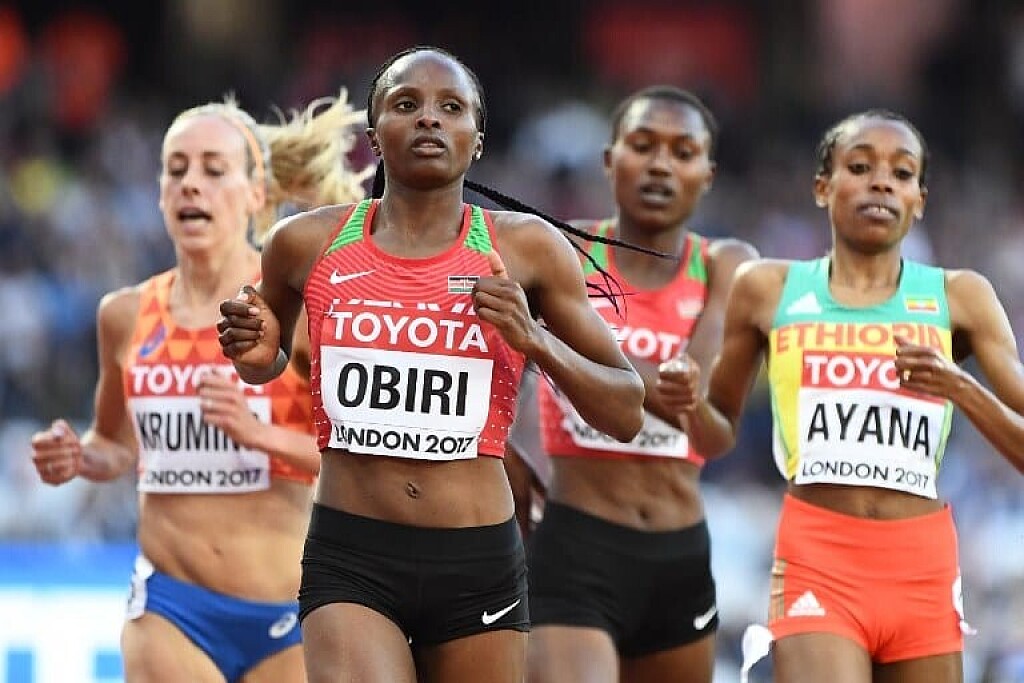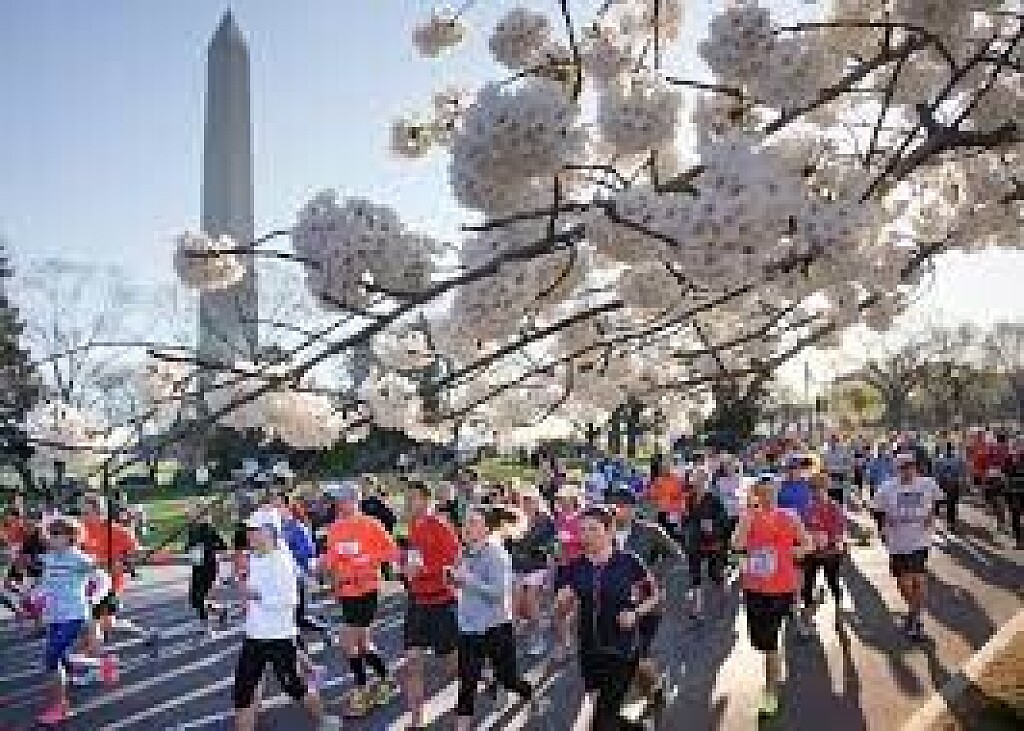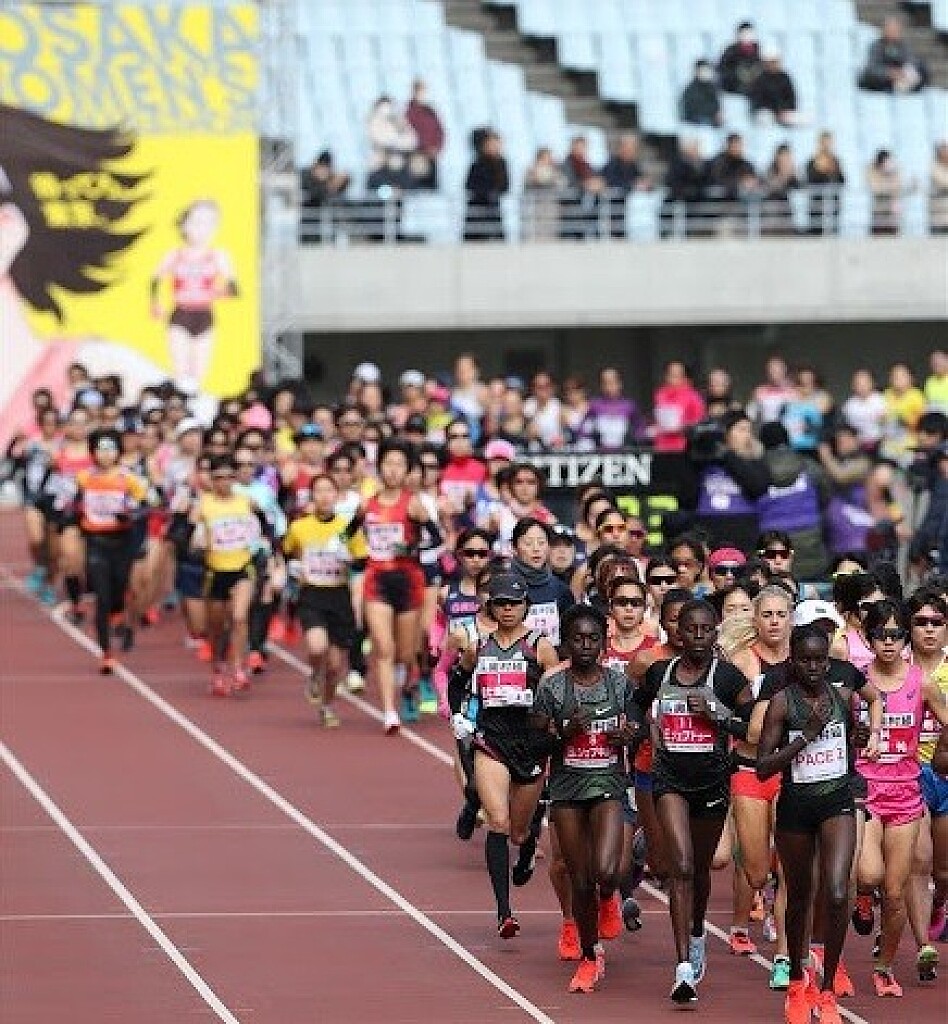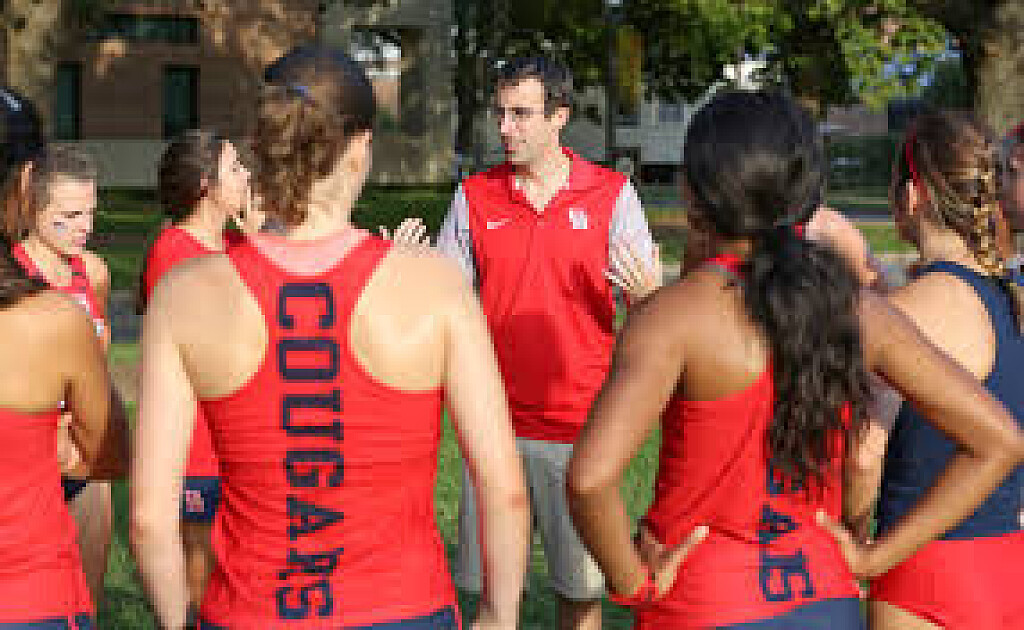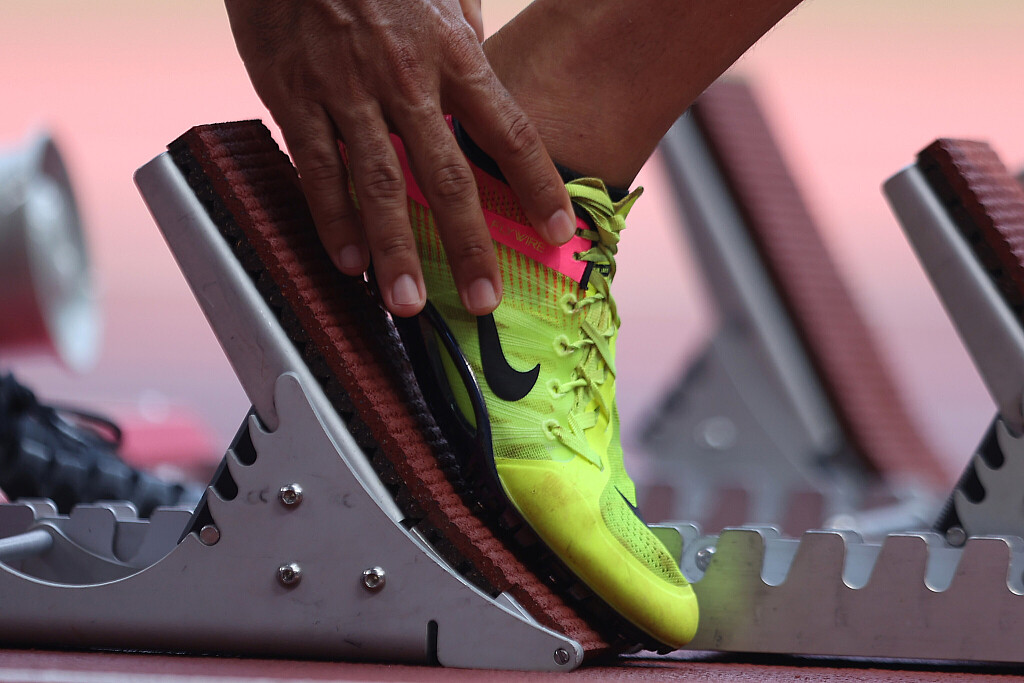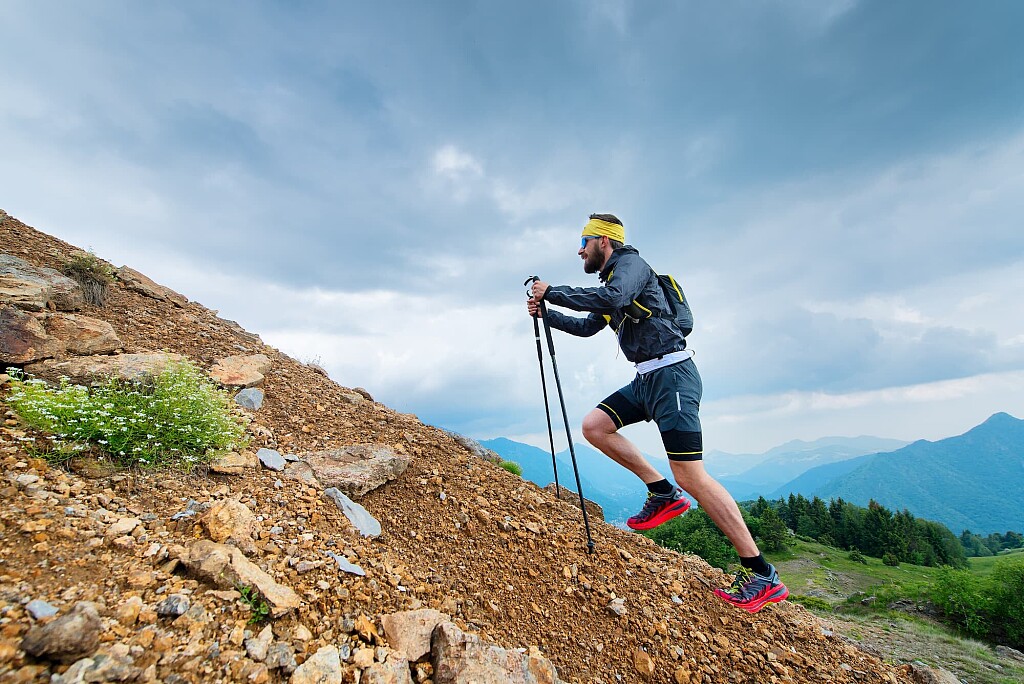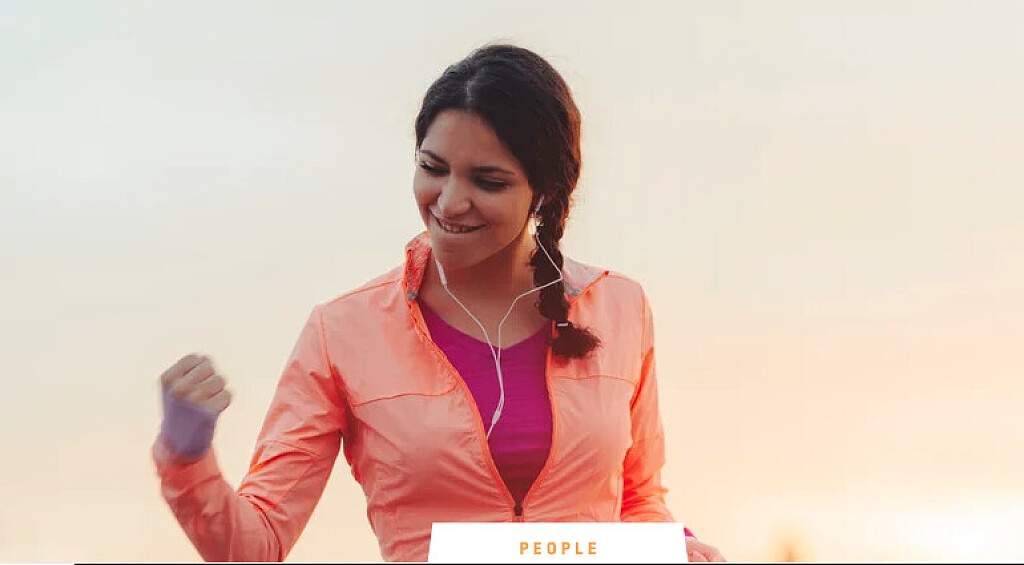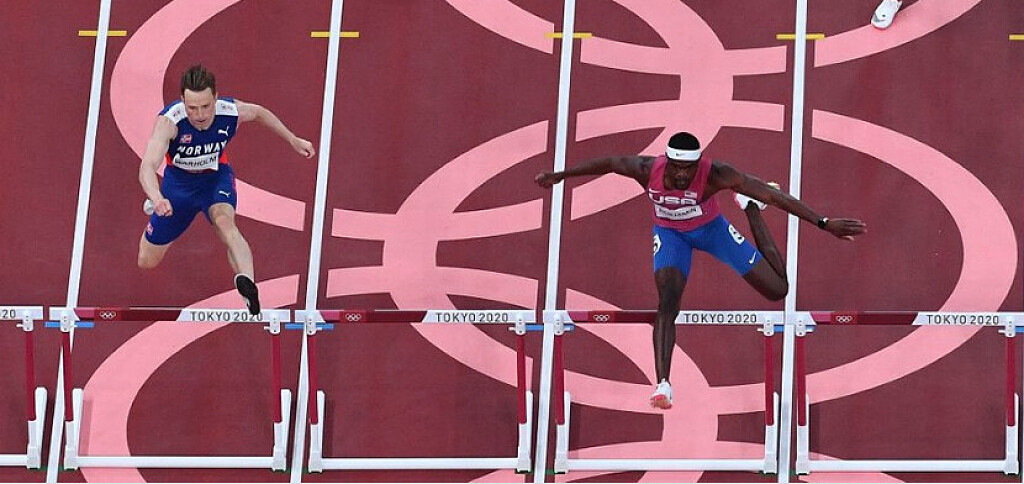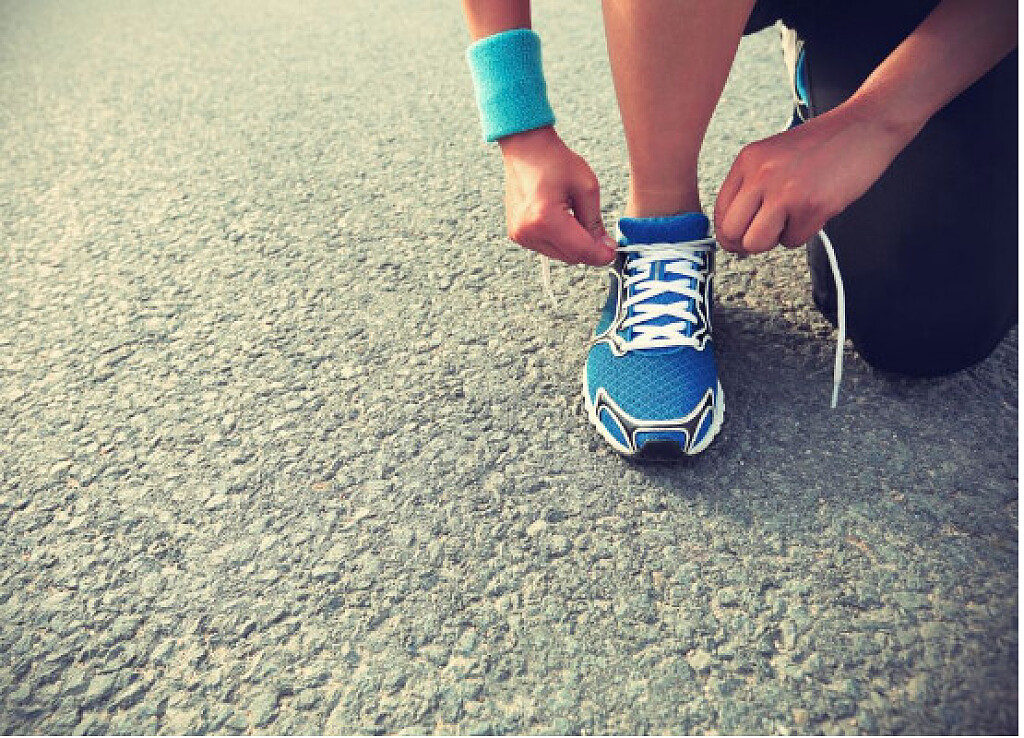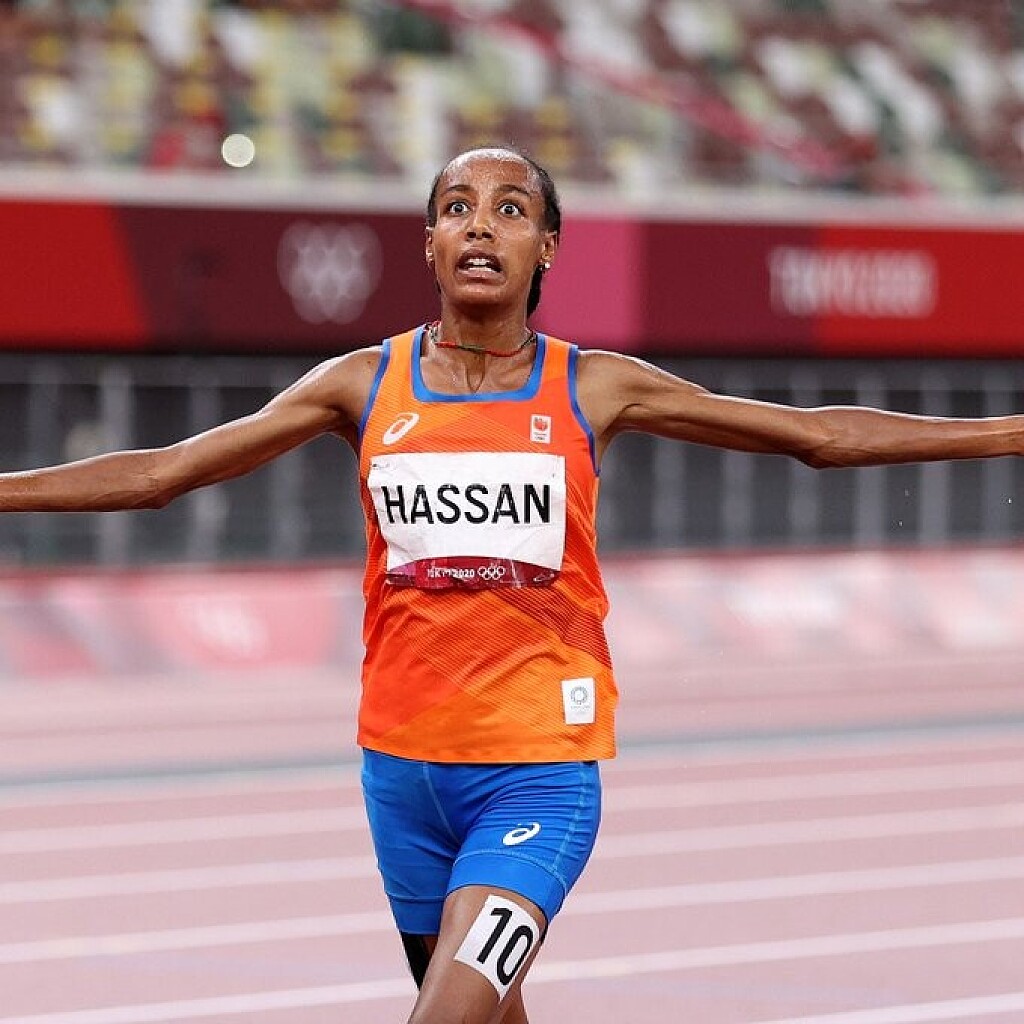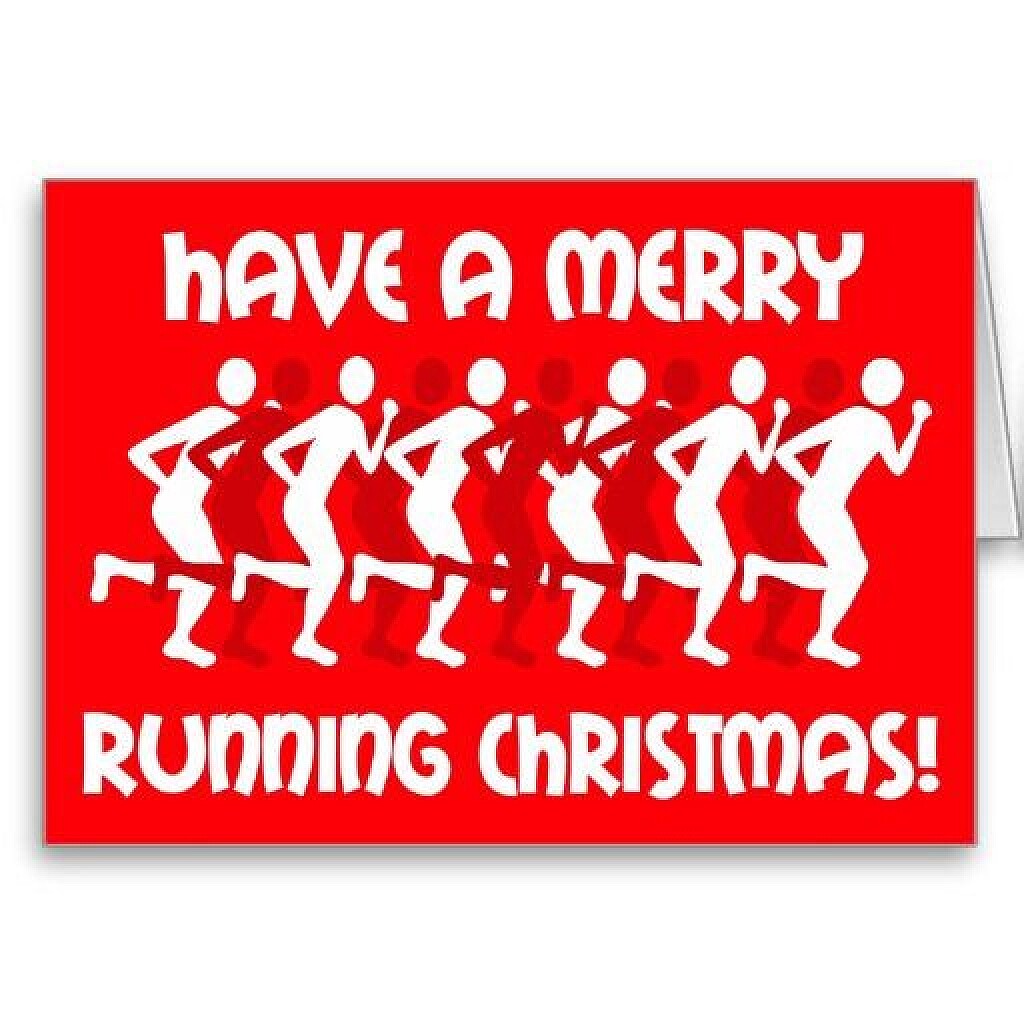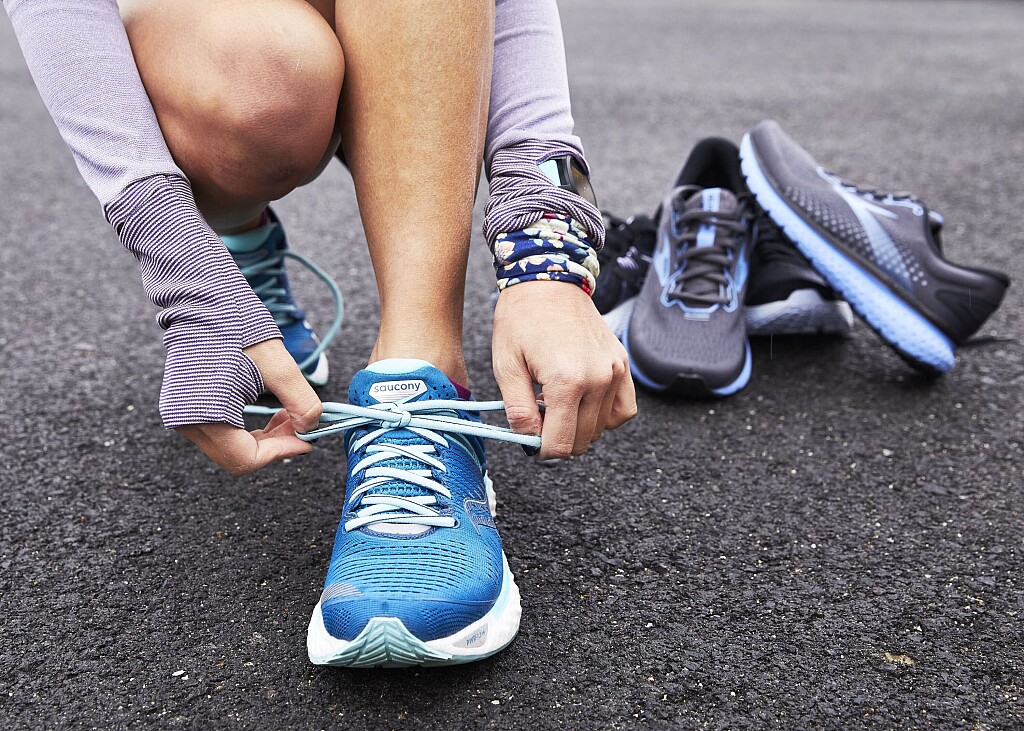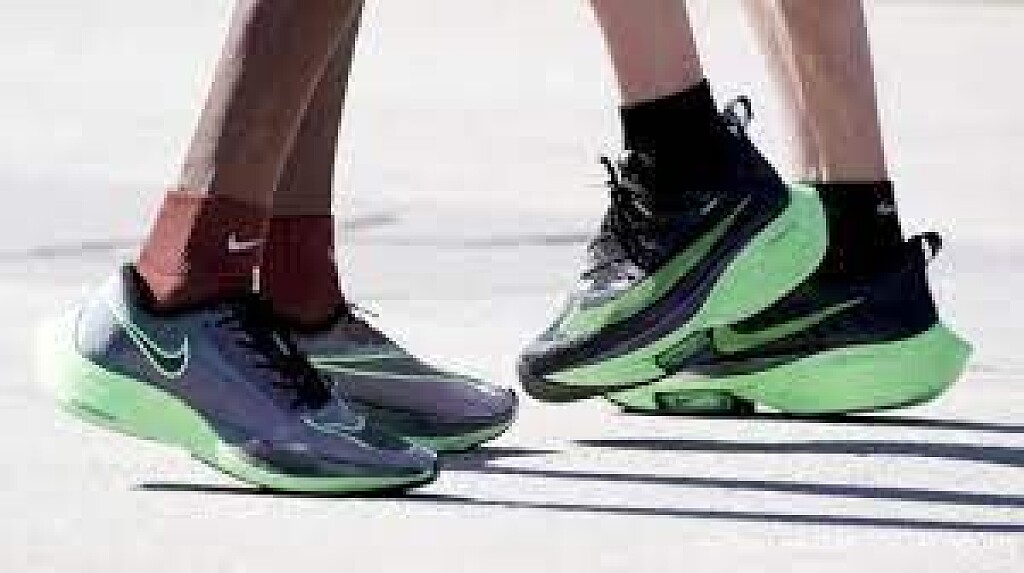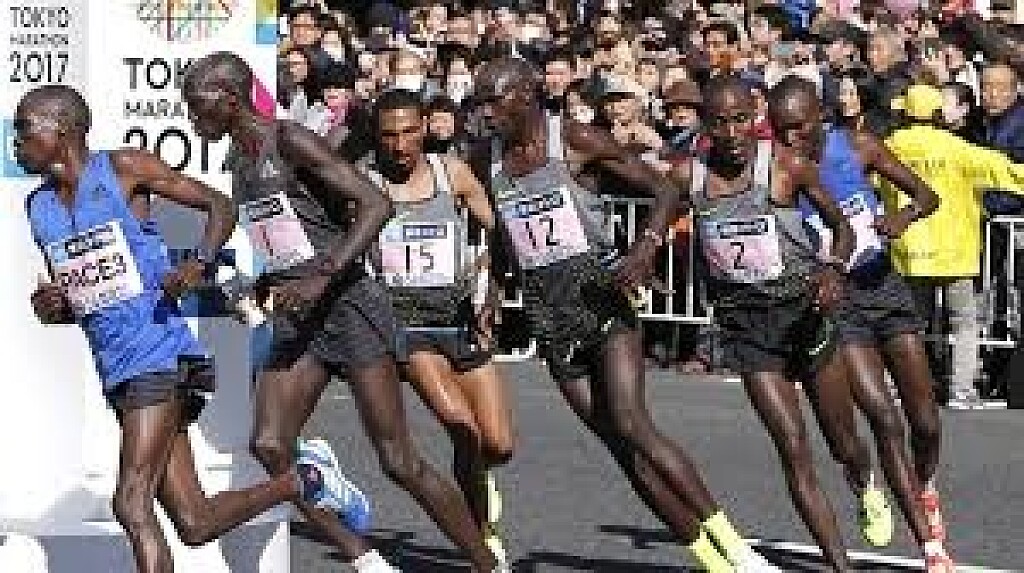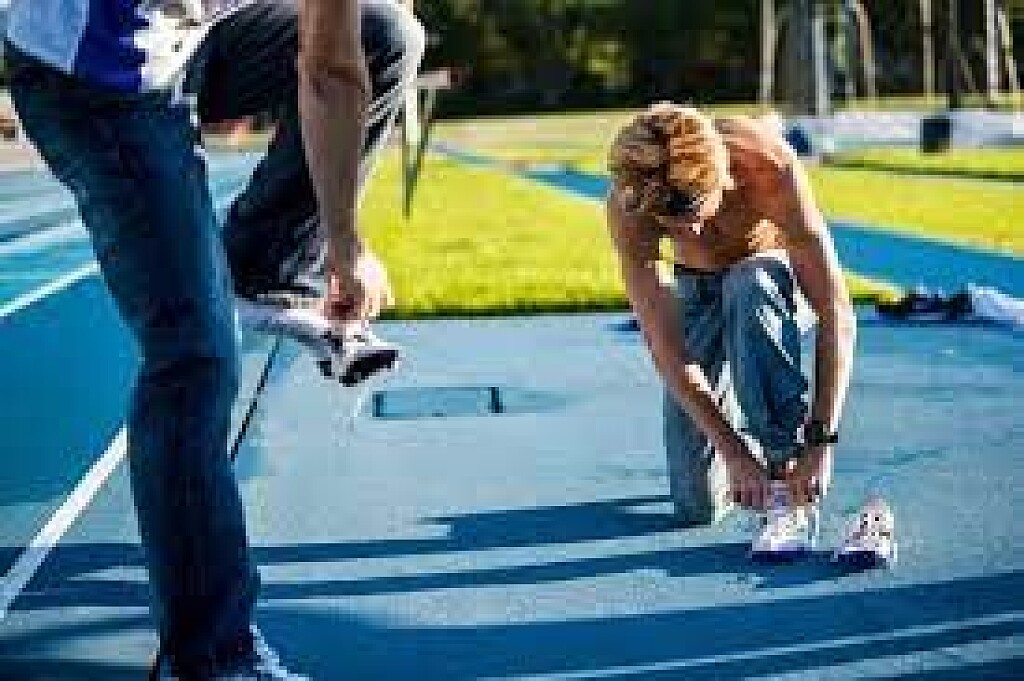Running News Daily
Running News Daily is edited by Bob Anderson in Los Altos California USA and team in Thika Kenya, La Piedad Mexico, Bend Oregon, Chandler Arizona and Monforte da Beira Portugal. Send your news items to bob@mybestruns.com Advertising opportunities available. Train the Kenyan Way at KATA Kenya. (Kenyan Athletics Training Academy) in Thika Kenya. KATA Portugal at Anderson Manor Retreat in central portugal. Learn more about Bob Anderson, MBR publisher and KATA director/owner, take a look at A Long Run the movie covering Bob's 50 race challenge.
Index to Daily Posts · Sign Up For Updates · Run The World Feed
Ontario student athletes petitioning government to open training facilities
In the pre-pandemic era, the beginning of January marked a return to the OUA and OCAA season for many student-athletes, but on Jan. 3, the gov’t of Ontario announced new province-wide restrictions in response to the spread of the Omicron variant of COVID-19, placing a ban on all non-elite sports until the end of January. Athletes across the province are signing a petition for the provincial government to lift restrictions on university and collegiate sports in Ontario to be defined as an “elite-level” sport.
The government’s decision stated that ‘elite-level sports’ can continue to play – the Toronto Six and Toronto Raptors can play, Olympians and Paralympians can continue to prep for Beijing. But, OUA and OCAA coaches and student-athletes are left off the playing field. The current restrictions in Ontario prohibit training in university facilities, as well as indoor meets until at least Jan. 27
t the Tokyo 2020 Olympic Games, there were 37 current and past OUA athletes who represented Team Canada (incl. runners Madeleine Kelly, Lucia Stafford, Gabriela DeBues-Stafford, Julie-Anne Staehli and Alicia Brown).

Before Christmas, Ontario University Sport (OUA) announced they were going to halt all winter competitions due to the ongoing spread of Omicron until Jan. 24, but at that time, athletes were still allowed to practice using university facilities depending on the university’s regulations surrounding Omicron.
The recent announcement leaves OUA athletes without a place to train.

Andrew Davies is an elite-level distance runner with the McMaster Marauders Track & Field team, who has represented Canada at the junior level. “Since we don’t have a useable indoor facility at McMaster, our team was commuting to Guelph once a week to use an indoor track,” Davies says. “The recent restrictions from the government have left us without options in preparation for the indoor season.”
Several OUA-governed indoor track and field meets were supposed to take place in January but have since been cancelled. Many university athletic departments are pushing for their facilities to be opened for varsity teams.
For some senior student-athletes, this season marks their last year of OUA eligibility. “It’s been difficult to plan for races with the uncertainty of the season,” Davies says. “If there were to be further cancellations into February our team would look into options of entering races south of the border.”
The petition for the Ontario provincial government to resume sport has currently gathered over 2,000 signatures.
(01/06/2022) ⚡AMPby Marley Dickinson
Geoffrey Kamworor eager to shine at Cross Country Tour in tribute to Tirop
Former world half marathon record holder Geoffrey Kamworor says he will be running at the World Cross Country Tour on February 12 in memory of 'close friend' and 2015 World Cross Country champion Agnes Tirop.
The inaugural cross country meet has been named Agnes Tirop Memorial World Cross Country Tour in honour of the fallen star who was found murdered in October last year at her home in Iten, Elgeyo Marakwet.

"She was one of my closest friends who always had encouraging words for me whenever we went for competitions. We would advise each other. So it is appropriate that this event be named after her and be held in the City of Champions, which is Eldoret. It is a privilege to run in this race to remember her and of course, to market it as a world-class," Kamworor said.
Despite successes in past cross country races, the 2011 World Junior Cross Country champion says he is not fixated on claiming a podium place in Eldoret.

"Of course, I am naturally a cross country runner but for me, what matters most is to run a good race and remember my good friend Agnes. Other than that, it is difficult to tell how the race will pan out. I have managed to go around the course and it is perfect. I can't wait to run on it," the three-time world half marathon champion said.
It was not a rosy 2021 for Kamworor who began the year on a sour note, pulling out of the men's senior race at the national cross country championship before he had to pull out of the Tokyo Olympics due to an ankle injury.
Nonetheless, the 2017 and 2019 New York Marathon champion is keen to put the underwhelming year past him and focus on upcoming competitions in 2022.
"I don't want to comment much because last year was challenging for a lot of athletes. Many were not able to train effectively but we hope this year will be different and will be able to compete in a majority of competitions," he said.
Kamworor added: "The season is still young; we have just begun the year. I can't say much about my plans for the season but these cross country races are the perfect build-up for this year's competitions."
The 2017 World Cross Country champion is elated by the country's burgeoning reputation as a destination for major athletics events.
"It is wonderful to be competing against other great runners from other parts of the world. Normally, we are used to going outside for international events but this time it is coming home. This shows how Kenya is growing as a host nation for athletics events," he said.
The one-day invitational race will bring together a number of local and foreign athletes, among them, world 5k record holder Letesenbet Gidey of Ethiopia.
(01/06/2022) ⚡AMPby Omondi Onyatta
Runners return for 2022 Walt Disney World Marathon Weekend
Walt Disney World is preparing to welcome back thousands of runners for its popular marathon weekend.
The 2022 event, which steps off Thursday morning, consists of a 5K, 10K, half-marathon, two-course challenge (Goofy’s Race, marathon and half marathon), and Dopey challenge (all races).

This year’s race celebrates Walt Disney World’s 50th anniversary celebration with race themes featuring some of Disney’s most popular characters.
According to runDisney’s website, all races, including virtual options, are sold out.

Race participants can begin picking up their race bibs and t-shirts Wednesday morning at the runDisney Health & Fitness Expo at Disney’s ESPN Wide World of Sports complex.
Health & Fitness Expo hours include:
Wednesday, Jan. 5: 10 a.m. to 8 p.m.
Thursday, Jan. 6: 12 p.m. to 6 p.m.
Friday, Jan. 7: 10 a.m. to 7 p.m.
Saturday, Jan. 8: 11 a.m. to 3 p.m.
The expo is also the place where runners will grab some finisher merchandise including 50th anniversary-themed outfits, drinkware, car magnets and even an ornament.
Disney said while the races are underway, roads around the resort and theme parks may operate under traffic restrictions or be closed to accommodate.
Guests may see these closures Jan. 8-9 from 4 a.m. to 9 a.m.
Back in November, Disney welcomed back in-person running events since the pandemic began.
(01/06/2022) ⚡AMPWalt Disney World Marathon Weekend
Come join Mickey and friends for an extraordinary race weekend—put your endurance through the paces, enjoy amazing entertainment and earn commemorative medals. Dare to test your limits? Try a multi-race challenge for the chance to earn even more medals. No matter your skill level, you'll be a part of a community of fun-spirited runners—uniquely Disney! ...
more...What would Jerome Drayton’s marathon time be with today’s shoe technology?
At Japan’s Fukuoka Marathon in 1975, Canada’s Jerome Drayton smashed his Canadian record from 1969 to win the marathon in 2:10:09 – a record that stood for 43 years until Cam Levins broke it at the 2018 Toronto Waterfront Marathon (2:09:25). When Levins set the record, he ran in the Hoka Carbon Rocket X, a shoe with carbon-plated technology Drayton did not have 43 years prior. Both times are remarkable, but it brings into question what Drayton’s time would translate to today if he had had carbon-plated shoes.
In the 70s, the Fukuoka Marathon had the reputation as the unofficial world championship, as organizers would invite the best marathoners from around the world to Fukuoka to compete. Drayton won the race three times in seven years, beating the likes of marathon greats American Frank Shorter and Japan’s Shigeru So (who held the world record from 1978 to 1980).

When Drayton set his record he wasn’t wearing the Adidas Adizero Pro or Nike Vaporfly. He had the Adidas SL76 on his feet, which was described as ‘the shoes for all seasons,’ built for pounding the roads in the marathon and jogging around the block. The shoe featured super-light technology, a ghillie loop lacing system and an EVA midsole – in short, a lightweight, flat running shoe.
In a 2021 video from Brigham Young University student Easton Allred, he discussed the development of carbon-plated shoes with a professor of biomechanics, Dr. Iain Hunter, who studies how people can run faster by the way they move. The two discussed whether carbon-plated shoes affect athletic performance and how much time they could take off each kilometre.

Hunter found that the top carbon plated shoes can take off two to three seconds per kilometer.
If you take Drayton’s time of 2:10:09 and take two seconds off each kilometre, it correlates to approximately 84 seconds off his time (2:08:45). Again, this calculation is hypothetical, but that time would be a record and untouched by any Canadian runner to this day.
(01/06/2022) ⚡AMPby Marley Dickinson
Fukuoka Marathon
The Fukuoka International Open Marathon Championship is one of the longest running races in Japan, it is alsoan international men’s marathon race established in 1947. The course record is held by Tsegaye Kebede of Ethiopia, running 2:05:18 in 2009. Frank Shorter won first straight years from 1971 to 1974. Derek Clayton set the World Record here in 1967 running 2:09:37. ...
more...Olympic 100m champion Marcell Jacobs will compete at the World Athletics Indoor Tour Gold meeting in Lievin
Organizers of the Meeting Hauts-de-France Pas-de-Calais have confirmed that Olympic 100m champion Marcell Jacobs will compete at the World Athletics Indoor Tour Gold meeting in Lievin on February 17.
The Italian sprinter achieved his first victory of 2021 in the French town last year, winning the 60m in 6.54, a PB at the time. He went on to improve his 60m best to a world-leading 6.47 one month later when winning the European indoor title in Torun.

That was just a taste of what was to come, though. His breakthrough continued outdoors with an Italian 100m record of 9.95 in Savona, then a victory in Silesia before a couple of top-three placings in Diamond League meetings. He timed his peak to perfection in Tokyo, winning 100m gold in a European record of 9.80.

Five days later, he formed part of Italy’s victorious 4x100m squad, winning another Olympic gold in a world-leading national record of 37.50.
The Meeting Hauts-de-France Pas-de-Calais is one of seven Gold-level World Indoor Tour meetings this year. Last year’s edition was highlighted by a world indoor 1500m record from Gudaf Tsegay as well as world-leading performances from Jakob Ingebrigtsen over 1500m and Getnet Wale over 3000m.
(01/05/2022) ⚡AMPby World Athletics
Kibiwott Kandie eyes another KDF X-country title, as part of his preparations for the track season
World Half Marathon Championships silver medalist Kibiwott Kandie intends to use the Kenya Defence Forces (KDF) Cross Country Championships on Friday at Moi Air Base as part of his preparations for the track season.
Kandie, who will be seeking his fourth consecutive KDF title, said that he will focus on the 10,000 meters this season as he targets the Commonwealth Games and World Athletics Championships.

The World Athletics Championships will be held on July 15 to July 24 in Oregon, United States, while the Commonwealth Games are due on July 28 to August 8 in Birmingham, United Kingdom.
Iten-based Kandie said that he failed to perform as expected last year after he fell short in training. A nagging right knee injury also worsened things for the former half marathon world record holder.

“I think I over strained and that affected my performance,” said Kandie, who started 2021 with victory in the 10,000m in a personal best of 28:28.0 at the Athletics Kenya Weekend Meeting in February.
Familiar foes
Kandie said running under 29 minutes last year was a clear indication he can do well on the track.
At the same time, reigning World Cross Country Championship winner Hellen Obiri will be seeking her fifth KDF crown on Friday.
Obiri, the world 5,000m champion, recaptured the title in January last year when she beat defending champion Joyce Chepkemoi to second place in 33 minutes 25.1 seconds.
Sheila Chepkurui completed the podium followed by Nesphine Chepleting and Irene Kamais in fourth and fifth place, respectively.
Obiri, the Olympic 5,000m silver medalist, claimed previous wins in 2014, 2017 and 2019.
Obiri, Chepkemoi, Chepkurui, Chepleting and Kamais will be joined by former champion Joycilline Jepkopsgei, who is fresh from winning the London Marathon in October.
KDF first vice chairman Alfred Olenawangas said the event will have familiar faces.
“We expect a full house with most of our athletes having resumed training ahead of the busy 2022 season,” he said.
(01/05/2022) ⚡AMPby Ayumba Ayodi
Try warming up indoors for your outdoor run
Even on the chilliest of winter days, wearing all your cold-weather gear doesn’t get you mentally or physically prepared for a sub-freezing run. Before you head outdoors, it’s important to make sure your muscles are warmed up. Running on cold days is hard enough, but frigid temperatures mixed with cold muscles can be a formula for injury.
The point of a warmup is to increase blood flow to the muscles and body systems that will be used during the run. Pushing your body into a threshold zone from a state of rest is never a good idea, and it can lead to reduced performance, sore muscles or injury.
Next time you are heading out for a run, spend five to 10 minutes warming up inside to activate your muscles. Here are a few indoor warmup routines you can try.

Light jog on the treadmill
Although it sounds ridiculous, the best way to warm up your body for an exercise is to perform the exercise at a lower intensity. You don’t want to expend too much energy to take anything away from your workout, but it’s important to reach a certain level of intensity to prepare for your run.

Try running for five to 15 minutes at 15 to 20 seconds slower than your easy run pace.
Dynamic movements
Try some dynamic stretching to engage the muscles around your knees and hamstrings. Some examples of these movements are knee lifts, A and B skips and lunges, which loosen up the hamstrings and engage your core and glutes. Another dynamic movement strategy you can try is a 10-minute flow yoga session to get you warmed up.
Foam rolling
According to a systematic review published in the Journal of Sports Science and Medicine, foam rolling is the most effective way to help your muscles to relax. Once the muscle fibres in your leg are relaxed, you can add dynamic stretches to help lengthen the muscles for a longer range of motion. Try spending five minutes rolling out your lower extremities, glutes and IT band before you start your dynamic movements.
Light spin on a bike
Similar to the light jog on the treadmill, spinning is a low-impact exercise to activate your muscles before an outdoor run. Many elite runners in hot and cold climates will spend 15 to 30 minutes on the bike before starting their speed workout to ensure their muscles are loose and ready to perform.
Why you should avoid static stretching
It may be hard to believe but static stretching is not a necessary part of a warm-up for runners, and it could even cause more harm. Static stretching of cold muscles before running makes them more prone to injury due to the extension of the muscle fibres and then applying force on them during your run.
(01/05/2022) ⚡AMPby Marley Dickinson
Canadian Cam Levins is leaving Hoka
The Canadian marathon record holder announces on his Instagram that he is parting ways with the brand.
After spending three and a half years with Hoka, the Canadian marathon record holder Cam Levins announced on his Instagram that he has left the brand.

During his tenure, Levins broke two Canadian records, including Jerome Drayton’s Canadian record of 2:10:09 that stood since 1975. He ran 2:09:25 at the 2018 Toronto Waterfront Marathon to become the first Canadian to break 2:10. At the 2018 World Half Marathon Championships in Valencia, Spain, Levins broke the Canadian 20K record (59:09) on his way to a top 30 finish and a PB of 1:02:15.
The reason for Levins’s departure has not been announced, but his departure marks the third Canadian athlete to leave Hoka in the last six months. 3,000m steeplechaser Matt Hughes and aspiring marathoner Rory Linkletter both left the brand in 2021.

Levins was selected to represent Canada in the marathon at the Tokyo Olympics after running 2:10:14 in the final few days of Olympic qualifying. He had a rough day at the office in Tokyo, finishing 72nd in humid conditions.
Before Levins joined Hoka in 2018, he was a part of Alberto Salazar’s Nike Oregon Project alongside Mo Farah and Galen Rupp. Levins currently lives and trains in Portland, Ore., and is coached remotely by Victoria, B.C. runner Jim Finlayson.
(01/05/2022) ⚡AMPby Marley Dickinson
Tokyo Olympic silver medalist Kendra Harrison will headline Millrose Games hurdles field
Kendra Harrison, the world 100m hurdles record-holder and Tokyo Olympic silver medallist, will form part of a stellar women’s 60m hurdles field at the Millrose Games.
The defending Millrose Games champion, Harrison set the current 100m hurdles world record of 12.20 in July 2016. It was indoors that she won her first global gold medal, running 7.70 to equal the US record at the 2018 World Indoor Championships.

In addition to her silver medal claimed in Tokyo, Harrison also earned silver at the 2019 World Championships.
“I had such a great time competing at Millrose in 2020,” Harrison said. “I am looking forward to defending my title in 2022.”

Harrison will be one of six Olympians in the Millrose Games women’s 60m hurdles, with the field featuring three other Olympic finalists from Tokyo.
They include Jamaica’s Britany Anderson, who placed eighth in the Olympic final, plus Devynne Charlton of the Bahamas, who finished sixth, and the USA's Gabbi Cunningham, the seventh-place finisher in Tokyo.
Rounding out this top field will be 2021 NCAA champion and US Olympian Anna Cockrell and Irish Olympian Sarah Lavin.
Other athletes so far announced for the Millrose Games include 2016 world indoor 60m champion Trayvon Bromell, Olympic shot put champion Ryan Crouser, world shot put champion Joe Kovacs, Olympic 800m champion Athing Mu, Olympic pole vault champion Katie Nageotte and world indoor pole vault champion Sandi Morris.
(01/04/2022) ⚡AMPby World Athletics
NYRR Millrose Games
The NYRR Millrose Games,which began in 1908 as a small event sponsored by a local track club, has grown to become the most prestigious indoor track and field event in the United States. The NYRR Millrose Games meet is held in Manhattan’s Washington Heights at the New Balance Track & Field Center at the Armony, which boasts a state-of-the-art six-lane,...
more...Top athletes for Memorial Agnes Tirop World Cross Country Tour
Three-time world half marathon champion Geoffrey Kamworor has confirmed his participation to the Memorial Agnes Tirop World Cross Country Tour on February 12 in Eldoret, Uasin Gishu County.
Kamworor said during the launch of the race at Lobo village in Kapseret Tuesday that he will be happy to compete with other international athletes in honoring the departed Tirop.
“It was so sad to loose such hard working athletes and competing in the race next month will give me joy because she was my best friend in cross country. We used to encourage one another before the race and since she is no more, I have to compete and run well,” said Kamworor.
Ethiopia’s Letesenbet Gidey the 5,000m, 10,000m and half marathon world record holder, will also line up in the women’s 10km race.

Forty invited athletes will grace the race with many Kenyan athletes expected to join the list once they are selected after the national trials which shall be held at the same venue in Eldoret.
Some of the races that will be taking place include 10km senior men and women, 8km junior men, 6km junior women, Under-18 6km boys, Under-18 4km girls, 2km boys and 1km for children and masters race.
Athletics Kenya President Jack Tuwei said the race is the only one in Africa and the last one in a series of 17, adding that Eldoret was picked by World Athletics as one of its venues for the inaugural 2022 World Cross Country Tour.
World Athletics introduced cross country tours races which will be subsequently categorized as gold, silver or bronze and will come with additional prize monies for the best performers.

Out of the $400,000 (Sh43m) prize money for the best performers, $75,000 (Sh8m) will be set aside for the best male and female runners in the cross country tour.
“We decided to name the race after our hero Agnes Tirop who was murdered last year as one way of honoring her. The Local Organizing Committee is on top of things and we shall be able to deliver a world class event," said Tuwei.
Sports Cabinet Secretary Amina Mohamed warned rogue coaches and agents who want to ruin the sport by fleecing athletes of their hard earned cash or introducing them to drugs.
“It is really sad we are mourning the champion today who was to compete in the race because of rogue people surrounding her career. Going forward we shall be able to vet those handling athletes because the report that I will be releasing next week has a lot of issues which have to be addressed immediately,” said Amina.
She further said that Kenya has shown the world her prowess in the sport and athletes should continue working hard and carry the country’s flag high in the forthcoming events.
(01/04/2022) ⚡AMPby Bernard Rotich
Laura Muir Hungry For More Success After Tokyo Silver
Laura Muir knows she may never better the Olympic silver medal that gave Britain a night to remember in Tokyo.
But as the new year dawns she insists her first taste of global success has only made her more hungry.
Until now Muir awoke from every Hogmanay resolving to shed her ‘nearly’ tag. Not today, not after that 1,500 metres performance.

It remains to be seen whether she will ever top beating Sifan Hassan to second place behind Faith Kipyegon in a British record time.
But the 28-year-old Scot has made clear she will not fail for the want of trying.

“The fire inside me is, if anything, burning even more fiercely now,” she said. “Tokyo gave me a taste of what it’s like to be on a global podium.
“I want more of that, I want to add more medals. It’s going to be incredibly tough. This is probably the most competitive time there’s been in my event. But I’m very excited to be a part of that.”
She has already returned to racing, winning the Scottish Short Course Cross-Country Championships.
It was small beer compared to the Olympics but it sent a message that she is back up and running, business as usual.
“I think I’ve got a few years left in these legs,” she smiled. “I’ll keep on running competitively for as long as my body holds up.
“To have finally put a performance out there that shows the calibre of athlete I am is huge for me. I always knew I could do it, but going to Tokyo and delivering has given me huge belief.
“I will now go into championships more relaxed, with the confidence that I’ve been and done it already. That's a huge hurdle. Now I’m over it, things should be a bit smoother in that sense.
(01/04/2022) ⚡AMPby Alex Spink
Aoyama Gakuin University breaks on course record for sixth Hakone Ekiden win
Riding the momentum of its Hakone Ekiden Day One win, Aoyama Gakuin University broke the Day Two and overall course records to take its sixth Hakone title in eight years.
With all sixteen men on his entry roster having broken 29 minutes for 10000 m and even leaving some recent 62-minute half marathoners off, head coach Susumu Hara had plenty of material to work with on the five-stage 109.6 km Day Two return trip from the mountain town of Hakone to central Tokyo. Handling the 20.8 km descent on the day's first leg, 4th-year Yuki Takahashi was the weakest link in the Day Two lineup in terms of finishing time on his individual stage, running only 8th-fastest, but even so he added a valuable 41 seconds to AGU's initial lead of 2:37.
And from there it was a total blowout. Hironori Kishimoto was the only runner to break 63 minutes on the 21.3 km 7th leg, taking the lead to 4:51. Issei Sato lost 19 seconds to Juntendo University's Masaki Tsuda but was still 2nd-fastest on the 21.4 km 8th leg. Yuito Nakamura blew the race apart with a 1:07:15 course record on the 23.1 km 9th leg, 46 seconds off the old record dating back to 2008 and putting AGU ahead of Juntendo by 7:56. Anchor Hironobu Takakura backed that up with a 1:07:50 course record on the 23.0 km 10th leg, 50 seconds under the old record.

AGU broke the Day Two record in 5:21:36 and took almost 2 minutes off its own record for the full 10-stage, 217.1 km course, finishing 10:51 ahead of 2nd in 10:43:42 with the biggest margin of victory since 1988. That works out to 2:57.9/km including the two mountain stages. How dominant is that? The same pace for 100.0 km, the distance run at Jan. 1 at the 7-stage New Year Ekiden corporate men's national championships, would give AGU a time of 4:56:30. That would have put them in 12th out of 37 teams, not evening taking into account that they were running more than twice as far as the corporate leaguers, only one stage at the New Year Ekiden is as long as what every runner at Hakone does, or that Hakone includes two stages with elevation changes of 837 m. Take those into account and AGU's best 7 could probably be giving New Year winner Honda, who averaged 2:54.6, a run for it, even without a Kenyan. Coach Hara might get it wrong every now and then, but at this point his development program is pretty close to untouchable at the collegiate level.
Behind AGU, the overall race was as complex as expected given how close most of the teams were in ability, way too much to recap. From 2nd to 13th, almost every team changed position on almost every stage. There were as many brilliant days in the sun as devastating setbacks, as many as you could hope for. 2020 Yosenakai qualifier winner Juntendo continued its forward movement after a slow start on Day One, moving from 5th to 3rd thanks to a stage best from downhill runner Keito Makise, then 2nd after another stage best from 8th man Tsuda. Tsuda, a second-string senior, delivered one of the biggest runs of the day, taking out Komazawa's #2 man Mebuki Suzuki to put Juntendo into 2nd, where they stayed. Komazawa fell to 6th as Suzuki faltered, but fought back to 3rd.

Last year's 3rd-placer Toyo University struggled to stay in the top 10, then caught Komazawa for 3rd in the anchor stage home straight before dropping to 4th in the final sprint. 2021 Izumo Ekiden winner Tokyo Kokusai University bounced between 7th and 4th before landing in 5th. Yosenkai runner-up Chuo University made it as high as 3rd on the 8th leg before falling back to 6th, its first time in the top 10 in ten years. Last year's Hakone runner-up Soka University went from 8th to 5th to 9th to 7th. Koku Gakuin University dropped from 4th to 10th over the first three stages of the day. A stellar run from first-year Kiyoto Hirabayashi took them back to 5th on the 9th leg, but anchor Ryomei Aizawa dropped again to 8th. Teikyo University started in 2nd after an uphill win at the end of Day One by Shoma Hosoya but spent Day Two sweating it out as they fell back as far as 10th on the 9th leg before anchor Shoma Nishiwaki took them back to 9th.
A top 10 placing in Hakone gets you a return trip the next year and an invitation to October's season-opening Izumo Ekiden. 2019 Hakone winner Tokai University clawed its way up to 10th on the Day One 5th leg, then to 8th over the first four stages of Day Two. But anchor Yuta Yoshitomi ran into trouble and dropped, and coming off Nihonbashi with 1 km to go he was caught by Hosei University's Yuki Kawakami. It's a sign of how much trouble Yoshitomi was in that he ultimately finished 52 seconds behind Kawakami, sending Tokai back to the Yosenkai with Hosei getting into the top 10 for the first time in 3 years. Waseda University, Japan's University of Oregon, looked like they might break into the top 10 with good 7th and 8th leg runs from Soshi Suzuki and Ryunosuke Chigira, but they couldn't quite close it up and were caught just before the finish by Kanagawa University.
Even further back there was just as much action throughout the day. The Kanto Region Select Team recorded its best-ever time, finishing 14th overall but not counting in team scoring. 2021 Yosenkai winner Meiji University fought back from a disastrous Day One to overtake top 10 contender Kokushikan University for 14th. Chuo Gakuin University overcame a Day One time handicap to beat Yamanashi Gakuin University and Nittai University for 16th. The debuting Surugadai University, last on Day One, likewise outran its handicap to knock Senshu University down to 20th.
Altogether it was a truly great edition of the world's greatest race, one with more plot lines happening simultaneously than even the ultra-competent Nippon Television production team knew what to do with. That's a direct product of the constantly increasing level of collegiate men's distance running in Japan. AGU and coach Hara may be showing what's possible, but with so many teams raising the average ceiling at once it created the right conditions for tense and exciting racing throughout all 11 hours of action over Hakone's two days. That's good for the athletes, good for the broadcaster and their sponsors, and good for the fans. Japan is losing elite-level races at a rate that should be ringing some alarm bells, but in the lead-up to Hakone's 100th running in 2024 it was a reassuring sign that this one, at least, is only getting better.
(01/04/2022) ⚡AMPby Brett Larner
hakone ekiden
Hakone Ekiden, which is officially called Tokyo-Hakone Round-Trip College Ekiden Race, is one of the most prominent university ekiden (relay marathon) races of the year held between Tokyo and Hakone in Japan on 2 and 3 January. The race is telecast on Nippon Television. Only men take part in the competition, meaning there is greater investment in the men's ekiden...
more...Does KT tape really work?
Over the last decade, Kinesio tape has become popular among athletes and sports rehab specialists to help alleviate the pain from some injuries. Over that time, several studies have been done to assess the tape’s efficacy, with inconclusive results.
A recent study took another stab at the topic, and determined the tape is more than just a placebo — as long as you use the appropriate amount of tension.

Light tension works the best
The goal of the study, which was published in the journal Plos One, was to address the gaps in the current KT and pain literature, to ascertain if the pain-relieving effect is simply a placebo effect and to experiment whether KT applied at different tensions reduces pain.

To do this, the researchers tested KT tape at no tension, light tension (25 per cent of max tension) and high tension (75 per cent of max tension). Their results indicated that the light tension wrap was the most effective at reducing pain, while the high tension produced no pain-relieving effects. “In conclusion, the current study suggests that KT applied at low tension provides a greater pain relieving effect compared to no tape and KT applied at no tension and high tension for pressure-evoked muscle pain,” the researchers wrote.
They added their results indicate that the efficacy of KT tape is likely more than a placebo effect, but more research needs to be done to understand how KT tape actually relieves pain and to determine if patient expectations contribute to KT’s pain-relieving effect.
The bottom line
If you use KT tape and you find it helps, keep using it, but be mindful of how much tension you’re using when applying it. If you want to get the maximum benefit from the tape, it’s important that you apply it properly, so ask a physiotherapist or other sports practitioner for help if you’re unsure
(01/03/2022) ⚡AMPby Brittany Hambleton
Are your roads covered in ice and snow? Try this treadmill speed workout
Running in the winter can be a challenge, but trying to do speedwork when the roads are covered in ice and snow is nearly impossible. As much most of us would prefer to run outdoors as much as possible, when the winter weather hits and you’ve got some speedwork on the menu, sometimes heading indoors is your only option. If the weather is forcing you inside, try this treadmill workout to keep your training on track.
The workout

Treadmill running can be quite dull, especially when you’re just steadily running mile after mile. Doing some structured speedwork instead can help break up the monotony and keep things interesting to take the drudgery out of treadmill running.
For many runners, the most difficult part about hitting the ‘mill is figuring out your speed, especially if you do most of your outdoor running by feel instead of tracking your pace with a GPS watch. This may take a bit of trial and error, so if you can, do a practice session in advance of the workout to play around with different speeds so you can figure out what works best for you. When you do this, try to establish what your easy pace should be, as well as your tempo pace and your top-end interval speed.

Warmup: 10-15 minutes easy jog
Workout: 2-3 x (3 min fast/3 min recovery//2 min fast/2 min recovery//1 min fast/1min recovery)
Cooldown: 10-15 minutes easy jog
*Note: if you’re relatively new to running, shorten the warmup to 5-10 minutes, and only do two sets. Advanced runners can add more sets if they wish.
(01/03/2022) ⚡AMPby Brittany Hambleton
Best foods for vegans to boots their athletic Performance
Veganism offers several health advantages. Previously, there were few vegan alternatives but things have improved for vegans. Here, we’ll try to compile a list of some of the various dietary selections that will assist you in being fit and athletic.
Bananas
Bananas are one of the healthiest, most convenient, tastiest fruits available, as well as one of the most affordable. As a consequence, they’re an excellent choice for anyone looking to eat more healthily. Bananas have three natural sugars which provide fat-free and cholesterol-free energy. As a result, bananas are perfect for breakfast, a lunchtime snack, or before and after sports, especially for athletes. Also, bananas are rich in potassium which is great for those who want to replenish their potassium levels after a workout.

Oatmeal
Oatmeal is a low-fat, low-sugar meal that can be prepared quickly. Oatmeal is high in vitamin B, phosphorus, folate, iron, magnesium, and zinc. The body may convert the vitamin B6 it contains into energy. To maximize the nutrition and natural energy boost, consider adding raw honey, a natural sweetener that has been proved to provide several nutrients and improve athletic performance. You can also check out some fantastic vegan guides to learn how to make high-protein vegan oatmeal with tofu, which is a terrific alternative to utilizing protein powder in your diet. Oats are also a fantastic nutritious and filling snack that will improve your athletic performance while also being delicious.

Dates
Dates are abundant in phosphorus, potassium, calcium, and magnesium, all of which are beneficial to your bones. They’re also abundant in vitamin K, which is important for maintaining strong, healthy bones. During tennis matches, tennis star Novak Djokovic is often spotted eating dates. He believes that they have a low glycemic index, unlike certain sugar-based food which gives you a boost of energy but then quickly depletes it.
Green Veggies
Dark leafy greens are the way to go if you’re searching for a high-nutrient, high-vitamin dinner. Green vegetables such as kale, spinach, broccoli, swiss chard, brussels sprouts, asparagus, and others provide several health advantages to athletes. These veggies are strong in fiber and plant proteins. They’re nutritious powerhouses that can aid with blood flow, heart rate, vitality, mood, and more. As an athlete, you don’t want to scrimp on the green veggies. Greens may be easily blended into smoothies if you don’t like the taste of salads or just don’t have time to eat them.
Beet Juice
Beets are abundant in carbs, which are necessary for long-term energy, as well as antioxidants and anti-inflammatory elements. Beets’ strong nitrate content may also aid in blood vessel dilation. This can assist to reduce blood pressure and boost oxygen delivery to the cells. A cup of beetroot juice a day can help decrease blood pressure and improve circulation.
Berries
Berry favorites include raspberries, blackberries, strawberries, and blueberries, which are high in nutrients, vitamins, fiber, and antioxidants. Cherries are anti-inflammatory, cranberries are good for boosting your immune system and decreasing your blood pressure, while other fruits and vegetables that provide vitamins and minerals to an athlete’s diet include grapes, acai berries, and raisins.
Nuts
Nuts are a staple in athletes’ diets since they are abundant in protein and healthy fats. They help to regulate blood sugar and maintain carbs in your system for longer rather than burning them off rapidly when consumed alongside carbs. Nuts are high in fiber as well as antioxidants such as vitamin E. Nuts are high in anti-inflammatory elements, which are beneficial to bone health. They also help to decrease harmful cholesterol, which is beneficial to one’s heart health.
Sweet Potatoes
Sweet potatoes are high in vitamins A and C, both of which are antioxidants that help your body fight free radicals. They lower blood pressure, which is good for athletes’ heart health when they’re competing. They’re abundant in vitamins and minerals, including the potassium, iron, magnesium, and copper that athletes want for strong muscles.
Caffeine
Caffeine, which may be found in coffee, espresso, tea, and energy drinks, has been associated with adrenaline activation, fat mobilization, and muscular contractility, as well as improving exercise performance by lowering tiredness. However, always remember to start with a little quantity and avoid energy drinks in favor of coffee or tea.
Drink Water
Athletes should consume a lot more water. Dehydration can cause weariness, headaches, and muscular cramps, none of which are conducive to peak performance. These can cause dehydration.
Athletes who want to improve their performance should eat meals high in protein, vitamins, and fiber. Your body requires the correct nutrition to fuel itself during high-intensity activity. These vegan-friendly meals provide the regenerative and energy-boosting characteristics that you need to stay healthy when exercising or doing other endurance sports.
(01/03/2022) ⚡AMPby Colorado Runner
Azimeraw and Katir end year on a high in Madrid
Ethiopia’s Degitu Azimeraw and Spain’s Mohamed Katir captured commanding wins at the San Silvestre Vallecana, a World Athletics Elite Label road race, in Madrid on 31 December on a perfect night for running.
Azimeraw, contesting her first race since her 2:17:58 runner-up finish at the London Marathon in October, won in 30:26, the third-fastest winning time in the event’s history. Katir, meanwhile, won in 27:45, becoming the first Spanish man in 18 years to win in Madrid.

Two-time world 5000m champion Hellen Obiri had been due to compete but she tested positive for Covid-19 and had to pull out on the eve of the race.
The women’s race started at a swift pace, the first kilometre being covered in 2:54 by Azimeraw, her fellow Ethiopian Haven Hailu and Kenya’s Edinah Jebitok. Israel’s Lonah Salpeter and Ethiopia’s Ayel Likina were a few strides behind, covering the first kilometre in 3:00.
The pace proved to be too quick for Hailu who lost ground before the third kilometre, covered in 8:46 by the lead group. Azemiraw and Jebitok went through the halfway point in 14:38, the quickest ever split and well on schedule to break the tough course record of 29:54. By then, Haven ran in third 13 seconds behind, Salpeter clocked 15:04 for Likina’s 15:11.
Azimeraw kept pushing hard over the following kilometres, possibly fearful of Jebitok’s finish, but she finally managed to leave the Kenyan behind just before the eighth kilometre at the beginning of the hardest section of the race.
Azimeraw’s cadence dropped significantly in the closing kilometres, missing her chance of breaking 30 minutes, but she still won comfortably in 30:26. Jebitok, recent winner at the Venta de Baños cross country meeting, was second in 30:44 in what was her first ever road race. Further back, the experienced Salpeter finished third in 31:14.
In contrast to the women’s race, the opening downhill kilometre in the men’s contest was covered in a relatively modest 2:46. It soon became clear that Burundi’s Rodrigue Kwizera, the current leader in the World Athletics Cross Country Tour, had no plans to be a front-runner. Instead, Spanish sub-2:09 marathon runners Daniel Mateo and Yago Rojo were the early leaders.
The lead pack continued at a steady 2:45/2:46 kilometre pace to reach 3km in 8:17 and halfway in 13:46. By then the lead group was still large and led by 40-year-old Spaniard Ayad Lamdassem.
Katir progressively moved to the front and shortly after the seventh kilometre (19:17) made a first serious attack which could be matched only by Kwizera while Kenya’s Shadrack Koech and Spain’s Nassim Hassaous began their own battle for third place.
Once at the uphill section of the race, Katir took command and gradually opened up a gap over Kwizera. By the time Katir crossed the line in 27:45, he had built a 10-second advantage over Kwizera, who in turn was 10 seconds ahead of Hassaous.
“It’s great to win such a prestigious race but I’m not at my peak yet,” said Katir, the Spanish record-holder at 1500m, 3000m and 5000m. “I’m now loading mileage and hope to be in top form in February when I would like to take part in several World Indoor Tour meets.”
(01/02/2022) ⚡AMP
San Silvestre Vallecana
Every year on 31st December, since 1964, Madrid stages the most multitudinous athletics event in Spain.Sport and celebration come together in a 10-kilometre race in which fancy dress and artificial snow play a part. Keep an eye out for when registration opens because places run out fast! The event consists of two different competitions: a fun run (participants must be...
more...Is Massage good for Runners?
A good rubdown is thought to bring a host of benefits – from aiding recovery and reducing stiffness to preventing injury – but how much does it really help? Paul Hobrough looks at the evidence
Massage has been used by athletes since the dawn of time. It’s a practice which has been ingrained into routines the world over yet there are arguments out there to suggest it may not bring all of the performance gains we might think. Let’s take a closer look.

Getting specific
Sports, deep tissue, trigger point therapy, Swedish, shiatsu, Thai… there are myriad options out there when it comes to massage. However, for the purposes of this article, we’re looking at one particular area.
When athletes talk about massage, they are referring to sports massage, not a gentle rub with essential oils designed to help you relax as part of a spa day. So, when we are looking at the science for “massage” we must be specific about what is actually being researched.
The information discussed here is focusing on deep tissue sports massage, by an experienced and well-trained professional in that specific type and style of treatment.
There are a huge variety of qualifications, so you may get treatments from a sports massage therapist, sports therapist, sports rehabilitator or maybe you see your local physio or other healthcare practitioner who also holds a qualification in sports massage. Most of the time, runners will know who the best person is locally and refer them on to others. A recommendation is worth its weight in gold
What are the benefits?
Despite feeling good after a sports massage, are there any lasting effects? Sports massage has become dogma in the sense that professionals use the service regularly and if it is seen as an important part of their recovery then surely it must be good for you, right?
Davis et al (2021) performed a meta-analysis of 29 scientific studies containing a total of 1012 participants in order to study the effect of manual massage on recovery and sporting performance.
Their findings show no statistical evidence for an improvement in performance, but did find a small but statistically relevant improvement in flexibility and delayed onset of muscle soreness (DOMS).
Tani (2019), a PhD student, compiled a tiny study looking at massage in terms of mental state and stress, measuring saliva and the “Profile of mood states” (POMS) questionnaire (albeit on just two subjects).
The results showed a reduction in stress (cortisol) and mood state (POMS) following massage or the use of compression sleeves. These results are by no means statistically relevant but may form the basis of future study to see if the effect can be seen on a larger set of data.
In 2021 The Harvard Wyss institute for Biologically inspired engineering looked at how mice react to mechanical compressive forces on their legs and found a rapid clearance of immune cells (neutrophils) and inflammatory cytokines from injured muscle tissue. This process can double the speed of the muscle fibre regeneration process.
If you consider the effects on offer here – improved flexibility, reduced muscle soreness, improved muscle tissue regeneration and potentially reduced stress and improved mood state, then might we have reason to continue with our love of sports massage.
The argument against
In contrast Salleh (2021) found no evidence for improved DOMS, Moran (2018) found massage to actually reduce sprint speed compared to a traditional warm-up and Bender (2019) found no effect on perceived fatigue, flexibility, strength or jump performance following massage. We therefore find ourselves in a situation of massage have some plus points but a lack of evidence in others.
What we do know is that sports massage, whilst sometimes painful, appears to have no negative effects except pre-sprint competition. On that basis, what are the risks of using sports massage if you feel it helps? Literally none it seems.
There are some thoughts that continued passive treatments can form an unhealthy reliance – where science shows little or no effect, but the patient continues to believe that the treatment is the only thing that “works”.
This sort of reliance can in fact decrease wellbeing, with a failure to take positive action in terms of strengthening the body to become more resilient.
What will make the greatest difference?So, where does sports massage fall in this process? Should we denounce any treatment that we cannot unequivocally “prove” has a long-term effect? Where no harm is being done, where perceived or actual benefit is being achieved then why not continue with your sports massage, provided there is affordability?
Athletes have spent decades trying to find the short cut, the magic intervention or the latest technology to advance their performance. New shoe technology offers specific percentage gains these days, while sports science continues to find new ways of providing nutrition support and coaches the world over look to find new techniques to ensure their athletes stand atop the podium.
Science can also tell us that strength training has a marked impact on performance, biomechanics and technique – that these literally provide free speed when correctly mastered.
In a world where there are positive gains to be made in your running journey that have far higher scientific merit than massage, spend your money wisely, get stronger, train harder and eat better.
When all other stones have been lifted, or you have the means, then have as much sports massage as you like, because we are starting to learn that it might just make a small, albeit short-term, differences.
(01/02/2022) ⚡AMPby Athletics Weekly
Taye and Aregawi break world 5km records in Barcelona
Ethiopia’s Ejegayehu Taye and Berihu Aregawi broke the world 5km records* at the Cursa dels Nassos in Barcelona on Friday (31), clocking 14:19 and 12:49 respectively.
Taye, 21, had set an Ethiopian 3000m record of 8:19.52 earlier this year, and was the second-fastest woman in the world over 5000m this season, but tonight in Barcelona she was contesting just the second international road race of her career.

Twenty-year-old Aregawi, meanwhile, had come within one second of Joshua Cheptegei’s world record in Lille last month, so was keen to take another crack at the mark before the year was out to ensure he could end 2021 on a high.
With the women and men starting at the same time, Taye was able to use some of the men in the field as pacemakers. She opened up a clear gap on Sweden’s Meraf Bahta in the early stages and went on to win in 14:19, taking 24 seconds off the world record for the 5km in a mixed race. Bahta was second in 15:04.
Aregawi had a pacemaker for company for the first kilometre or so, but after then was out on his own. The Diamond League 5000m champion stormed through the finish line in 12:49, taking two seconds off Cheptegei’s world record. Peter Maru was a distant runner-up in 13:30.
(01/01/2022) ⚡AMP
by World Athletics
Listening to Drake May Make You Run Slower, Study Finds
But that’s not necessarily a bad thing—here’s why.
It’s no secret that the right playlist can turn a good workout into a great one, but can the same be said in reverse? Can a poorly-picked track ruin what was once a promising session? According to a recent study by fashion site Pour Moi, it’s certainly possible.

In an effort to find a correlation between music and running speed, the study analyzed data from 60 runs of varying lengths, where the runners were listening to a different artist each time they laced up.
The result? Best-selling artist Drake may not be the best choice for your running playlist, as the Toronto native was found to increase the runners’ time by 6 percent on average, adding up to 15 minutes to each run. Similarly, artists such as BTS, Doja Cat, and Nicki Minaj were found to have a similar impact.
On the flipside, Beyoncé helped the runners in the study shave an average of 2 minutes and 45 seconds off their time, or possibly run your marathon 23 minutes faster. Other run-boosting artists included Kanye West, Cardi B, and Rihanna.
But, running at a slower pace doesn't mean your session is void. Much the opposite, in fact. Low-intensity steady state (LISS) exercise—a slower and steady pace—has plenty of benefits. Keeping your heart rate at a consistent, sustainable pace throughout your workout will give your endurance a boost, promote better blood flow, and you’ll be able to recover quicker, too. Plus, you won’t be sweating for another half an hour once you finish your session. Maybe listening Drizzy isn’t so bad after all
(01/01/2022) ⚡AMP
by Runner’s World
Most popular running songs and artists of 2021
Are you curious what songs keep our feet moving and heart rate up while we run? Spotify has released the most popular songs and artists featured in public running playlists this year
The data was collected from 964 playlists on Spotify that include the word ‘running’ in either the playlist title or description

Top five songs
1) Blinding Lights – The Weeknd
Although this song was released in late-2019, it has continued to soar at the top of running playlists. Its slow start matches your pace at the beginning of your run, and by the time the beat drops and the synthesizer kicks in, you are running to the beat. It is no surprise to us to see this song as number one.
2) Head & Heart – Joel Corry & MNEK
This 2020 British dance hall hit has an upbeat piano chord similar to Blinding Lights to keep your legs moving forward at a steady pace.
3) Roses – SAINt JHN (Imanbek Remix)
4) The Business – Tiësto
The lyrics say it all, “Let’s get down, let’s get down to business.” The song is about working hard and getting things done. It makes sense why the song is featured on hundreds of running playlists
5) Your Love – ATB & Topic
This is the only song from 2021 in the top five. This song is a remake of the 1998 hit – 9 PM by ATB. The song maintains 126 beats per minute, which is a perfect steady beat to listen to on easy runs or tempos.
Top five artists
Despite having the number one track for running, The Weeknd does not make an appearance in the top five most popular artists. David Guetta headlines the lists as the most popular artist for running.
Out of the 964 running playlists, there are over 1,000 David Guetta songs. Toronto’s very own, Drake holds down the third spot, featured in over 80 per cent of playlists.
1) David Guetta
2) Calvin Harris
3) Drake
4) Kanye West
5) Tiësto
(01/01/2022) ⚡AMPby Running Magazine
7 Things That Happened When I Ate Beets for Two Weeks
The wondrous root vegetable is supposed to be a godsend for endurance athletes
Beets are all the rage right now, especially for runners. As I started dipping my toe back into marathon training, I wanted to find out why. Is this miracle vegetable really going to make my running that much better?

The research in recent years is convincing. The basic premise is that beets are an excellent source of nitrate, which is shown to decrease blood pressure. Essentially, what a 2013 study by Andy Jones, a professor of applied physiology at the University of Exeter and go-to expert on beets and performance, showed is that the amount of oxygen you need to sustain exercise decreased after consuming beet juice. In other words, it took less energy to run the same pace.
According to the research, which was performed with cyclists, the athletes were tested about 2.5 hours after ingesting beet juice. The highest dose of juice (four doses), which was in concentrated 70 mL shots, produced the best results—a 3 percent decrease in oxygen consumption.
In an interview with Asker Jeukendrup, a sport nutrition scientist who writes at MySportScience.com, Jones said the evidence is strong that beets have an effect on sport performance.
“I don’t think there’s much doubt that nitrate has physiological effects,” he said. “The evidence for dietary nitrate reducing resting blood pressure, and therefore potentially impacting positively on cardiovascular health, is really robust. The key now is to find out in which populations and sporting events it may be most effective in improving performance.”
A newer study in 2016, led by Lex Verdijk at the Maastricht University in the Netherlands, was conducted on soccer players. The players who drank two concentrated beet shots per day, on average, covered a 3.4 percent greater distance in a series of sprints at progressively faster paces. Their heart rate was also lower than those taking placebo.
Race results aside, we know that beets are good for us. If they make running a little bit easier, all the better. And besides, it’s a well-known fact that Eliud Kipchoge, the Olympic gold medalist and owner of the 2:00:25 marathon from the Breaking 2 experiment, is a beet believer. If it’s good enough for him, I’m willing to give the red root vegetables a try.
Here’s what I experienced during 14 consecutive days of beet consumption.

Yes, bathroom visits can be alarming to the uninitiated beet consumer. I already knew that urine and bowel movements would turn a shade of red that might otherwise have caused me to rush to the emergency room. The pigment, called betanin, turns urine and feces an unusual hue for most people and it can last 48 hours depending on how many beets are consumed. Interestingly though, I discovered that it wasn’t always the case for me. It just depended on how I prepared the beets and how much I ate. A big bowl of beet soup had a bigger, uh, impact, than a bowl of chopped beets with greens. Either way, there’s no cause for panic. Bonus: You’re still getting all the fabulous nutrients like Vitamin C, folate, and potassium.
I felt full, though sometimes bloated. Beets are filling. One cup, which is what I used as one serving, contains 3.8 grams of fiber (about 14 percent of the recommended daily allowance), according the USDA. Most days I combined that serving with other vegetables or fruits, in a smoothie, for example, which kept me satiated far longer than my normal meals. That was a bonus, though to be honest some days it felt like too much. I was bloated and that was uncomfortable, especially while running. The bloat went away after the first few days, though the fullness factor remained, which meant I didn’t do my usual constant grazing throughout the day like I typically do. One smoothie in the morning was enough to power me through until lunch. My recipe of choice was the “Can’t Beet Me” smoothie from Run Fast, Eat Slow , which includes blueberries, coconut water, almond milk, a banana, and almond butter (I also used it as a post-long run recovery drink).
Powdered beet drink mix made me gag. I had access to a variety of different beet products marketed to athletes, so I gave them a whirl. One day when I was pressed for time, I tried a powdered version that was supposed to be mixed with water and consumed 30 to 60 minutes prior to exercise. It wasn’t good. It almost made me vomit, in fact. So, that was the last time I tried a mix. It tasted kind of like chemical beet-flavored cough syrup.
Then I tried a liquid “beet performance supplement,” which is like a shot of beet juice the equivalent of three beets. As advertised, it’s supposed to improve “stamina, oxygen intake, and cardiovascular health,” and should be consumed about an hour before activity. This had a much better taste and went down easier. Was it the jet fuel it promised to be? I would like to think it was, but it’s hard to say for sure, and most of my runs at this early stage in my training felt challenging no matter what. At $5 per 2 ounces, I probably wouldn’t make it a habit either way. In a pinch, however, the shots were a great way to get a serving of beets checked off the to-do list and tasted just fine.
Preparing beets is easier than I had thought. I’m fairly adept in the kitchen, but I had never tackled beets mostly because they looked like a pain in the rear. I was proven wrong. The easiest way to work beets into your diet is to roast a bunch of them at the beginning of the week and then put them in the fridge. All you have to do is preheat the oven to 375°F, cut off the greens, wrap in aluminum foil, put them on a baking sheet, and let them roast for 60 minutes.
Okay, so peeling them is slightly annoying and your hands definitely turn bright red, but it’s easily washed off, and you only have to go through this chore once a week. Chop the beets as needed for the next five days. I found that when I had them already prepared, I could just throw them on a salad or mix with balsamic and sprinkle with goat cheese whenever I needed another serving.
Forcing beets upon myself upped my overall nutrition game. Although well-meaning friends sent me recipes for a dessert or two that used beets as an ingredient (red velvet brownies, anyone?!), I didn’t try them. Coming off a couple months of an unusually low activity level, I’ve been making a conscious effort to limit the sweets and get my fitness back. What I noticed, however, is that the challenge of incorporating beets into my meals increased the overall nutritional value of meal planning.
My favorite source of dinner recipes came from my good friend Christina Bauer’s blog called Feeding the Frenzy. She happens to be married to ultrarunner extraordinaire Rob Krar and they are vegetarians—and Bauer is an incredible cook. For my final dinner of the two-week challenge, I made her beet borscht, which is packed with vegetables. Top it with a little sour cream, pair it with some crusty bread, and it’s filling enough to be a meal all on its own.
I got creative. A beet cocktail? Don’t mind if I do. Just because I skipped the brownies doesn’t mean I didn’t indulge—beets are fun like that. Case in point: I’m a big believer in Friday happy hour. At the end of my first week of beet consumption, I found myself on an impromptu girls’ night out with two of my BFFs. I realized that I needed to eat some beets to finish off the day.
It was then that “the Beeting” came into my life, which is a cocktail offered at the McMillan, a downtown Flagstaff joint. (Side note: It’s fun to tell your server, “I’ll take a Beeting.”) This adult beverage combines a roasted beet puree, gin, St. Germain, ginger syrup, and fresh lemon muddled with cucumber and basil. It’s beautiful. Did it count as a full serving of beets? I guess that depends on how many you order (I limited myself to one—there was a long run to contend with in the morning, and besides, I doubt this is how Kipchoge consumes his beets).
The first two weeks of marathon training went better than I'd imagined. After a prolonged period away from running due to work deadlines, travel, and other assorted life circumstances, I was understandably worried about how I’d feel ramping up mileage and intensity in my training. While workouts are still a struggle, I can get those long runs done without too much pain. Are the beets the reason why? I doubt they are the sole reason, but they certainly don’t hurt. After a year of catching every flu and cold going around, I’ve remained healthy for a month and I can’t help but think my cleaner diet—anchored by beets—is to thank.
(01/01/2022) ⚡AMPby Runner’s World
Crush a New Distance By Busting Through Your Mental Barriers
Your first 5K? Making the leap from marathons to ultras? These tricks can help you anticipate and overcome any hurdles
After two disappointing races—in the 5,000 and 10,000 meters—at last year’s U.S. Olympic Track and Field Trials, pro runner Erika Kemp had to take a step back in order to move forward with the rest of her season.
She took a week and a half off from running, and her coach, Mark Carroll, issued a challenge that he hoped would reignite Kemp’s spark for competing—a jump up in distance to 20K for her next race.

With a refreshed mindset, Kemp not only took the top honors in the USATF 20K Championships in New Haven, Connecticut, but also placed second at the 25K championships the following month, which was the longest distance she’d ever run or raced. “It was nice because whenever you do a new event, there’s just nothing else to compare it to without a previous benchmark,” Kemp says. Another bonus: It’s an automatic personal best.
Whether you’re eyeing your first 5K, upping your training volume, or making the jump from marathons to ultras, getting over the mental hurdles of attempting something that’s longer and more physically demanding is just as important as improving your fitness.
Here’s how you can anticipate and overcome those barriers, with the help of top runners and coaches who’ve taken the leap to new distances.
Practice proper pacing, visualize the unknown
While she may have found her sweet spot in racing longer distances, Kemp says she has to mentally break those longer efforts into chunks based on how she typically feels over 2 miles, 5K, or 10K.
Dakotah Lindwurm, a professional runner with Minnesota Distance Elite who also coaches recreational runners, shares that sentiment. Longer-than-normal runs shouldn’t hurt if you’re pacing yourself properly, she says.

You’ll probably still enter an unfamiliar pain level when you creep up in distance, though, which is why visualizing how you’re going to feel in those later tough parts is important even in your ordinary runs.
“Everybody’s been extremely tired when they’re running, whether they’re a brand new runner or not,” Lindwurm says. “I use visualization every day while training for my marathons by thinking about how exhausted I’m going to feel and how I’m mentally going to overcome that.”
This can also be key for figuring out where you usually start to hurt physically or mentally, a process that should begin prior to your longer event, says Lennie Waite, 35, a 2016 Olympian in the 3,000-meter steeplechase and a Houston-based sports psychology consultant. Waite says it’s rare to feel amazing for the entire duration of a race, but it’s possible to identify where things usually go south so you can work on your mental toughness when you need it.
That way you’ll be less shocked if it happens and less likely to question whether you can finish, Waite says. Then you can shift back more quickly to a positive mindset and focus on the final miles ahead.
Test yourself when the pressure is off
With a lack of racing in 2020, CJ Albertson, threw together an event to attempt to break the world record for a 50K on the track. It was his first attempt at the distance, and while he wouldn’t have had it on his race calendar during a normal year, Albertson managed to break the previous record with a time of 2:42:30. The run also served as a confidence-boosting workout for the Marathon Project race six weeks later, where he set his current 26.2 PR of 2:11:18.
Veering from your scheduled plan can be beneficial if you’re in a good spot with training. For example, running 13 miles several weeks before your first official half marathon can break up your routine and prove you can do the distance.
Albertson says that once he does a trial run in practice—even if he’s unfamiliar with it at first—it allows him to look forward to a race of that length when it fits into his schedule.
Find a distraction
If you watched this year’s Boston Marathon, you probably saw that Lindwurm led for much of the first 10 miles. You may have also noticed the smile on her face while she was doing it.
“Even if I may not be smiling on the inside,” she says, “I’m smiling on the outside because I’m tricking my brain into thinking that this is great, even when it hurts.”
According to a new study published in the Journal of Motor Learning and Development, tactics that draw your attention away from negative internal thoughts—how much longer you have to run, for instance, or your legs feeling heavy—may help you improve your endurance, performance, and even running economy.
Any type of external distraction could help you get out of a funk in a race. Try looking at the cheering crowd or funny race signs, or chat with the person next to you to take your mind away from tough moments.
Embrace your goals
Waite says it’s easy for recreational runners to minimize goal setting if they run strictly for pleasure. And she’s found that when this kind of person starts striving to run better at a distance or reach a new milestone, this mindset can sometimes become a mental roadblock and make it difficult to find success.
If this sounds like you, working with a coach or sports psychologist can help you identify what might be holding you back—mentally or physically—and give your training added purpose. Because even if you aren’t running for a spot on the podium, the work you put in is still important.
And you can empower yourself by repeating positive affirmations, such as “This is important to me, I trained for this, and I belong out here,” the next time you lace up for a longer run or race that seems daunting.
Bust Out of Your Rut
You can shift your mindset before or during a long, hard workout or race with a mantra or fun mental distraction. Here, some top runners reveal their favorite fixes.
→ Dakotah Lindwurm writes “strong, fast, and last” on her hand before a marathon to remind her of her motto: “I am strong, I am fast, my speed will last.”
→ CJ Albertson tells himself to run as if he’s looking good, even if it’s not true. He says this helped him after the pack caught up to him at the 2021 Boston Marathon, where he led through 20 miles.
→ Before those challenging long runs, Erika Kemp reminds herself that training is hard, but racing is the reward, and sports are supposed to be fun.
→ Lennie Waite encourages runners to do a quick body scan—from head to toe— to make sure they don’t waste energy by holding any unnecessary tension in their brow, jaw, shoulders, or hands.
(01/01/2022) ⚡AMPby Runner’s World
New Year's Resolutions For Trail Runners
You know what the internet looks like right now. Just like every year, social media is awash in advice about what you should or shouldn't be doing as we head into 2022. Eat this, not that. Download this app. Buy this piece of gear. Try this productivity hack.
This article does not contain that kind of advice. Instead, we want to kick off the new year by living in a way that aligns with our values and prioritizes what's important to us, rather than what sells more shoes, diet apps or newfangled recovery products.
Here's how to run happier, healthier and more fulfilled in 2022.

1. Fuel for running and life
The human body is a miracle. It can transform pizza into the energy to run ultramarathons. It's amazing! Treat it as such!
The point of your body is not to shrink to its smallest form. The point is to give you the energy to show up for everything in your life, from a run, to grocery shopping, to vacation with your family, to setting a PR on the Sunday crossword puzzle. Rather than focusing on counting macros or restricting calories, focus on fueling in a way that makes you feel good and gives you the energy to go after your goals. Want to be a stronger athlete? A better parent? A more caring community member? There's an app(etizer) for that!
Stop focusing on what you should and shouldn't eat, and focus on eating enough. No one wants to go to their deathbed wishing they had eaten one more pizza bagel.
2. Buy less gear
Over 10 percent of global carbon emissions come from the apparel industry - more than all international flights and maritime shipping combined.

Aside from choosing clothes and gear made in countries with stricter environmental regulations, like Canada, the E.U. and the U.S., you can keep clothing out of landfills and reduce your environmental impact by following the three R's: Reduce, Reuse, Recycle. And recycling should be the last resort. More and more brands are instituting repair programs for just this reason, so before you replace something, see if it can be fixed instead.
BUY. LESS. GEAR.
The priority should be to reduce the amount of gear that gets made and contributes to environmental degradation by using precious resources and producing waste. The single biggest contribution you can make is to buy less, and only buy what you need.
3. Forget what you think "strong" is supposed to look like. Strength train for health and function, not looks.
If you already do a bit of functional strength and mobility, disregard this paragraph and use your extra time for Resolution #7.
Forget six-pack abs and cantaloupe biceps. If you don't currently have a strength program you like, we recommend this beginner cheat sheet, or this regimen for injury prevention. Both are designed with the movement patterns and injury risks of trail runners in mind.
The best strength program is the one you can complete consistently without feeling excessively tired or sore, and ideally, one you enjoy. Strength training should support your running, not take away from it. It should make you a better, stronger, happier runner. You don't need to get #swoll or get a six-pack to be strong. Focus on feeling good and staying healthy, not looking a certain way.
4. Start a training log
One of the biggest changes you can make to level up in your training is to start seriously recording and tracking what you're doing. While activity and health apps like Strava and Whoop have benefits, taking time offline to record your runs and track more subjective information can spur intimate reflection on how you're really feeling.
Instead of, or along with, training data, record how you feel, how you slept, your perceived effort on a run, if you saw a cool animal or a rainbow or something you're grateful for. When you have a paper training log, you're in charge of what you pay attention to.
Our favorite thing about offline training logs is that they're just for you. You don't have to show anybody else, and there's no comparison like you might find on Strava (which is why our assistant editor avoids the app entirely). Be honest and vulnerable. You're the only person who will ever see it! Accept the bad days along with celebrating the good ones, knowing that everyone experiences both. Putting pen to paper (or cursor to word doc) gives some distance from the data and allows us to reflect on what matters to us. Paying attention to patterns in energy and fatigue can help identify potential injury precursors and will help you stay more consistent and healthy. You can see our favorite training log here.
5. Focus on activity level, not weight
Brace yourself: inboxes are about to flood with emails insinuating that January 1 is a great time to recommit to a restrictive diet (it'll work this time, we promise!!) and lose the Covid 15. DON'T LISTEN.
Research shows that people who focus on being more active rather than losing weight end up improving their cardiovascular health and reducing all-cause mortality. Most people who use diets or weight loss regimens fail, and emphasizing fitness and activity rather than weight creates a more sustainable and attainable goal - with better health outcomes overall.
Throw away your scale (unless a medical professional has advised otherwise) and stop counting calories. Focus on moving your body in a way that feels good and brings you joy.
6. Prioritize mental health
If you've read this far on a list of health-related New Year's resolutions, you probably have a demonstrated interest in health and performance. But one of the most overlooked aspects of health, for athletes particularly, is mental health.
The brain is a body part, and mental health struggles should be treated just like physical injuries. If you got a stress fracture, you wouldn't tell your femur to just get over it. You'd give it TLC, allow it to rest and come back slowly, showing some extra love to the injured area. Make sure you're giving your brain the same love and judgment-free attention. This year, double down on taking care of your mental health. Meditation, journaling or any other mindfulness practice is great mental health pre-hab.
While running and exercise are great tools to ease and prevent some aspects of mental illness, they're not the whole toolbox. Invest in other methods of self-care and mental wellbeing like therapy with a professional. Mental and physical wellbeing are deeply interconnected, and when you prioritize the brain, the body will follow.
7. Listen to your body
Just like speed or endurance, the ability to listen to your body is a skill that can be cultivated. In 2022, make listening (and responding!) to your body a priority. If you're tired, rest. If you're hungry, eat. If something hurts, don't run. Make a habit of listening and responding to your body's natural cues, rather than pushing through.
And don't forget, as our friend, coach and columnist David Roche says: the body knows stress, not miles. When you have a hard day and the big workout you had on your training plan just seems like too much, give yourself some grace. If the idea of running inspires dread and not joy or motivation, make a change.
Forcing a run when you're tired, hungry or hurt isn't a sign of strength. Making intentional, informed decisions about what's going on in your body, is. 8. Rest intentionally
Most of us face a bias toward action and productivity. We overemphasize doing hard workouts and super long runs just like we do working longer hours and getting more done. But remember: the most important training adaptations happen when we're resting.
Without rest, your body can't adapt to the stimulus you're giving it. Stress+rest = adaptation. Stress+stress+stress, with no rest = disaster (injury and overtraining). Work and rest are equally important in training, even if rest doesn't get you any kudos on Strava.
Stress+rest = adaptation. Stress+stress+stress, with no rest = disaster (injury and overtraining).
Make resting intentionally a part of your training. Write your rest days in your training log! (See Resolution #6.) Celebrate the days you intentionally spend on the couch. Resting before you're hurt or overtrained is what allows you to stay consistent in the long term and adapt over time.
9. Invest in your community
Around the start of the year, many people draw up ambitious running goals: a new race distance, a PR, a new mileage or vert record. Racing is fun, and is a great way to find community through competition. But, without a deeper "why" behind your running, that connection may become unfulfilling. This year, reallocate time and energy toward something that gives back to your community - wherever your heart may be.
Last year, I started volunteering with Runners For Public Lands, a climate-justice non-profit that helps connect runners around the U.S. with environmental and social justice initiatives in their area. Now, I have an opportunity to represent an organization I'm passionate about, and that gives running a deeper resonance.
Find something that you care about and dig in. Maybe it's a local initiative to conserve public lands or increase outdoor access. Maybe you can spend a little extra time building trails or picking up trash. Volunteer to crew a friend at their big race, or contact a local race director to help mark or clean up a course.
Running can feel mostly self-centered, but there are countless ways to use it as a platform for good. Find one that resonates with you, and invest in it. Supporting others and connecting with your community isn't just good for others, it may help improve your performance too!
10. Have more fun!
I love this quote from A Summer Day by Mary Oliver: "Tell me, what is it you plan to do with your one wild and precious life?".
This article won't give you the steps to PR your marathon or get six-pack abs. But we hope it helps you live in a way that recognizes we're only here for a short time. At the end of my life, there's no way I'll wish I had spent more time on Twitter or checking after-hours emails. Most of my regrets will be about the summits I wish I'd reached, or the cheesecake I wished I had eaten.
This year, get serious about having more fun. Resist the temptation to over-optimize in ways that prioritize productivity to the detriment of fun-ductivity. We only have this one wild and precious life, and I want to freaking send it, even if that means missing a few emails, slowing down to enjoy the view and weathering cheesecake-induced GI issues. We want you to send it too.
Fun isn't the opposite of focus in an athletic life. It's a critical part of one, allowing us to laugh at the fact that we love and want to get better at something that feels as silly as trail running. If not for the fun of it, why do we do this in the first place? I always write and run my best when it's coming from a place of fun, not forced seriousness.
Each year, one of my favorite writers, Brendan Leonard, re-publishes a blog post he first wrote in 2011, "Make This Year The Year of Maximum Enthusiasm." Each year, it rings true.
"Your life, even the bad parts, is fucking amazing. And most of the small things that make up your life are amazing, too - mountain bike rides, rock climbs, ski runs, sunsets, stars, friends, people, girlfriends and boyfriends, dogs, songs, movies, jokes, smiles hell, even that burrito you ate for lunch today was pretty phenomenal, wasn't it?"
Don't just think about what you can do to have more fun, think about what you already have that is fun as hell. This life is wild and precious, and you get to decide what to do with it. So many resolutions passed down by influencers and magazines like our own emphasize getting fit, losing weight, buying stuff, being productive or emphasizing some exterior achievement to the detriment of a fulfilled life, whatever that looks like for you.
The most important thing you can do this year is to have more fun. 2022, let's do this!
(01/01/2022) ⚡AMPIngebrigtsen Intervals
The training philosophy underpinning Team Ingebrigtsen is unpicked by Matt Long after witnessing first hand the young Jakob’s domination in Dublin.
It’s the eve of the last December’s European cross country championships in Dublin. Gjert Ingebrigtsen sat down with sports commentator Jann Post for a podcast entitled ‘I det lange løp’ (‘In the long run’). What he had to say has important implications for our understanding of interval training.
Intensity

The coach of the terrific trio of Henrik, Filip and Jakob went on record as saying that, “I’m not that concerned if the intensity is too low, that’s more a discussion about speed, but you should definitely not have too high intensity in training because it affects the road forward and we have to make adjustments depending on recovery”.
Typical sessions undertaken by the three bothers have reportedly included 5 x 6 mins at threshold pace; 10 x 1km at threshold pace and 20 x 400m with 30s recovery.
Influence of Igloi
The above approach intuitively borrows from that of the great Hungarian Mihaly Igloi, who famously guided the American Bob Schul to the 5000m gold medal at the 1964 Tokyo Olympics.

Igloi’s philosophy can be reconciled with that of another great coach. Arthur Lydiard, who espoused the dangers of over working the lactate energy system at inappropriate points of the periodisation cycle thus risking staleness, loss of form and ultimately injury.
The approach of Igloi was to group a relatively high volume of efforts into sets and to effect active modes of recovery during the recovery intervals.
The lactate shuttle
In the mid 1980s the physiologist G.A Brooks coined the term ‘lactate shuttle’.
This notion was used by Oregon based Peter Thompson to espouse the benefits of what he termed ‘lactate dynamics training’, for the mobilisation and clearance of lactate so that it could be utilised around the body as a productive energy source.
The above is inherent in the approach taken by Ingebrigtsen senior. The Norwegian coach recently explained that, “In the area we manoeuvre there’s always injury risk. We are willing to take risk, lots of risk, but we need to ensure that our training, in total, is sustainable so that the boys are able to have a livelihood from running over time.
Some athletes can run insanely fast with low lactate, but that isn’t always purposeful because you can’t directly translate that into winning races. Then it’s about finding the ‘good enough’-limit”.
The above doesn’t of course mean that the Ingebrigtsens don’t do some seriously hard speed endurance work in the Specific Preparation and Pre-competition phases of the training macrocycle especially.
It does however mean that when they are focused primarily on aerobic base building and strength endurance during the winter months they are likely to back off this type of work significantly.
Easy Interval Method
The sentiments expressed above by Ingebrigtsen have a far more modern application than the coaching practice of the aforementioned Igloi.
Klaas Lok’s ‘Easy Interval Method’ was successful in highlighting how, “fairly light exposure to highly anaerobic stresses proved a tremendously effective balance of stimulus’.
Himself indebted to the likes of Hermen Verheul and Woldemar Gerschler, Lok has argued that too much steady state aerobic running lacks the preservation of ‘reactivity’. Runners are effectively operating too slowly in bio-mechanical terms and they tend to be reinforcing incorrect motor patterns.
As well as warning of the dangers of too much one paced aerobic running on the one hand, Lok advocates the need to avoid too many intense interval sessions at or around V02 max, on the other. The Dutchman maintains that the Easy Interval Method allows the athlete to run at a range of aerobically dominant speeds by varying the tempo and adopting a multi-paced ethos, without the acidification of the muscles occurring.
Are you going too fast?
The above is something which sits well with the philosophy of Gjert Ingebrigtsen, who has observed that, “I see people running overspeed in training, and I ask ‘Why are you doing this?’ and I get different answers.
Some say ‘because we can’, others say ‘because we think the athlete is capable of running faster than he has done in races so far’. ‘We think the athlete is capable of XX:XX’ is an answer I get often, especially in Norway for some reason.
They have a 1500m PB of 3:55 and then they run intervals as if they’re a 3:45 athlete, and I ask ‘Why are you doing this?’ to which they reply ‘Because I think I’m capable of 3:45.00’ – but they’re not, they’re still 3:55 runners and they don’t understand. That’s how it goes”.
The above leaves us with some questions for self-reflection:
At what point of the periodisation cycle do I need to be undertaking repetition training using fast efforts with passive recoveries, in order to stimulate my lactate energy system?
How might the use of intervals with an active mode of recovery help me control the intensity of the efforts being undertaken, thus keeping my work aerobically dominant during the aerobic and strength endurance phases of my training macrocycle?
Why should I be aware that there is a difference between a simple jog recovery in interval training and a more active ‘roll on’ recovery and how might the latter facilitate the lactate shuttle more effectively?
In what ways might the adoption of the kind of approach taken by the Ingebrigtsens help me to avoid injury and aid my long term development and retention within our sport?
Matt Long has served as both an England Team Manager and Coach and welcomes contact for coaching support at mattlongcoach@gmail.com
(12/31/2021) ⚡AMPWorld Athletics president Sebastian Coe, philosophically opposed to boycotts
Sebastian Coe said he is “philosophically opposed” to boycotts and prefers dialogue as a means to work through issues after the Diamond League announced the addition of a second event in China next year.
The Diamond League said on Tuesday Shenzhen would host the 2022 season’s second meet in China on August 6th, after the July 30th event in Shanghai.
The United States, Britain and Australia are among countries that have announced a diplomatic boycott of the February 4th-20th Beijing Winter Games over China’s human rights record, a stand that China dismissed as “political posturing”.

Sport in China is also under the microscope after tennis player Peng Shuai alleged that a former Chinese vice premier had sexually assaulted her in the past. The Women’s Tennis Association said it would suspend tournaments in China due to concerns over her safety.
Peng, who was absent from public view from nearly three weeks, said on Sunday that she had never accused anyone of sexually assaulting her.

Speaking after the decision to add another event in China, Coe said: “We are concerned for the welfare of all athletes.
“I believe all athletes should be free to voice their concerns and sports should never flinch from making those points.
“But it is still better to have open dialogue and sporting relationships than pulling up the drawbridge.”
Briton Coe won 1,500m gold at the 1980 Moscow Olympics when 66 countries, led by the United States, boycotted the event, and again four years later in Los Angeles when Russia, the Eastern bloc and its allies responded in kind.
“I’m philosophically opposed to sporting boycotts,” said Coe. “I experienced them and they tend not to achieve what they set out to achieve.”
(12/31/2021) ⚡AMPby The Irish Times
New Year's resolutions for runners and how to keep them
Create a consistent running plan.
Consistency is key to improving fitness and sticking with something. While sure, you’ll experience some fitness gains from running haphazardly, lasting and life-changing benefits come about after developing a healthy habit.
Train with a group.
We’re stronger together. As a brand dedicated to growing community, we understand first-hand the importance of finding your tribe. And when it comes to training, turns out there’s science to back it. According to a recent study, when you work out with a group, your levels of emotional, mental, and physical stress are much lower than they would be if you worked out alone.
Incorporate strength work into your weekly training.

Running is a repetitive forward motion. Without incorporating a balanced strength-training plan, it’s easy to experience muscular imbalance and injury. But weight training doesn’t mean throwing around heavy weights in the gym, a group fitness class might be exactly what you need. Check with your Fleet Feet to see if they host any weekly classes in the store.
Start a meditation practice.
We promise we’re not getting woo-woo on you. But seriously, meditation will make you a better runner (and a better person, too). That's because meditation helps you to de-stress, cultivate compassion, and feel calmer and more in tune with the present moment. When it comes to running, meditation also helps you manage pain. Meditate your way to a new PR? Maybe so!
Set at least two race goals.

Like we said in this post, if you want to accomplish your goals, you need to set specific, measurable, attainable, realistic, and time-focused goals. We recommend setting a PR goal in a race distance you’ve already completed and then setting a new distance goal for later in the year. Perhaps you’re shooting to break your 5K PR in the spring and then working to complete a half marathon in the fall.
Stretch every day.
We’ve written about the balance of strength to flexibility before. But we’ll say it again and again because it’s that important. Incorporating a few key stretches after every workout will help keep to keep you injury free. Check out this post for some runner-specific yoga poses.
Perform self-massage after every hard run.
Massage feels good and helps us recover faster by improving circulation, decreasing inflammation, and reducing muscle tightness.
Create or participate in a fun weekly group run to spice things up.
Like we learned in number two, it’s beneficial to our health to run with other people. Take that one step further and incorporate social runs like a weekly pub run, run n’ brunch, or run + coffee. This will keep training fresh and interesting, so you’re more likely to stick to it.
(12/31/2021) ⚡AMPby Bob Cooper
How does lack of sleep affect running performance?
Sleep is one of the easiest ways to improve athletic performance, a fact that has been proven again and again by exercise physiologists, athletes and coaches. Unfortunately, many runners still don’t get enough sleep each night, and so are missing out on an opportunity to perform better in workouts and races.
If you’re still not convinced that sleep is all it’s cracked up to be, yet another study has demonstrated the detrimental effect lack of sleep has on running performance, this time by decreasing participants’ “readiness to perform.”
Athlete fatigue and readiness to perform

The study, published in The Journal of Strength and Conditioning Research, aimed to monitor the effects of sleep extension and sleep deprivation on endurance performance against heart rate indices like resting heart rate and heart rate variability. To do this, the researchers had nine athletes perform time trials on four consecutive days. They slept habitually before the first, but for the remaining three, they either had their sleep shortened by 2.5 hours, lengthened by 2.5 hours or remain normal.
The athletes who slept longer ran faster during their time trials compared to the group with normal sleep, but their rates of perceived exertion were lower. In other words, they performed better and it felt easier. Unsurprisingly, the athletes whose sleep was restricted showed a decrease in performance while their rate of perceived exertion went up — they ran slower, and it felt harder.

“Intensity ratios incorporating mean HR (heart rate) seem sensitive to effects of sleep duration on athlete readiness to perform,” the researchers concluded.
Runners should prioritize sleep
In their conclusions, the researchers added that when determining the intensity of your workout on any given day, it’s important to consider how long (and how well) you’ve been sleeping in the nights leading up to your workout. If you’re chronically lacking in sleep (i.e. getting less than seven to nine hours each night), you should consider a “sleep intervention” before increasing the intensity of your training.
Remember that not only will adequate sleep improve your performance in runs and workouts, it will also give your body a chance to recover properly so you have a lower risk of sustaining a running-related injury. If you’re having trouble catching enough z’s, check out these tips to get a better night’s sleep.
(12/30/2021) ⚡AMPby Brittany Hambleton
Five reasons runners should try cross-country skiing
Running in the winter is hard (and sometimes near impossible), which is why many runners turn to cross-training when the weather gets frosty. If you’re in a part of the country that’s blanketed in snow from now until April, cross-country skiing is an ideal way to use the winter to your advantage and improve your fitness before the spring.
Cross-country skiing mimics running without the pounding

XC skiing (sometimes referred to as Nordic skiing) mimics the movement of running in a way that no other form of cross-training does, but the best part is, it does so with little to no impact. If you’ve been beating yourself up all spring, summer and fall training for goal races, swapping your shoes for some skis is a great way to ease up on the pounding associated with running while still staying in great shape. This will decrease your risk for injuries going into the spring and fall racing seasons.
It improves your aerobic capacity

Cross-country skiers have higher VO2 maxes than any other athletes, and there’s a reason. Because skiing engages your upper body as well as your lower body, your rate of oxygen uptake is much higher, which means that even the fittest runner could see an improvement in their aerobic capacity through cross-country skiing.
Cross-country skiing is an upper body workout, too
Like we said, your entire body is engaged when you’re skiing. Because you use poles to help you along, you’re working your arms, back, shoulders and core along with your legs and glutes. This improves your form and overall strength, which makes you a stronger runner come the spring.
It improves your balance
Both classic and skate-skiing strengthen your core and all of the small muscles involved in balance, making you a more injury-resistant runner. In particular, skiing works your gluteus medius (the muscles on the upper outside of your butt) a lot more than running because you spend even more time in a single-leg stance. Having strong gluteus medius muscles helps your knee track properly when you’re running, which can prevent many common running injuries.
It’s fun!
Let’s face it — having to high-step through snow or carefully shuffle across ice during the winter takes a lot of the fun out of the sport we love. Cross-country skiing, on the other hand, was made for winter conditions and is much more enjoyable this time of year. If you have access to skiing equipment and facilities, now’s the time to take advantage of them. It’ll make exercising in the winter much more pleasant, and will help you become a stronger, faster runner.
(12/30/2021) ⚡AMPby Brittany Hambleton
2022 Hakone Ekiden, this is the biggest race of the year on the Japanese Ekiden calendar
One of the biggest race of the year, the 98th Hakone Ekiden on Jan. 2 and 3. 21 university men's teams race 10 legs from central Tokyo to the mountains and back over the course of two days, each leg roughly a half marathon in distance and the total course adding up to 217.1 km. 65 million people watched at least part of the 2021 NTV Hakone broadcast broadcast, so you know they must be on to something.
The broadcast, the best in the world, starts at 7:00 a.m. both days, and as you'd expect they keep it a locked-down secret only for Japanese audiences. A VPN or mov3.co are probably the best bets for trying to watch from abroad, but JRN will once again cover it all on @JRNLive.

The 2021 race had one of the most dramatic finishes in Hakone history, with Komazawa University anchor Takuma Ishikawa coming from over a kilometer behind to run down Yuki Onodera with 2 km to go and stop him from bringing Soka University home to its first-ever Hakone win. Both were 3rd-years, and it's one sad detail of the 2022 race that neither will be back for a senior year rematch, Ishikawa having been arrested a few months after the race and no longer running for Komazawa, and Onodera missing from Soka's entry list.
The pandemic has had a major impact on Hakone and the collegiate men's development system. Given the average stage length of 21.71 km, the half marathon has long been the major focus of Japanese collegiate training, something that has contributed directly to the depth of the country's marathoning and results like what we saw in Lake Biwa this year. During the pandemic most of the major races on the collegiate half marathon circuit haven't happened, and that's led to a refocusing on track racing. It's easy to see that in this year's Hakone entry lists.

Looking at the average PBs of the 10 fastest runners on each team, out of the 19 teams that raced Hakone last year and are back this year, 17 have gotten faster over 5000 m since last year, 17 faster over 10000 m, and 14 slower over the half marathon. It couldn't be clearer: out of necessity, coaches have shifted focus from the half marathon to the 5000 m and 10000 m, and the level at those distances has come way up. 12 of the 21 teams have a 10-man average 5000 m time under 14 minutes, 16 have a 10000 m average under 29 minutes, and only 2 have a half-marathon average under 63 minutes. Even last year, when the lack of half marathons was already an issue, it was nowhere near that, with 8 teams sub-14, 10 sub-29, and 5 sub-63. 16 teams have at least one runner 28:10 or faster for 10000 m. 12 have someone 13:40 or better for 5000 m. Only 5 have someone under 62 minutes for the half. Shoes are no doubt part of it, but given the decline in the half marathon they're not the whole story. It'd be interesting to speculate what kind of impact this is going to have on the next generation of marathoners, and what would happen if the focus shifted further to 1500 m and 5000 m.
At any rate, the shift that has happened makes the job of ranking teams harder. Defending champ Komazawa has the best 5000 m and 10000 m 10-man averages, 13:41.71 and 28:24.64, but almost nobody on the team has run a serious half marathon. 2nd-tier teams that had to run October's Yosenkai qualifier half marathon have quality half marathon times on the books and look better on paper relative to top-tier teams like Komazawa than they probably really are. Other teams like last year's 3rd-placer Toyo University publicized that they were doing a half marathon time trial in place of November's Ageo City Half Marathon but didn't publicize the results, leaving them way farther down the rankings than they should be. We've tweaked our rankings formula to try to account for all this, but as with last year you can be sure that there's more unpredictability than usual.
Aoyama Gakuin University has won Hakone 5 of the last 7 years and is the favorite. 2nd at both the Izumo Ekiden and National University Ekiden this season, AGU is one of only 3 teams in the field to be better over 5000 m, 10000 m and half marathon than it was last year, when it was 4th at Hakone, and one of only two with sub-14, sub-29 and sub-63 10-man averages. Two weeks after the National University Ekiden it had 6 people total under 63 minutes in two half marathons, so whatever it lacked at the shorter ekidens you can be sure AGU's head coach Susumu Hara isn't letting the team's stamina slide.
AGU's two strongest competitors on paper are this year's and last year's Yosenkai qualifier winners Meiji University and Juntendo University. But it's one thing to win the qualifier, making you the #11 team in the Hakone field, and something else to go for the overall win. Meiji has a history of not performing well at Hakone, and last year Juntendo struggled in part because star 1st-year Ryuji Miura had suffered an injury while training for the National Championships 3000 mSC a month before Hakone. Running up to potential would put either into contention, but as Soka head coach Kazutaka Enoki said right after last year's loss, "It's not that easy."
Komazawa, Tokyo Kokusai University and Toyo could all be up at this level despite being ranked further down the field due to their lack of experience with the half marathon. Komazawa's trending in that direction after finishing 5th at Izumo and then winning the longer Nationals, while TKU and Toyo are the opposite, TKU winning Izumo and taking 5th at Nationals, and Toyo going 3rd and 10th. The most likely scenario for TKU is to stack the first three stages with its top 3 Vincent Yegon, Masaya Yamatani and Ken Tansho to build up a big Day One lead and then try to hang on through Day Two like Soka attempted last year. That would set up a potential duel between Yegon and Komazawa's Ren Tazawa, maybe with Miura, the 3000 mSC NR holder, 7th in the steeple final at the Tokyo Olympics, and the U20 half marathon NR holder, in the mix. Given that Tazawa beat 2021 Hakone MVP Yegon over 10000 m earlier this month, it would be one of the highlights of this year's race.
Toyo will have former H.S. 5000 m NR holder Kosuke Ishida making his Hakone debut, one of the other highlights to watch for. Teikyo University is in the same situation as TKU and Toyo, and given a stable history at Hakone it should probably be included among the contenders for top 10. That leaves only the debuting Surugadai University and bottom-ranked Senshu University on the list of non-contenders, making for what could be one of the most competitive Hakones in memory.
One of the things that NTV does so well on its broadcast, especially on Day Two, is to cover multiple plot lines. With so many good teams this year there should be a lot of turnover around the dividing line between 10th and 11th keeping their production crew busy. Things can get complicated if the leading team gets too far ahead, so in prep for the race take a few minutes to read this guide to understanding elements of the ekiden format like white sash starts and race strategy. See you at 7:00 a.m. Sunday morning.
(12/29/2021) ⚡AMPby Brett Larner
Kwizera and Mohamed Katir, duel at the summit in the San Silvestre Vallecana International
The Burundian athlete Rodrigue Kwizera, dominator in the cross season, starts as a favorite against Mohamed Katir, who leads the Spanish representation with Ayad Lamdassem, Dani Mateo, Yago Rojo and Abdessamad Oukhelfen in the Nationale-Nederlanden San Silvestre Vallecana Internacional, which will be dispute this December 31 in the ‘heart’ of Madrid.
La San Silvestre is reunited with its traditional layout and Rodrigue Kwizera’s favorite poster. The athlete from Burundi arrives in Madrid after having shone in the national cross season, with victories in Itálica, Soria, Venta de Baños, Alcobendas and Lasarte, and a second place in Atapuerca.
With a performance that is very reminiscent of Jacob Kiplimo when he pulverized the Nationale-Nederlanden San Silvestre Vallecana record, the 26 minutes and 41 seconds of the Ugandan could be at risk this year if Kwizera brings out all that class that they have shown in this winter season.

The competition that you will find on the asphalt will contribute to this. And it is that Shadrack Koech and Abel Sikowo, already confirmed for the race as representatives of the NN Running Team, are joined by the very young 19-year-old Kenyan Emmanuel Kiplagat, who has 28 minutes and 28 seconds as the best mark in 10,000 meters in the open air, and the great star of national athletics today, Mohamed Katir.
In a dreamy summer, the Murcian of Moroccan origin broke three national records that seemed eternal – 1,500, 3,000 and 5,000 meters -, achieved two victories in the Diamond League against the best in the world, and was an Olympic diploma in 5,000 meters at the Games Tokyo 2020.

With ambition and courage as the flag, Katir will seek to climb to the top of the podium at the Vallecas Stadium, a victory that would be historic, because a Spaniard has not won since Chema Martínez was crowned in the 2003 edition.
Along with Katir, the Nationale-Nederlanden San Silvestre Vallecana will have the best Spanish athletes of the moment. Ayad Lamdassem knows what it is like to be very close to victory in the Vallecana. The national marathon record holder -2: 06: 35- and fifth at the Tokyo 2020 Olympic Games, has been second three times in Vallecas and will seek to approach the positions of honor. Of course, his personal best is very far in time, 28:09 in 2010.
Dani Mateo shattered this year the national record of the hour of a mythical, Mariano Haro. After his Olympic experience in Japan, the marathoner from Soria will seek to overcome his best position in the race, a ninth place, and try to go down for the first time in his career of 29 minutes in 10K (29:07 as a personal best).
For his part, Yago Rojo has dropped this year from 2 hours and 9 minutes in the marathon, which confirms him as one of the young talents of the distance. In the Vallecana he has already been tenth, in 2018, with a personal best time of 28:48.
The Spanish army is completed by Abdessamad Oukhelfen, current national cross champion and who has just been twelfth in the European cross country in Ireland, confirming the progression of this 23-year-old talent; the canary by birth Nassim Hassaous, the best of the Spaniards in the 2021 European Cross Country, with a seventh place; Ignacio Fontes, Olympic finalist in 1,500 meters in Tokyo 2020; Jesús Ramos, runner-up in Spain in 10,000 meters and with a personal best of 27:49; or Jesús Gómez, double European runner-up of 1,500 meters on the indoor track in 2019 and 2021, among others.
(12/29/2021) ⚡AMPby George Williams
San Silvestre Vallecana
Every year on 31st December, since 1964, Madrid stages the most multitudinous athletics event in Spain.Sport and celebration come together in a 10-kilometre race in which fancy dress and artificial snow play a part. Keep an eye out for when registration opens because places run out fast! The event consists of two different competitions: a fun run (participants must be...
more...What should you eat on rest days? How to use your day off to fuel tomorrow's run
Pre-workout, post-workout and race-day nutrition get a lot of nutrition, but how and what you should eat on days when you’re not running is often viewed as less important. Some runners believe what you eat on your off-days doesn’t matter, others think they need to eat less on those low-intensity days and many more are simply confused when it comes to off-day nutrition. If you find yourself in either of those groups, continue reading to get the most out of your rest day.
Do I need to eat less on rest days?
This is arguably the biggest misconception runners have when it comes to off-day nutrition. While it may sound sensible that you require fewer calories on days when you’re not expending as many, this is a mistake for most runners. The purpose of your days off is to give your body a rest so that it can adapt to your training, and without proper fuel, your muscles won’t be able to properly re-build and your results will be stunted.
Any easy rule to follow to ensure your off-day nutrition is on-point is to try not to change your eating habits that drastically, if at all. On your rest day, you don’t have to worry about timing your nutrition with your workouts, but you should still focus on eating plenty of nutrient-dense foods, eating when you’re hungry and not stopping until you are satisfied.

What should I be eating?
Like we already said, your nutrition on your rest day shouldn’t be all that different from any other day of the week, but there are a few key nutrients to keep in mind. The first is protein. The goal of an off-day is to allow your muscles to rebuild and recover and protein is a very important part of this process. Ideally, protein should make up 20-25 per cent of the calories you consume on your off-day.
Even though you’re not running that day, carbohydrates are still a very important part of your rest day diet because it’s an opportunity to replenish your glycogen stores so that you’ll be ready to tackle the next day’s run. Your off-day is the perfect time to focus on high-fibre carbohydrate sources, since you don’t have to worry about the potential tummy troubles that could cause on a day that you’re running.

Your off-day is also an important time to eat plenty of vitamin and antioxidant-rich foods, since these will help decrease inflammation in your body which will help improve recovery. Healthy fats like omega-3s will also help this process, and should not be skipped on your recovery day. Foods like leafy green vegetables, brightly-coloured fruits and fatty fish like salmon or sardines are great additions to your off-day menu.
Finally, you should also make sure you’re drinking enough water. You likely don’t need as much water as you do on days when you’re running, but you still need to drink some to avoid dehydrating yourself for the next day’s run.
Can I eat treats on my off-day?
Of course! It is absolutely OK to indulge in some of your favourite goodies on your rest day, as long as these foods don’t completely replace other nutritious options. Remember, the point of a day off is to help your body recover, and by only eating less nutrient-dense foods you’re limiting your body’s ability to repair.
Is intuitive eating a good strategy to use during my off-day?
Yes. Because you don’t have to worry about timing your nutrition with your workouts, your off-day is the perfect time to fully listen to your body. Like we said earlier — when you’re hungry, eat. When you’re full, stop. The only time this doesn’t apply is if you find you’re appetite is quite low on your off-day. If this is the case, you will have to be more intentional with making sure you eat at regular intervals to avoid under-fuelling.
The bottom line
Your day off is not the time to cut back on food and calories. Even though you’re not being as active that day, your body needs that energy to repair itself so you can be ready to get back out there the next day. Under-fuelling on your rest day will only increase your risk for injuries and decrease your ability to perform well in workouts.
Yes, you can certainly be a little less regimented with your nutrition plan on days when you’re not running, but your off-day is an important nutritional opportunity, so make sure you fuel yourself well and enjoy some of your favourite foods to get the most out of your rest day.
(12/29/2021) ⚡AMPby Brittany Hambleton
Kenyan Mary Keitany turns focus on charity after retirement
Four-time New York City Marathon champion Mary Keitany wants to focus on charity work after hanging up her spikes in September.
The former world half-marathon record holder said she will be engaging more in charity as a way of giving back to the community after quitting active running.

"My community has been supportive throughout my running career and this is the only way I can reciprocate their gesture," he noted.
“My first race in 2006 was Shoe4Africa Charity race and I got huge support from the community despite finishing in the 21st. This opened doors for my long successful career and I feel I owe the community a lot,” said the 2009 world half marathon champion.

Speaking during the Equator Road Run to raise funds towards the first-ever Children’s Cancer Hospital at the Moi Teaching and Referral Hospital in Eldoret, the women’s only marathon record-holder said she also has other big dreams that will be revealed soon.
“My first race was a charity run (Shoe4africa) and this opened doors for me and helped me a lot. I want to nurture young talents and share with them my experience and how to become a successful athlete,” she added.
Keitany dominated the New York City Marathon, winning four titles in 2014, 2015, 2016, and 2018. She finished second in 2017 and 2019 and third in 20110, and 2011. She also won the London marathon in 2011, 2012, and 2017 before finishing second in 2015.
“Since I hang up my spikes, all I have thought about is charity work and how well to support upcoming athletes. A lot of athletes need guidance in their training and this is what I am willing to offer,” she added.
She said just as she has performed in marathon, she wants to leave a legacy as far as charity work is concerned and she will soon announce her program.
“I want to do something so that I am not just forgotten like that. As I said I want to leave a legacy and that is why I am venturing into charity," she noted.
(12/29/2021) ⚡AMPby Emmanuel Sabuni
Kenyan Hellen Obiri, great star of the Nationale-Nederlanden San Silvestre Vallecana Internacional
The Kenyan athlete Hellen Obiri, double Olympic runner-up and 5,000 meter outdoor world champion, seeks to be crowned on December 31 at the Nationale-Nederlanden San Silvestre Vallecana International, being one of the favorites in the women’s category.
In 2018, in a record race, she could only be second after her compatriot Brigid Kosgei – current world marathon record holder -. Therefore, for this 2021, the objective is twofold: to climb to the top of the podium in the Vallecas Stadium, and snatch the record of the event from Kosgei, of 29:54.
Their biggest rivals for victory will be the trio of African athletes from the NN Running Team. The Ethiopians Degitu Azimeraw and Haven Hailu, and the Israeli Lonah Salpeter, will force Obiri to show his entire class if he wants to add this triumph to his extensive international record.

THE BEST SPANISH FUNDS WILL BE IN LA VALLECANA
Among the Spanish favorites, the Cantabrian Irene Pelayo is postulated as the best positioned. He arrives at the Nationale-Nederlanden San Silvestre Vallecana with the best marathon record of the season, with 2:29:16. In addition, you already know what it is to be the best national on December 31, with a seventh place and personal best in 10K in 2019 (32:46).

Laura Méndez is second in the national marathon ranking. The Valencian debuted in that distance in style, with 2:29:28, which earned her a place for the Tokyo Olympics. His best personal record in 10K is 33:01 achieved in Valencia in January 2020.
Another classic athlete in the test is the Olympian in Rio 2016 Azucena Díaz. A three-time national half-marathon champion, once a 10K champion, the 39-year-old veteran will not miss her appointment with Vallecas, where she came fourth in the 2017 edition with a time of 33:06.
But if we talk about the fastest in the test, Clara Viñarás can boast of having destroyed the 33-minute barrier. He did it last year in the 10K in Alcobendas with 32:42. With those credentials, and a best mark of the season of 34:49, we can expect the best of the Madrilenian, current national runner-up of 3,000 meters hurdles.
(12/28/2021) ⚡AMPby George Williams
San Silvestre Vallecana
Every year on 31st December, since 1964, Madrid stages the most multitudinous athletics event in Spain.Sport and celebration come together in a 10-kilometre race in which fancy dress and artificial snow play a part. Keep an eye out for when registration opens because places run out fast! The event consists of two different competitions: a fun run (participants must be...
more...Applications for 2022 Credit Union Cherry Blossom Ten Mile Run and 5K Run-Walk
After an unusual couple of years due to Covid-19 wreaking havoc on the global schedule of road races, the Credit Union Cherry Blossom race committee looks forward to welcoming runners back to Washington DC on April 3, 2022. Their hope is, of course, for a full field of runners to be greeted by blooming cherry blossoms at their peak for the 49th running of the Runner’s Rite of Spring®.
As has been the case for many, many years — except for 2020 when the in-person race was canceled, and 2021 when the race was held in September with strict Covid-19 restrictions — race officials expect demand for the race to exceed the limits on field size mandated by the National Park Service. Thus, entry into the 2022 Credit Union Cherry Blossom Ten Mile and 5K Run-Walk will be conducted by lottery, which will run from Monday, January 3, through 11:59 P.M. on Sunday, January 16, 2022. Lottery results should be posted on the event website (CherryBlossom.org) no later than Wednesday, January 19.
"Normalcy never felt so good," said Event Director Phil Stewart. "We are excited to have a race just like the old days. I am sure runners in the Washington metropolitan area and from around the country are feeling the same way, so we expect intense interest in the lottery."

Individuals who deferred their entry from the cancelled 2020 events will receive Guaranteed Entry Links (GELs) by email shortly before the lottery opens, and will be able to use them to bypass the lottery to gain entry directly into the 2022 Ten Mile Run and 5K Run-Walk. GELs must be used by January 15, the day before the lottery closes.
In addition to the in-person race on April 3, race organizers will also be offering a virtual edition of the runs to coincide with the National Cherry Blossom Festival from March 20 – April 17. Further details about the virtual Ten Mile and 5K Run-Walk can be found here. There will be no lottery for entry into the virtual runs, and registration will be open from January 3 through February 28.

The Credit Union Cherry Blossom Kids’ Run is scheduled to be held on Saturday, April 2. Registration for the Kids’ Run will open on February 1; updated information will be available here.
The 2022 Credit Union Cherry Blossom Runs mark the 21st year of title sponsorship by Credit Union Miracle Day, and the 49th running of the race overall. Since 2002, over $10 million has been raised for the Children’s Miracle Network Hospitals, with $619,000 raised through the 2020 and 2021 virtual runs and the 2021 in-person runs.
About the Credit Union Cherry Blossom Ten Mile:
The Credit Union Cherry Blossom Ten Mile, organized by Cherry Blossom, Inc., a 501c(3) chapter of the Road Runners Club of America, is known as “The Runner’s Rite of Spring®” in the Nation’s Capital. The staging area for the event is on the Washington Monument Grounds, and the course passes in sight of all of the major Washington, DC Memorials. The event serves as a fundraiser for the Children’s Miracle Network Hospitals, a consortium of 170 premier children’s hospitals across North America. About one-third of the funds raised support Washington, DC’s own Children’s National (“Children’s Hospital”). The event also funds the Road Runners Club of America’s “Roads Scholar” program, designed to support up-and-coming U.S. distance running talent.
Credit Union Miracle Day, Inc., a consortium of credit unions and credit union suppliers in partnership with CUNA Mutual Group, PCSU and CO-OP Financial Services, is the title sponsor of the Credit Union Cherry Blossom Ten Mile Run, 5K Run-Walk, and Kids' Run. Presenting sponsors include ASICS, Garmin, MedStar Health; supporting sponsors are E*Trade, Gatorade, Potomac River Running and Suburban Solutions.
The event is a proud member of the PRRO Circuit (PRRO.org), a series of major non-marathon prize money road races in Washington, DC; Spokane, WA; and Utica, NY. The circuit is committed to a drug-free sport and funds drug testing at all circuit events in compliance with the standards of international and U.S. drug testing authorities.
In addition to being sanctioned by USA Track & Field and the Road Runners Club of America, the Credit Union Cherry Blossom Run has earned Gold Level Inspire Certification from the Council for Responsible Sport in recognition of its legacy of commitment to sustainability and thoughtful resource management. To learn more, visit CherryBlossom.org and follow the event on social media @CUCB and #CUCB2021.
About Credit Union Miracle Day:
Credit Union Miracle Day is a partnership of over 100 credit unions, CUSOs and partner organizations united to sponsor the Credit Union Cherry Blossom Ten Mile Run promoting awareness of the credit union difference and benefitting Children’s Miracle Network Hospitals nationwide.
About America's Credit Unions:
Credit unions are financial cooperatives that provide consumers choices for financial services such as checking accounts, investments and loans of all kinds including mortgages. Funds are federally insured, but unlike banks, there are no stockholders at credit unions. Earnings are returned to member-owners in the form of lower loan rates, higher savings rates, low or no-fee products and services. The credit union philosophy of placing members’ needs first is why more than 115 million Americans do their banking at a credit union.
(12/28/2021) ⚡AMPCherry Blossom Ten Mile Run
The Credit Union Cherry Blossom is known as "The Runner's Rite of Spring" in the Nation's Capital. The staging area for the event is on the Washington Monument Grounds, and the course passes in sight of all of the major Washington, DC Memorials. The event serves as a fundraiser for the Children's Miracle Network Hospitals, a consortium of 170 premier...
more...Try this lactate-clearance workout to run faster
One of the things that sets the world’s best runners apart from the rest is their ability to quickly and efficiently clear lactate from their blood while they’re running. This makes them more efficient at processing energy and helps them to run faster.
Even if you’re not an elite, you can still teach your body to clear lactate faster through training, and this 400m workout will help you do exactly that.

Lactate-clearance 400s
This workout is an adaptation of Portland, Ore. coach Richard Lovett’s rat-a-tat 400s. It involves a high volume of 400s with a short recovery to teach your body how to shuttle lactate out of your blood quickly between intervals. It is best done on a track, where you basically run one lap, then lightly jog back to the start line to go again. Each interval should be done at roughly 10K pace, so that you’re running fast enough to build up lactate, but not so fast that you can’t complete the workout.

The length of your rest should change depending on how fast you run, and should be about 1/5th of the length of time it took you to complete the interval. For example, if you run your 400s in 90 seconds, your rest will be about 18 seconds. If you take two minutes to complete a lap, your rest should be about 24 seconds. In total, you should be aiming to complete 16-20 reps, so make sure you choose your pace wisely.
The workout
Warmup: 15-20 minutes easy jog, followed by form drills and strides
Workout: 15-20 x 400m at 10K pace with 15-25 seconds rest, depending on speed.
Cooldown: 10-15 minute easy jog, followed by light stretching.
(12/28/2021) ⚡AMPby Brittany Hambleton
2022 Strong Elite Field for Osaka International Women's Marathon
The organizers of next month's Osaka International Women's Marathon have announced the invited field of 43 for Japan's last remaining purely elite marathon. Like the 2021 race, despite the event's name it's a Japanese-only field with male pacers, kind of inevitably on the first point given Japan's ongoing border fortification but a bit regrettably on the second.
For a domestic field it's pretty good, all 17 of the women in it who've run under 2:35 in the last three years having done it either here or in Nagoya. 2020 winner and unlucky Olympic alternate Mizuki Matsuda (Daihatsu) is the favorite, with support from Sayaka Sato (Sekisui Kagaku), the 4th-fastest Japanese woman in 2020 and 2021, 2019's fastest Reia Iwade (Adidas), and 2021's 3rd and 4th-placers Yukari Abe (Shimamura) and Mao Uesugi (Starts).

Six other women in the field have run under the 2:27:00 B-standard for qualification for the 2024 Olympic marathon trials, including current JMC Series I leader Haruka Yamaguchi (AC Kita), so with the qualifying window now open the race to finish in the 4th-6th place B-standard bracket should be just as good as the one to make the 1st-3rd place A-standard bracket.
Alongside the marathon, the Osaka Half Marathon will also feature two-time Osaka International winner Kayoko Fukushi (Wacoal) in her final race.

Check back closer to race date for options on streaming and following the race live.
41st Osaka International Women's Marathon.
- Mizuki Matsuda (Daihatsu) - 2:21:47 (1st, Osaka Int'l 2020)
- Sayaka Sato (Seiksui Kagaku) - 2:23:27 (5th, Nagoya Women's 2020)
- Reia Iwade (Adidas) - 2:23:52 (5th, Nagoya Women's 2019)
- Yukari Abe (Shimamura) - 2:24:41 (3rd, Osaka Int'l 2021)
- Mao Uesugi (Starts) - 2:24:52 (4th, Osaka Int'l 2021)
- Mizuki Tanimoto (Tenmaya) - 2:25:28 (11th, Nagoya Women's 2019)
- Ayano Ikemitsu (Kagoshima Ginko) - 2:26:07 (12th, Nagoya Women's 2019)
- Ayumi Hagiwara (Toyota Jidoshokki) - 2:26:15 (5th, Oaka Int'l 2021)
- Natsumi Matsushita (Tenmaya) - 2:26:26 (3rd, Nagoya Women's 2021)
- Haruka Yamaguchi (AC Kita) - 2:26:35 (7th, Osaka Int'l 2020)
- Hanae Tanaka (Daiichi Seimei) - 2:26:49 (5th, Nagoya Women's 2021)
- Misaki Kato (Kyudenko) - 2:27:20 (8th, Nagoya Women's 2021)
- Madoka Nakano (Iwatani Sangyo) - 2:27:39 (4th, Osaka Int'l 2019)
- Shiho Kaneshige (GRlab Kanto) - 2:28:51 (16th, Osaka Int'l 2020)
- Anna Matsuda (Denso) - 2:29:52 (8th, Osaka Int'l 2021)
- Rie Kawauchi (Otsuka Seiyaku) - 2:31:34 (17th, Nagoya Women's 2021)
- Ayano Ikeuchi (Denso) - 2:33:29 (19th, Nagoya Women's 2021)
- Mai Fujisawa (Hokkaido Excel AC) - 2:35:52 (1st, Kanazawa 2021)
- Asuka Yamamoto (Edion) - 2:36:14 (21th, Osaka Int'l 2020)
- Tomomi Sawahata (Sawahatas) - 2:37:02 (1st, Gunma 2021)
- Mai Ito (Otsuka Seiyaku) - 2:38:07 (25th, Nagoya Women's 2021)
- Michi Numata (Toyota Jidoshokki) - 2:38:30 (39th, Nagoya Women's 2019)
- Saki Tokoro (Kyocera) - 2:38:49 (40th, Nagoya Women's 2019)
- Mitsuko Ino (Linkstyle) - 2:39:04 (10th, Osaka 2019).
(12/28/2021) ⚡AMPby Brett Larner
Osaka International Womens Marathon
The Osaka International Ladies Marathon is an annual marathon road race for women over the classic distance of 42.195 kilometres which is held on the 4th or 5th Sunday of January in the city of Osaka, Japan, and hosted by Japan Association of Athletics Federations, Kansai Telecasting Corporation, the Sankei Shimbun, Sankei Sports, Radio Osaka and Osaka City. The first...
more...One of the best running advice you’ll ever receive
Performance coach Steve Magness says if you want to improve, you have to master the basics.
There’s an almost infinite number of websites, articles and books out there offering training tips and advice to make you a better runner, but performance coach and author Steve Magness wants runners to do one thing: focus on the basics. In a recent Twitter thread, he argues that if you want to be good at anything, nailing the basics will get you 99 per cent of the way there.

Magness begins his argument by highlighting society’s obsession with quick fixes, noting the harm that’s done by purveyors of scientific mininformation, diet cults, hack culture and those who believe there is only one optimal way to work out.
Magness doesn’t blame runners for falling for some of this information, adding that the basics of good health and training are not sexy or quick to implement, and while they are simple, they’re difficult to do consistently. “It’s why so many people buy supplements to improve their strength, but so few squat two times a week for months, if not years, on end,” he says.

So what do the basics look like in practice? Magness breaks them down into two sections: principles for physical health, fitness and nutrition, and principles for mental health and cognitive performance. His first tip: “Move your body often, sometimes hard, every bit counts.”
His second piece of advice is to avoid foods wrapped in plastic because foods that are heavily processed often lose much of their nutritional value. He ads that according to research, the only real indicator of whether or not a diet will work for you is if you stick with it. The actual type or breakdown of that diet not actually all that important.
His last two pieces of advice for physical health and performance are to not smoke (or seek help in quitting if you already do) and to avoid excessive amounts of alcohol. Both are associated with a number of chronic diseases, including several cancers.
Diving into mental health and cognitive performance, Magness encourages runners to build community. He adds that nothing replaces in-person connections, and social media is only helpful if it’s used as a means to create real-life friendships. “Deep community provides us with spaces in which we can support each other through ups and downs,” he says.
His second piece of mental health advice is to not expect things to be good all the time, adding that the more you try to change the way you feel, the more stuck you’re liable to be. “You don’t need to feel good to get going, you need to get going to give yourself a chance at feeling good,” he says.
Magness encourages anyone to get help if they need it and to spend more time engaging in real-life activities instead of the virtual world online. His last three pieces of advice to runners if they want to improve their mental health and cognitive performance is to read books, work in intervals to focus on single tasks and follow deep work up with rest, and finally to spend time in nature.
(12/27/2021) ⚡AMPby Brittany Hambleton
Athletics Federation of India to discuss participation in international competitions
The Athletics Federation of India (AFI) will discuss its participation in the upcoming Asian Indoor Athletics Championships in February among other international competitions next year.
Due to a surging wave of Omicron COVID-19 cases, the AFI has admitted competing in international events might be challenging.

It has since said it will discuss its plans for the Asian Indoor Athletics Championships, due to be the 10th edition of the event in Nur-Sultan in Kazakhstan from February 11 to 13.
"We will have a meeting with the coaches in January and take a call on whether to send athletes to compete at the 2022 Asian Indoor Athletics Championships in Kazakhstan in February," said AFI President Adille Sumariwalla.

The Championships will act as a qualifier for the 2022 World Athletics Indoor Championships in Belgrade in Serbia in March.
Other key events on the horizon are the Birmingham 2022 Commonwealth Games in the summer, the 2022 Asian Games in Hangzhou in China and the World Athletics Championships in Eugene in the United States from July 15 to 24.
Sumariwalla also admitted other events could prove problematic, including the Asian Race Walking Championships in Nomi in Japan in March.
"We have to wait and see how the pandemic situation is during the month of March in Japan," he said.
"We can’t predict whether the national team will compete at this moment."
At present, Indian athletes are training across a range of camps throughout the country.
Tokyo 2020 javelin gold medalist Neeraj Chopra is training in the US and may subsequently find it easier to compete in international events.
(12/27/2021) ⚡AMPby Andrew Dowdeswell
World Athletics approves new rules and regulations for shoes in competition
It was announced that World Athletics has approved new shoe rules and regulations for competition. The new rules have brought a major update to the future of the sport, as athletes will not be allowed to wear shoes that have over a 20mm stack height during competition. This rule is set to be implemented in November 2024, which is after the Paris Summer Olympics and the 2024 Diamond League season.
The previous rule was 20mm stack height for sprint and hurdle events up to 400m and 25mm for events 800m and above. The sport has seen a technological revolution in footwear over the past 10 years, but with new innovations come challenges to maintain a fair level of competition.
Here are the main points of the new amendments (per World Athletics):

A new ‘applicable competitions scope’ that the new rules and regulations will apply to. They will not be applied to most amateur clubs, schools or even masters-level competitions.
A reduction of sole thicknesses across all athletic shoes in track and field events to a maximum stack height of 20mm from Nov. 1 2024 onwards. (World Athletics created this timeline to give shoe manufacturers notice before spending money in production). The current sole thicknesses rules will continue until Oct. 31st, 2024.

World Athletics will put a greater emphasis on conducting post-race spot checks on athletes’ shoes – electing shoe control officer roles at major competitions. There will be some events like major marathons, where pre-event shoe declarations will continue for elite athletes.
Shoes must not contain any embedded ‘sensing or intelligent’ technology. This does not apply to the use of heart rate or cadence monitors.
The other rules, besides the ’20mm stack height’ rule, are set to be put in place starting on Jan. 1, 2022, replacing the previous ‘Technical Rule 5.2’ that was set to expire on Dec. 31, 2021. A major issue with creating new rules is exploring a sustainable long-term solution, to create a balance between innovation and fairness.
World Athletics also cited that they measured the performance advantages of the current technology on the market, specifically the shoes that offer energy return. While the observations they have collected have value, there is no rule on the maximum amount of energy return in the updated rules and regulations because the shoes are already released to the public.
(12/27/2021) ⚡AMPby Marley Dickinson
Five ways to exercise on a rest day
We love running, but running every day without rest days can take a severe toll. Whether you have rest days scheduled or take them as needed, they’re essential to keeping you injury-free.
However, when you don’t run, that doesn’t mean you need to be sedentary. Many serious runners will opt for an active recovery day. For an active recovery, you do an exercise that is far less strenuous than your usual run but keeps your blood flowing, gets your heart rate up, and helps your muscles rebuild.
Ready to discover the power of active recovery days? Try these top 5 forms of active recovery for runners.
1. Cycling

Cycling is an excellent form of exercise but is much gentler on the body than running. Going for an intense bike ride may be as intense as a daily run for amateur cyclists. Of course, that’s not the goal here.
If you’re looking for active recovery, hop on some cycles and do a few laps around your neighborhood or on an easy trail. Go for about 30 minutes at an easy pace.—this isn’t a race after all!
You’ll get your blood flowing to your muscles, and they’ll be able to rebuild without working too hard again.
2. Walking and Hiking

You love running, but perhaps just bringing your pace down could be the perfect way to rest actively. There are several benefits of walking, and it can even improve your running by forcing you to think about your form and gait at a slower pace.
If you go for a walk around the neighborhood and find yourself itching to go into a higher gear, opt for a hike instead. Take in some new and beautiful views while promoting muscle recovery.
3. Strength Training
Every time you run, you’re working out the same muscle groups. It can cause a muscle imbalance, leading to injury.
To balance out your muscles’ strength, use strength training exercises to target the neglected muscle groups. The arms, in particular, could use a good workout, but you can also further strengthen and stabilize your lower body.
4. Stretching
You’ve undoubtedly heard the importance of stretching before and after your run. But stretching itself can be a great exercise, especially on your rest days. By stretching, you can alleviate muscle pain and improve your flexibility.
Tight muscles lead to more significant injury than limber ones. So, create a regular stretching routine. You can even stretch before another exercise like your walk or bicycling.
Don’t just stretch your legs, but stretch your entire body. You can even try yoga and see how a more flexible, stable body affects your running.
5. Swimming
You don’t need any serious routine to get a good amount of exercise from swimming. Of course, you can do laps and improve your form and endurance. However, simply treading water and moving through the pool will give you a good calorie burn and keep your heart healthy for those wanting an active recovery.
If you get into the pool and are not sure what you’re supposed to do, start by swimming from one side of the pool to the other. You can freestyle, doggy-paddle, or work on a stroke.
As long as you’re moving your body, you’re supporting your health while allowing your muscles to recover from your serious running days.
Start Your Active Recovery
Don’t overwork your body by running and every day and causing an injury, but don’t wait around waiting for your next run. Get back to top form faster by moving your body and supporting your muscles in an even faster recovery.
(12/27/2021) ⚡AMPby Colorado Runner
A Little Bit Of Swearing May Help You Run Better
Here's what psychology says about swearing and running performance.
Swearing like a sailor might be so second-nature to you that you may not even realize you’re doing it. Whether it’s a “hell yeah,” when you nail a new PR, a “f**k this” when you realize you’re only on mile 20 of the marathon, or a “you’ve f**king got this” when you’re digging deep on the squat rack, you don’t have to be a Roy Kent-level swearer to appreciate that throwing in an expletive or two feels good.

But why is that?
There’s actually some solid psychological research behind the idea that swearing can make you a more engaged athlete (one study also found that swearing occurred more frequently in the context of sports). From pain relief to confidence-building, here’s what we know about how your body and mind respond to curse words.
Taboo Language and Physical Performance
First, swearing is cathartic. Studies have shown that repeating a swear word generally increases pain threshold, something that can be beneficial to runners pushing through the pain cave.
In a 2020 study published in Frontiers in Psychology, researchers took that theory a step further by trying to understand why known swear words affect our pain perception and if new made up words could elicit the same response. Though the new words (“fouch” and “twizpipe”) were rated by the subjects as being more emotional and humorous than the control neutral word, they did not have the same effect as “f**k,” which was also rated as a humorous and emotional word.
So while the invented swear words had some of the same properties as the existing taboo word, the researchers hypothesize that our history with the word—when and how we learn it—is important to how it functions in a pain-reducing context.
On the flip-side, Richard Stephens, lead author of that 2020 study and several others on pain relief and swearing, also found in this study that the more habituated one becomes to cursing, the less the hypoalgesic (decreased sensitivity to pain) effect.
The novelty and impulsivity of it plays a role in its effectiveness, something Stephens noticed before he began to study the behavior. “It started from everyday life and noticing that people swear when they’re in pain,” he says, recalling expletives used when he had an accident using a hammer or his wife’s language choice while giving birth to their daughter.
Stephens’ research has also found that swearing can improve performance on tasks of physical strength and power.
“I think our research is really only showing what everybody knows. We’ve given a bit more validation to the idea by trying to test this out objectively,” says Stephens, who teaches psychology at Keele University in the U.K.. What is still unknown is the mechanism behind the bodily response.
One potential explanation could be that swearing is triggering an aggressive response within us, and with that, releasing adrenaline. And, indeed, we know what adrenaline can do to our running performance. But the hypothesis needs to be examined further.
“I think it’s part of the relationship with pain,” says Timothy Jay, Ph.D., a renowned “expert in cursing” and professor of psychology at Massachusetts College of Liberal Arts. “It’s venting, whether there’s an audience or not.”
Building Emotional Resilience
Inserting a swear or two into your vernacular can also be beneficial in relieving stress, expressing joy, or even building confidence. The act is generally understood to be a means of expressing emotion, something we all need to do to prevent overwhelm.
As a runner, golfer, hockey player, and avid sports fan, Jay says he’s seen swearing in every sport. “My experience both as an athlete and as an audience member is there’s a great correlation between frustration, anger, and swearing,” he says.
And running can be an emotional activity where you might feel frustrated, tense, uncertain, angry, scared, elated, calm, inspired, or grateful on any given outing (just to name a few feelings). Swearing can be used to express the gamut of those emotions—positive or negative.
(12/26/2021) ⚡AMP
by Trail Runner Magazine
Track And Field Maintained Its Position As The #1 Olympic Sport At The Tokyo Games
Figures from the Tokyo Games show track and field is more popular than anything else but World Athletics president Seb Coe warns we should not rest on our laurels
Recent years have seen cycling, swimming and gymnastics threatening the traditional supremacy of athletics as the biggest and most popular Olympic sport. Triathlon, beach volleyball, surfing and skateboarding are all making their mark too.

Track and field athletics, though, remains the No.1 sport at the greatest show on earth. World Athletics president Seb Coe says it is not based on anecdotal evidence either but pure stats.
“We had the highest number of broadcast viewing hours in Tokyo by some distance ahead of any other Olympic sports with some 2.2 million hours,” he said on Friday during an end-of-year interview.
“Athletics had the largest number of media articles written about it – some 10,000 – compared to other sports,” he added. “We had the highest number of shared articles across social media, which was roughly about 700 million, and that led to over 62 million conversations on social media around athletics, plus the highest number of video views across the IOC and the Tokyo Olympic Games websites and app of more than half a million.”
These Games-time findings are related to the study commissioned by the IOC to Publicis Sport & Entertainment (PSE), an independent agency that collected and consolidated the sport and event data from a variety of third-party sources across a number of pre-established territories from all continents.
Coe admits he enjoys rubbing this in when he is in IOC circles or mingling with people from other sporting governing bodies. But he refuses to get complacent.
When asked if he feels athletics has been in danger of losing its pole position in recent years, or whether it might stumble in future, he replies: “Look, it’s actually not a bad trait in life to be slightly paranoid about everything. While I’m president of World Athletics it’s my intention to make sure that our sport becomes stronger, more globally representative and that every time we leave a championship we’ve got data to reflect on.
“I say this with pride that we are the No.1 Olympic sport, but that’s only one metric because there are other sports such as basketball, which is an Olympic sport but if you see it in its professional manifestation (it is huge).
“So we have to recognise that there are other sports out there and there are other sports that we may not even be thinking about at the moment. I read a very interesting piece recently which was looking slightly into the future about the fact there are AI algorithms that are actually at this moment trying to figure out what the next sport might look like.”
Coe says World Athletics plan to work on improving the sport’s popularity in 2022 and have a brilliant opportunity to leave “an indelible footprint” at the World Championships in Eugene, Oregon.
The global governing body plan to do this via social media but without neglecting the role of television. “We can’t underestimate the power of TV,” says Coe.
There are also, he reveals, discussions to produce a Netflix-type documentary series about athletics in a similar style to the Drive to Survive programmes about Formula 1 and The Last Dance about the Chicago Bulls basketball team during the Michael Jordan era.
“EBU (European Broadcasting Union) is talking about some quite creative stuff,” he says, “maybe even a documentary series around athletics – a similar kind of Netflix Drive to Survive documentary which would allow (cameras) to go behind the scenes and allow us to access new audiences which might not naturally gravitate to our sport in the same way that Formula 1 has been dramatically impacted by that. Similarly, European interest in basketball was sparked by The Last Dance. These are important vehicles and I think we should be utilising those.”
“We cannot rest on our laurels,” he continues. “And while it’s nice to be able to say we are the No.1 Olympic sport, it can’t just become an academic conversation because the biggest challenge we’ve got is probably not from sport. It’s from other areas of activity where young people have a shorter focus.
“What they consume in terms of content is much shorter (these days). If you speak to anybody in broadcast, they’ll tell you that the average length that most people would prefer to watch television programme is about 7-8 minutes. So it means that we’ve got to be very clear that our benchmark is not just sport.
“If our activity is sport, our business is entertainment – and we mustn’t forget that. And that’s not to jettison what we celebrate as our sport. But we have to just recognise we live in a very fast changing world and sport is only one element of that in the lives of young people. And for some young people, it’s less important than it’s ever been. And we need to make sure that we just move with those times.”
(12/26/2021) ⚡AMP
by Athletics Weekly
TikTok on lacing technique goes viral
The heel lock is a great lacing technique for runners looking for a secure fit; here are the pros and cons of this method
A video on the popular social media app TikTok has gone viral after the user shows his followers how runners should tie their shoes using the ‘heel lock’ method. Many TikTok users were taken by surprise initially: “Why are we just learning this now?” one user asked. “They should teach this in P.E. class,” another added.

In the short clip, TikTok user (@sidneyraz) shares why all running shoes have an extra lace hole at the top. He describes it as a ‘heel lock’ used to keep your foot secure, reducing the chance of getting a blister. Should all runners be using this lacing method?
The pros
Using the heel lock method can provide a secure fit by keeping your heel firmly locked in place. This will often protect against any heel slippage and blisters that are caused by rubbing against the back of the shoe.
The cons
It is difficult to use this method without lacing your running shoes tight, which can cause problems such as pressure or friction on the top of your foot. Runners who have a highly arched foot or have experienced extensor tendonitis may want to avoid this lacing method, as it could apply too much pressure, which could result in pain.
This method also requires the shoe to have longer laces; on many shoes, the laces are too short for this to work well.
How to lace a heel-lock
Step 1 – Form a loop with the lace by passing it back through the last hole at the top (the hole that is usually ignored).
Step 2 – Pass the end of the lace across the front of your ankle to the loop you just created on the other side, and then again, vice versa.
Step 3 – Once both laces are passed through the opposing loops, you can pull the laces tight and tie your shoes in the usual way.
https://youtu.be/OBbc6TackDQ
(12/26/2021) ⚡AMP
by Running Magazine
Sifan Hassan wants to try a marathon before Paris Olympics
Hassan was crowned Dutch Sportswoman of the Year for the second year in a row
On Wednesday evening, triple Olympic medallist Sifan Hassan was crowned Dutch Sportswoman of the Year for the second year in a row, after her heroics at the Tokyo Olympics. Hassan revealed in her acceptance speech that she has aspirations of moving up in distance to the marathon soon.

“I want to run a marathon before the Paris Olympic Games,” she said in her virtual acceptance speech. Hassan was unable to attend the award ceremony in person after testing positive for COVID-19.
Going into the Tokyo Olympics, Hassan had her eyes on pulling off the trifecta in the 1,500m, 5,000m and 10,000m, an accomplishment no other athlete has achieved. She beat her rivals Letesenbet Gidey in the 10,000m and Hellen Obiri in the 5,000m to win gold in both, but fell just short of the triple, as she finished third in the 1,500m behind Faith Kipyegon of Kenya and Great Britain’s Laura Muir. Hassan joined a very small group of athletes to have won three individual medals in athletics at an Olympic Games.
Although the date for Hassan’s marathon debut has not been set, it will be interesting to see how she transitions into the 42.2-kilometre distance. Hassan currently holds the European half-marathon record of 65:15, which she ran at the Copenhagen Half Marathon in 2018.
(12/26/2021) ⚡AMPby Running Magazine
Merry Christmas and happy holidays to all our MBR family from publisher Bob Anderson
Another year has passed. It has been a challenging two years for most of us all over the world. But I do think the worst is mostly behind us. The good news is that most races are coming back. The Boston Marathon will be held in April again and most likely the 2024 Paris Olympics will be held as planned.
The sad news is that we have lost a lot of good races. The Fukuoka marathon was first run 75 years ago. This year's race was the last. (Michael Githae was victorious at the 75th and final edition of Fukuoka International Marathon clocking 2:07:51.)

The pandemic was not the only reason, I am sure, why the Fukuoka Marathon was cancelled but it certainly was what pushed the organizers not to continue.

Many other races have already been cancellled or are still in limbo. From what I have read, there is no evidence that any runner has gotten Covid by attending a race. I am sure there might be some but certainly what many people feared did not happen. But things will get back to normal soon.
The good news is that many people decided to take up running during the last two years. With all these people now training the obvious next step will be to yet again offer them a variety of races. Training is great but running without racing is like writing and not publishing. Our focus should be on what races are being held and not on what races are not.
It is Christmas Day. Be sure to get in your Christmas run. I plan on getting in at least seven miles today. Since turning 70 a few years back I also now count walking.
Actually I think mixing in walking at any age is good for the body. I am going to average 8.8 miles daily for the calendar year and with the walking I have not had any serious injury all year long. (I need 49.6 more miles over the next seven days to reach my goal of 3212 miles. About 50 percent has been walking.)
I will be 74 Dec 28 and I can still run 6 miles at eight minute pace. I know there are lots of guys my age who are faster, that is super and I admire you. But making running (and walking) a regular thing at any pace is also great. We all just need to keep moving today, tomorrow and so on....
2022 is going to be a good year. Let's make it our best year yet! Merry Christmas and I need to get out before it starts raining again.
Second photo is me, my daughter, son-in-law and grandson Owen getting in four miles yesterday. My son, Michael will be here later today and we will get out as well. He just ran a half marathon yesterday placing second overall clocking 1:38 on a tough course.
As long as the rain is not too bad, we are hoping to do a 35 mile relay tomorrow. Just the two of us and our Jeep. One of us will be running all the time. We tag off and cover anywhere from a couple of miles up to eight or so on each leg. Fun event we came up with. This will be the third time we have done it.
Third photo is some of our KATA (Kenyan Athletics Training Academy in Thika Kenya) athletes with head coach julius the other day. (Bob owns the KATA operation and is very proud to be offering this training, educational and housing facility.). Our Academy manager is Florence and she is doing a good job making it all work day to day. She has a good staff as well and our athletes help out too.
(12/25/2021) ⚡AMPby Bob Anderson, MBR publisher
Does running hard suppress your immune system?
Given the risk of COVID-19 infection being heavy on everyone’s mind, should we be running hard?
It’s an idea that keeps popping up on social media at the moment to tell people one of the many reasons that runners are selfish and should just stay at home instead.
It’s “common knowledge” that hard workouts suppress your immune system, but two academics at the University of Bath, John Campbell and James Turner, wrote a paper in 2018 titled “Debunking the myth of exercise-induced immune suppression” and it’s worth a read.
What we thought
A lot of studies, mostly back in the 80s and 90s, are the basis of the consensus that hard activity suppressed the immune system. Some found a link between runners undertaking races and developing upper-respiratory tract infections (URTIs), whilst others saw a reduction in immune cells (lymphocytes) in the blood after hard workouts.
Pretty clear cut right? But possibly a bit of misdirection. Firstly most of the studies looking at post race infections were self-reported and when infections were actually verified by researchers the rates were actually a lot lower.

Then there are other factors to consider. Anyone going to a big gathering, like a marathon, is raising their risk of infections too, hence our current social distancing restrictions.
Turner and Campbell highlight a study on the Hajj, a mass Muslim pilgrimage that also showed an increase in URTIs for the participants. Big groups, not hard exercise, can spread communicable diseases.
Which brings us to the other potential increase around races, travel, specifically air travel, which again raises your risk. Take the falsely high numbers from self-reporting, the increased risk of a mass event and the numbers that travel to a big city marathon and the numbers don’t even beat the normal population.
The blood doesn’t lie?
The second set of studies that looked at immune function by examining lymphocytes in the blood is surely a nail in the coffin though? After a hard work out there was a window of time, up to 24hrs, that saw lower numbers in the blood.
The problem is if this was a destruction of the cells then it isn’t possible that these would regenerate in just 24hrs. Maybe there is another reason for the lower levels in the blood?
Studies, albeit done on exercising rodents, have provided an answer. The simplest way to put it is that “exercise redeploys immune cells to peripheral tissues [gut, lungs] to conduct immune surveillance.
The numbers don’t drop, the body is just redistributing the immune cells to the places we might expect infection to infiltrate, like the gut and the lungs. Post exercise we’re just ready for the attack and the troops are on the front line, not back at base camp.
Exercise is good for your immune system
“If exercise is portrayed as being ‘immunosuppressive’ then this might discourage patients and clinicians from participating in and recommending exercise,” discusses Simpson et al in a 2020 paper, “and could also project the wrong message to the vast majority of the population who would benefit from increasing their physical activity levels to improve, not only immune function, but also general health and wellness”
Now that we’ve got some momentum let’s keep going. Exercise is good for your immune system and makes you less likely than the general population to get sick.
The Bath University department for health experts continue by highlighting that regular bouts of exercise can help “limiting or delaying the ageing of the immune system’ and that “a physically active lifestyle reduces the incidences of communicable (eg. bacterial and viral) and non-communicable (eg cancer) diseases.
Hard workouts, previously thought to suppress the immune system and create a “window” for illness to infect, have been misunderstood and do not leave you more vulnerable.
One potential immunosuppressant though is nicotine, so if you are worried it’s probably best to avoid chain smoking for the next couple of months. Use the money saved to get yourself a treadmill maybe?
We’re not saying you should be going out every single run smashing the life out of it (the benefits of easy running we have covered in depth before), but completely avoiding your harder sessions altogether isn’t necessary either.
In a 2020 paper that presented a discussion between “Yes” and “No” camps on this subject the majority of studies that showed that vigorous exercises led to an increased rate of infection were undertaken around competitions, a time of higher exposure for all.
If the general public are taking note of current government advice then this is one aspect of risk that should be heavily reduced in the current situation. No mass participation activities or group training sessions removes a big risk of exposure for us all.
Rather than avoiding hard exercise, which could actually boost our immune system, we should be focusing on the other potential factors such as sleep, nutrition and exposure to potential infection.
Speaking to Dr. Turner “if a runner, given the current circumstances, can continue with their normal training it shouldn’t cause problems to their health”.
“If your heavy training leads you to be sleep deprived [or under-fuelled], for example, then it’s worth reducing the volume and intensity to a lower level.”
There simply isn’t enough solid evidence to support the “open window” caused by hard training efforts, but instead we should be looking at other factors that leave us at risk, big gatherings, sleep deprivation and a poor diet, as well as asking yourself the question “do I need to be doing X, Y or Z session given my races have all moved to the Autumn?”
(12/24/2021) ⚡AMPby Robbie Britton (Fast Running)
Want to prevent injuries? Wear cushioned shoes, a recent study found that runners who wore more cushioned footwear experienced fewer injuries
The highly cushioned shoe versus the minimalist shoe debate has been a topic of conversation among runners for years, but it appears the pendulum is swinging in the direction of cushion. In a recent study, researchers found that runners who wore more cushioned shoes experienced lower rates of injuries than those who wore harder shoes.
The study

The study, published in the American Journal of Sports Medicine, aimed to determine how shoe cushioning influenced injury risk in recreational runners, and whether the association depends on the runner’s body mass. To find out, they gave 848 recreational runners one of two shoe prototypes: one that had soft cushioning, and one that did not. Participants were also classified as either light or heavy and were followed for six months regarding their running activity and injury rates.
The researchers found that the runners who received the harder shoes had a higher risk for injuries compared to the runners in the softer shoes. Interestingly, their data indicated that the lighter runners experienced higher injury rates in harder shoes, while the heavier runners did not, causing them to conclude that the relative protective effect of cushioned shoes was only present for lighter runners.

What does this mean for runners?
This study used a large pool of participants, which makes it a more credible source of information. That being said, there are many reasons why a smaller or lighter runner might experience a higher rate of injuries beyond what type of shoe they wear. Still, this study does seem to make a case for some runners to wear highly-cushioned shoes in order to prevent injuries.
There is a wide range of shoes available on the market today, that range from ultra-cushioned to barely-there, and it may take some trial and error to figure out which shoe is best for you. If you’re having trouble finding your perfect shoe, check out these tips when shopping for your next pair.
(12/24/2021) ⚡AMPby Brittany Hambleton
New athletic shoe regulations have been approved by Council
New regulations to replace Technical Rule 5 relating to athletic shoes, and its transitional provisions, which expire on December 31 2021, were approved by Council yesterday.
The new rules and regulations will be in place from January 1, 2022. The amendments include:
The deletion of the transitional provisions inserted in 2020 and 2021, leaving just an enabling rule at Technical Rule 5.2.

A definition of ‘applicable competitions’ to make the scope of events the rule and regulations apply to clear and to avoid them being applied to amateur club, school or college or even masters level competitions.
Clarification on which types of customizations are permissible with prior approval from World Athletics. This is to allow adaptations for individual athletes on medical and safety grounds.

The simplification on sole thicknesses across all athletic shoes in track and field events to a stack height of 20mm from November 1, 2024. This timeline was agreed to give manufacturers sufficient notice following the significant investment they will have made into spike shoes with a sole thickness between 20 and 25mm. The current sole thicknesses will continue until then.
A more flexible compliance process for athletic shoes to make checking compliance more practical and efficient depending on the nature of the event. Greater emphasis will be placed on conducting post-race spot checks through the introduction of shoe control procedures and a shoe control officer role. There will be some events (e.g. major marathons) where pre-event declarations will continue.
A new approach to sanctions for breaches of the rules and regulations relating to athletic shoes particularly at events and breaches that come to light post event. Referees’ powers have been made clearer and World Athletics CEO or their nominee has been given the authority to act (or refer the matter to the AIU) where post-competition breaches are identified.
That athletic shoes must not contain any embedded ‘sensing or intelligent’ technology now or in the future. This does not apply to use of heart rate, speed distance monitors etc.
Minor word changes and phrasing as part of a general tidying up of the language in the rules and regulations.
Commenting on the new regulations, World Athletics’ Chief Executive Jon Ridgeon said: “There has been an enormous amount of background work and meetings held both internally and externally on our shoe rules since the inception of the Working Group on Athletic Shoes in June 2020, following on from the work in 2019 of its predecessor, the Assistance Review Group. There is still more to do but I would like to thank the Working Group, the World Federation of the Sporting Goods Industry (WFSGI) and the shoe companies for their openness and collaboration in finding solutions that help support innovation on the one hand while ensuring innovation in shoe technology does not create unfairness or a paradigm shift in athletic performances on the other.”
The major and central issue the Working Group on Athletic Shoes had been exploring is a long-term sustainable and implementable solution for athletic shoes which balances innovation and fairness.
The Working Group considered options within a framework of measuring performance advantages of the current technology in athletic shoes including energy return. While this work has merit, a maximum energy return has not been included in the rules and regulations, given the variables involved and the
potential impact on shoe manufacturers in its implementation. The pace of technological change in every sector is rapidly increasing and with it will come new and different challenges to all sport. World Athletics will continue its dialogue with the shoe manufacturing industry on a regular basis in 2022 and beyond.
(12/24/2021) ⚡AMPby World Athletics
Oh
2022 March's Tokyo Marathon to Cancel if Government Asks
On Dec. 23, the Tokyo Marathon Foundation announced its decision that within the month prior to the planned Mar. 6 race date, if the government asks events to voluntarily refrain from going ahead as a measure against potential spread of the coronavirus it will cancel the race.
The TMF also announced that it will not require runners and others involved in the event who are fully vaccinated to undergo PCR testing and will refund the 6800 yen they have already been charged for the tests.

The Tokyo Marathon was last held in March, 2020 as a small, elite-only race. The 2021 edition was initially moved from March to October of this year, then postponed again to March next year.
(12/23/2021) ⚡AMPby Brett Larner
Tokyo Marathon
The Tokyo Marathon is an annual marathon sporting event in Tokyo, the capital of Japan. It is an IAAF Gold Label marathon and one of the six World Marathon Majors. Sponsored by Tokyo Metro, the Tokyo Marathon is an annual event in Tokyo, the capital of Japan. It is an IAAF Gold Label marathon and one of the six World...
more...U.S. marathon record holder Scott Fauble announced as Rory Linkletter’s new coach
It has been a busy few weeks for Canada’s Rory Linkletter, as he ran a marathon personal best at the California International Marathon (2:12:52) and left the NAZ Elite track club. Now Linkletter is joining forces with American marathon record holder Ryan Hall as his coach.
In an interview with The Lap Count, Linkletter gave some insight on what’s next for Canada’s up-and-coming marathoner.

“I have fallen in love with Flagstaff, my wife and I bought a home earlier this year, so ideally I will stay here for the remainder of my career,” says Linkletter. “As for coaching, I’ve decided to work with Ryan Hall.”
This announcement comes days after his departure from HOKA and Ben Rosario’s NAZ Elite. Linkletter is now left unsponsored but believes that Hall’s philosophy will suit his talents and career goals. “I trust that if I perform how I know I can that won’t last forever,” says Linkletter.

Hall currently coaches his wife Sara Hall, the second-fastest U.S. marathoner, clocking 2:20:32 at The Marathon Project in Chandler, Ariz. Ryan holds the fastest time ever by an American and is the only North-American man to run under 2:05 (Boston 2011). Although Ryan has retired from professional running, he remains as a coach for post-colligate athletes and marathoners in Flagstaff, Ariz.
Linkletter’s previous NAZ Elite teammate, Scott Fauble, also revealed that he will be remaining in Flagstaff. The top American at the 2019 Boston Marathon will be coached virtually by Joe Bosshard, who resides in Colorado and currently coaches Emma Coburn, Emma Bates and Cory McGee.
(12/23/2021) ⚡AMPby Marley Dickinson





